
- Sep 17, 2023

Anatomy of a Deer Travel Corridor Setup
Introduction.
The anticipation of a cool morning in late October to early November during the pre rut, rut time frame. These days are often what most whitetail hunters dreams are made of.
Placing yourself in a high traffic areas during this time of the year and spending a considerable amount of time on stand can often times lead to a tremendous amount of success.
By far one of the most effective ways to hunt during this time frame is positioned over narrow travel routes, whether it be natural corridors or influenced through habitat improvements . Let's take a look at the nuts and bolts of what makes up a great travel corridor setup.
Travel Corridors
Travel corridors, the highways of the deer world, occur in areas where there is a condensed amount of deer movement. These trails come in all shapes and sizes, but let us take a look at some of the key locations you can find these, or implement them on your whitetail property.
Pinch Points
Pinch points are natural funnels in the topography that influence deer, especially rutting bucks looking to save energy to pass through them more often than surrounding areas. A great pinch point example is a hilltop saddle between two hill peaks.

Bedding and Feeding Areas
Connecting a bedding area and a primary food source with a direct path of travel turns in to a high odds location when paired with little to no human intrusion.
A great strategy for success in this type of travel corridor would be to position yourself on the downwind side within close proximity of a deer trail that is located on the downwind side of the bedding area or food sources. This is a great opportunity to catch a big buck scent checking during daylight hours, presenting you with a great shot in bow range.
One of the many benefits of owning a whitetail property is having the ability to craft a well-designed travel corridor that can significantly increase your chances of encountering a mature buck and improve your overall chances of success.

Mock Scrape

Mock scrapes are a valuable tool in your deer travel corridor setup. These artificial scrapes mimic the natural markings that deer make by pawing the ground and they serve as communication hubs for deer, especially during the rut.
We often loke to place these mock scrapes directly on or just off the travel corridor so the deer have the least resistance when checking them. Proper placement and maintenance of mock scrapes can enhance the effectiveness of your travel corridor.
Cell Camera
The introduction of trail cameras with cellular capabilities has revolutionized the way hunters monitor their travel corridors. These cameras provide real-time updates on deer activity, allowing you to adjust your hunting strategy accordingly.
While non-cellular trail cameras work just fine, having the ability to implement a cellular trail camera allows you to monitor activity without leaving a bunch of ground scent in and around your corridors.
By strategically placing cell cameras along a narrow strip of your travel corridor, you gain valuable insights into deer movement patterns and can make informed decisions.

A well-placed tree stand is the cornerstone of your hunting setup within a travel corridor. It offers a vantage point that conceals your presence and provides a clear line of sight.
Proper tree stand placement is essential for capitalizing on deer movement, and understanding the terrain is crucial for choosing the right tree. If possible, look for a tree that has thick vegetation as a back drop to conceal movement making the deer feel safe.
Once they have the right location picked, most hunters stop there for planning and execution. It is also important to take other things into consideration such as:
Hunting pressure
Hunting early season food sources or late season?
Consistent wind direction or swirling wind directions?
Foliage level

Food Plots and Other Primary Food Sources
In the world of deer travel corridors, food plots are like oasis points that draw deer in. These carefully cultivated areas provide a consistent source of nutrition and can be strategically planted to maintain travel throughout the hunting season. Food plots can include a variety of crops like clover, soybeans, or even specialized deer forage.
The key is to choose plants that cater to the local deer population and create a reliable food source throughout the hunting season. By incorporating well-planned food plots into your travel corridor setup, you can increase the attractiveness of the area and boost your chances of encountering deer.
On top of food plots, other primary food sources with also impact how much deer activity your corridor will receive. Large agricultural fields and acorn producing oak ridges are both areas whitetails will consistently travel to depending on time of year.

Bedding Areas
Bedding areas are where deer seek safe cover and rest during the day. Understanding these locations within your travel corridor is crucial for a successful hunt. Deer often bed down in thick cover or even abandoned fields to minimize their visibility and protect themselves from predators. Identifying or developing these bedding areas and their proximity to travel routes is essential.
You can strategically position your hunting setup to intercept deer as they move from their bedding areas to their feeding areas. Bedding areas play a pivotal role in a deer travel corridor setup, and knowing how to utilize them effectively can make all the difference.

Thick Cover
Not to be confused with bedding areas, there are multiple ways to use this to your advantage for trails. Creating narrow travel corridors through a thicket can imitate a natural funnel and provide the deer with security to get from one destination to the next quickly and quietly.
You can also use this cover to your advantage by focusing the corridor on the edge of it and the open hardwoods. This creates a hard edge which whitetails love. These hard edges act as a compass and allow the deer to keep bearings on their location and desired travel throughout their habitat.

In the world of hunting, a deer travel corridor setup is a complex and intricate puzzle that requires careful planning and execution. From understanding the significance of travel corridors to incorporating elements like mock scrapes, cell cameras, tree stands, food plots, bedding areas, and thick cover, every piece plays a crucial role in achieving hunting success.
Recent Posts
Strategies for Success in Deer Travel Corridors
How to Make a Mock Scrape That Attracts Mature Bucks
Is Whitetail Habitat Design Right for Me?
- Subscribe to Offers
- Manage my booking
- What is a travel corridor and how will it affect my holiday?
- By Lauren Godfrey
- Published 03 July 2020
TRAVEL UPDATE From 4th October, the traffic light system will be replaced with a single Red List. The rules to travelling to countries not on the Red List will depend on your vaccination status. For more information, click here . From Monday 18 th January all UK Travel Corridors are closed to help protect against new unidentified strains of COVID-19. This means that all passengers arriving into the UK will be required to self-isolate at home for 10-days, regardless of which destination they are travelling from. To replace the Travel Corridors, the UK Government has released a Traffic Light System where each country is given a Green, Amber or Red status. The Traffic Light status of a country will determine the need to self-isolate upon returning to the UK. The Traffic Light System begins on Monday 17th May where the ban on travelling internationally will be lifted.
All passengers arriving from Red Listed countries will be required to quarantine for 10-days

The UK Red List is a collection of destinations where travel is not advised. If you travel to one of these destinations you are required to self-isolate for 11 nights in a Government-approved hotel and undertake further Covid-19 tests. To discover more on the Red List, click here.

The amber list has been removed and all countries not under the red list are classed as 'rest of the world'. Requirements upon return to the UK from these countries is dependent on a passenger's vaccination status. To discover more, read out frequently asked questions.

The green list has been removed and all countries not under the red list are classed as 'rest of the world'. Requirements upon return to the UK from these countries is dependent on a passenger's vaccination status. To discover more, read out frequently asked questions.
Our expertise, worldwide connections, and the way we do things with a relentless drive means whatever your travels needs are, we can make it happen for you whenever, however, wherever and every time.
Travel Corridor FAQS

What is a travel corridor? A travel corridor, also known as an air bridge, allows passengers to travel on certain routes to and from countries and territories with low COVID-19 infection rates without the need to self-isolate for 10-days when they return to the UK.

What countries and territories are on the travel corridor list? There are currently no countries on the travel corridor list as all UK travel corridors are closed from Monday 18 th January 2021.

What happens if I am travelling to a country that isn’t on the travel corridor list? Upon return to the UK, you will be required to self-isolate for 10-days. When does the travel corridor come into effect? 10 th July 2020 What is the 'Test to Release for International Travel' scheme? The ‘Test to Release for International Travel Scheme’ starts on 15th December. Under the scheme, people returning to England from a destination that is not on the travel corridor list can end the 10-day self-isolation early upon testing negative for COVID-19. The traveller can choose to pay for a private test from day five of self-isolation, no earlier, and if found to be negative, quarantine can end. To read more on the scheme, click here .
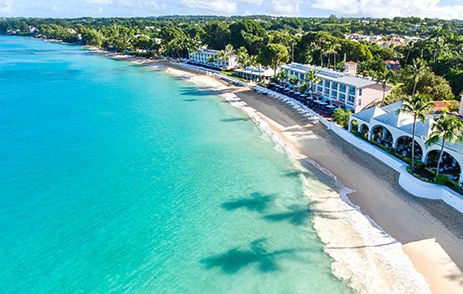
How do I book a 2022 holiday to one of the travel corridor destinations? Currently all travel corridors are closed. However, you can still plan ahead and book your 2022 or 2023 holiday through Winged Boots. We have amended our booking terms and conditions to offer additional flexibility should you have to change your holiday due to COVID-19. Plus, we have partnered with a COVID-19 testing company and a travel insurance provider that offers comprehensive policies that include specific coronavirus cover to allow you to book with confidence. Call our team of personal travel managers on 0203 816 0985 or click here to submit an online enquiry and start planning your SAFE 2022 or 2023 holiday today.
This button will take you to a short form where we'll ask about your destination and preferences. If you don't like filling in forms simply give us a call on 0203 816 0985 and we'll be happy to help you.
Join our email to receive exclusive offers and airline sales direct to your inbox. Unsubscribe anytime (but why would you want to?)
- Opeyemi Orimoloye
Dummy text... Join our email network to receive exclusive offers and notifications of airline sales direct to your inbox. Unsubscribe anytime (but why would you want to?)
- 5 months ago
Dummy text...Thanks for sharing your experience with this. Its interesting how other cultures perceive how you “should be” if you are an American.
Thanks for sharing your experience with this.
Related Posts

Where do you want to share ?
Not listed above copy the link below to share.

- The human touch
- Complete concierge service
- 24/7 out of hours contact
- BURDA LUXURY
- Prestige Online
- Pin Prestige
- TRAVEL+LEISURE

These are the countries with open travel corridors
A travel corridor, also known as a travel bubble or corona corridor, pertains to the opening of travel borders between neighbouring countries that allow their citizens to travel on certain routes to and from places with low Covid-19 infections and avoid mandatory isolation or quarantine period.
Many countries have opened travel corridors to other countries via exclusive partnership and got considerable success in re-establishing connections with each other while combating Covid-19 within their borders.
The travel corridor is seen as a way for economic recovery across various sectors. While many countries have released the list of destinations that are open to travel, most of them will require proof of vaccination or coronavirus test results upon entry.
(Note that the rules and restrictions are updated as of 29 June 2021.)
Here’s a look at some countries that have opened travel corridors to selected nations and their entry requirements.
European Union (EU)
EU has published a list of epidemiologically safe third countries that have a low rate of infection and people from these countries can enter the Schengen area from 18 June 2021. (Note that the safe list is reviewed periodically and is subject to change amidst changing infection rates and emerging variants)
You can view the updated list here .
The EU commission has opened travel from outside of the European Union and is easing restrictions for non-essential travel as well. Visitors will, however, require proof of vaccination.
The EU is also set to launch the Digital Green Pass which to restore travel within Europe. The digital pass is free of cost and will be officially implemented from 1 July 2021.
The latest list of third countries exempted from the entry ban for non-essential travel since 18 June 2021 includes Albania, Australia, Chinese regions of Hong Kong and Macao, Israel, Japan, Lebanon, New Zealand, Republic of North Macedonia, Rwanda, Serbia, Singapore, South Korea, Taiwan, Thailand and the United States of America.
Based on the ease of movement and access to public spaces, tourists from the above-listed countries can travel to:

Travellers need to present the Covid-19 Green Certificate upon entry. Face masks are compulsory to be worn outdoors and most of the public places are now open.
Those travelling from the United Kingdom and Northern Ireland should quarantine for five days with mandatory swab testing.
Full details here .
Travellers from “ Green ” countries don’t need to take any health measures if they are fully vaccinated. If not, a negative PCR or antigenic test that was taken no longer than 72 hours must be presented upon entry. Full details here .
Spain has issued new restrictions amid the spread of the new Delta variant of coronavirus. Non-vaccinated British travellers will have to produce proof of recovery or vaccination upon arrival by showing a negative PCR test or vaccination certificate.
Tourists are subjected to medical screening upon arrival at the airport. Also, those entering or transiting through Spain must duly fill an “FCS Health Control Form” before departure.
Additionally, US travellers are allowed for non-essential travel in Spain, and those who have received EMA approved vaccines – AstraZeneca, Moderna, Pfizer, and Janssen – do not require Covid-19 testing upon arrival.

Unless you are fully vaccinated, all travellers entering Greece require a negative PCR certificate for a COVID-19 test taken no less than 72 hours without the need for quarantine for most countries. All the iconic places for sightseeing are open and there might be a night curfew post 12:30 am. Full details here .
The restrictions for fully vaccinated tourists are changing amid the concerns of the new Coronavirus variant. Germany is allowing tourists from EU member states, German residents from other countries and these states associated with Schengen – Switzerland, Iceland, Norway, and Liechtenstein.
Upon entry, there is a mandatory PCR test or proof of vaccination or recovery in the form of a vaccination certificate. The proof must be presented to the airline before departure or wherever applicable. Similar to Spain, Germany only recognises vaccination certificates from EMA approved vaccines.
Quarantine obligations vary from 10 to 14 days, depending on whether you have travelled from a basic risk area or a high-risk area.
Switzerland
Switzerland has relaxed restrictions on non-essential travel for Schengen and Third Countries such as the USA, Albania or Serbia. Tourists from the Schengen area will not be required to quarantine upon arrival, and they must carry the Covid-19 test certificate. Tourists from high-risk countries with Delta variants such as India or the UK can enter Switzerland by producing negative PCR tests but need to quarantine upon entry, except those who can produce the proof of vaccination.
Switzerland has relaxed restrictions on wearing the mask outdoors, and restaurants, hotels, clubs and events can work at full capacity.
Full details here.
Albania has opened its borders to international travellers for non-essential travel without any strict restrictions or need of a negative Covid-19 test or any other special document. If a tourist shows any of the Covid-19 symptoms upon arrival, they need to comply with the laws and may have to quarantine.
The United Kingdom

The British government has a ‘traffic light’ system for travel with countries rated as ‘red’, ‘amber’ and ‘green’ depending on the rate of infections, population vaccinated against Covid-19 and prevalence of coronavirus variants.
The UK is welcoming vaccinated travellers from most countries with varying quarantine periods. The travellers need to produce a Covid-19 negative PCR test report with a quarantine period of 10 days for countries in the ‘red’ list. Find full details here.
Asia- Pacific
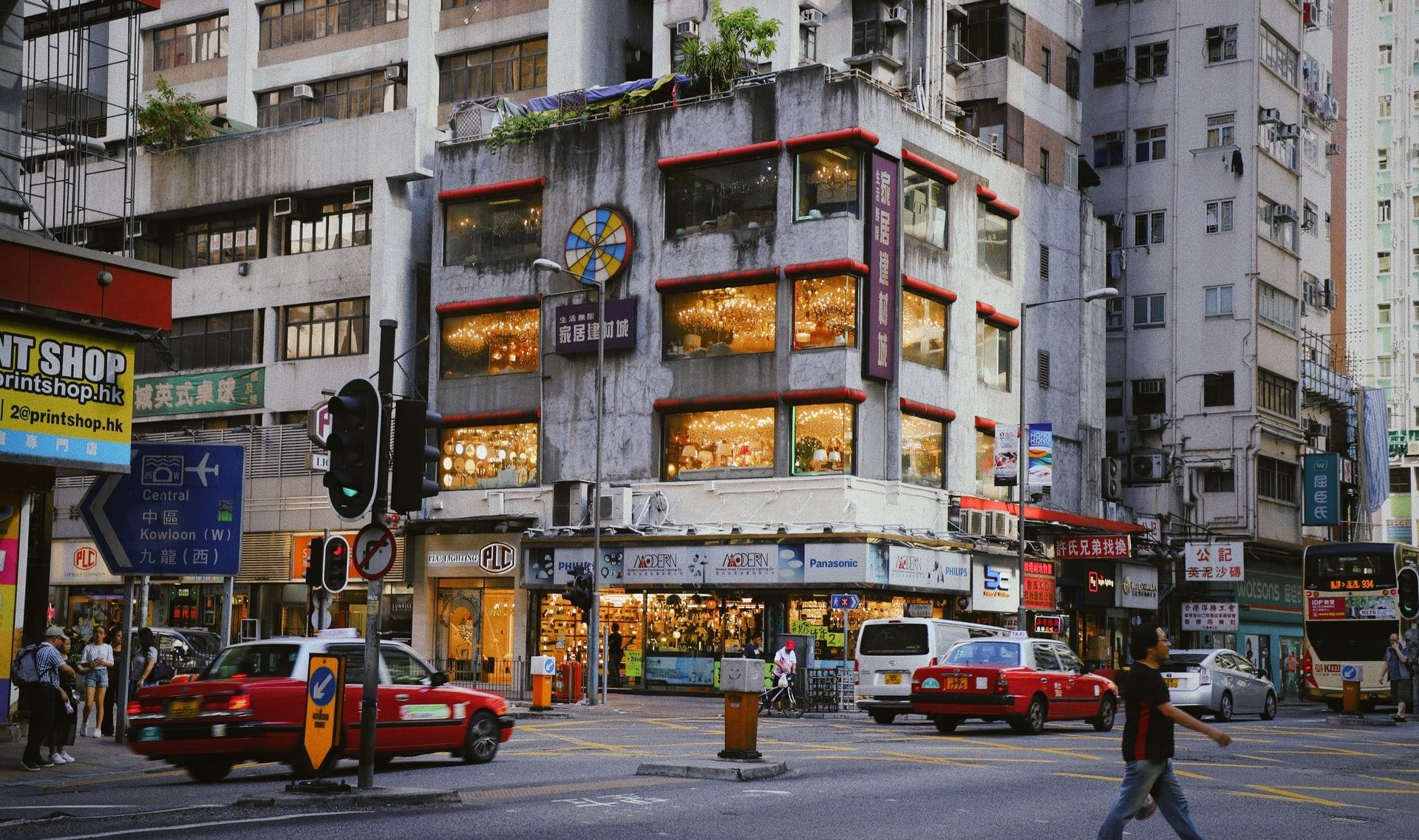
If you hold proof of vaccination and have not travelled to these countries — China, European Schengen Area, United Kingdom, Ireland, Brazil, South Africa, India and Iran within the past 14 days, you can enter with a negative COVID-19 test report no older than 72 hours before entry, without the need for self-quarantine.
For visitors from high-risk countries, partial entry is allowed with a negative Covid-19 test report no older than three days. There may be a quarantine period depending on the country of departure.
In the light of growing concerns over the new Delta variant, Hong Kong has announced the prohibition of all flights landing from the UK as the country comes under high risk-Group A1.
Travellers will need to produce a negative PCR test taken within 72 hours upon arrival. There is a mandatory quarantine period of 14 days for both Thai and foreign nationals which must be completed at one of the Alternative State Quarantine (ASQ) Hotels accredited by the country’s Ministry of Health. Full details here .
Tourists from all countries need to provide a negative PCR test report and the quarantine period may vary from 7 to 10 days. Full details here.

All tourists need to provide a negative COVID-19 test report taken no longer than 96 hours before entry and there is no quarantine period. Full details here.
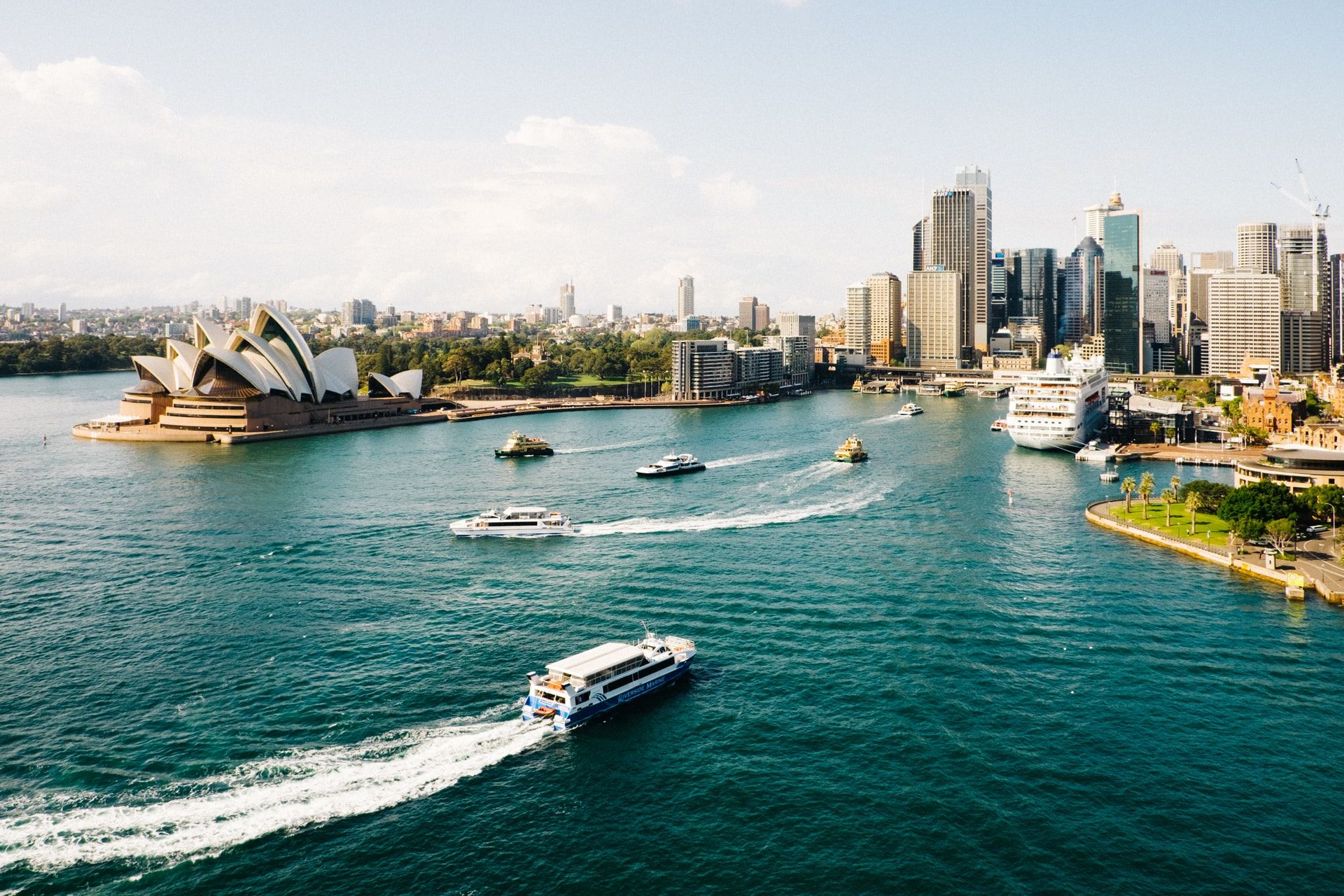
Australia has resumed its travel corridor, also known as the Trans-Tasman bubble, with New Zealand which allows two-way quarantine free movement. The airports operate ‘Green’ flights between NZ and approved safe nations.
Australia has restricted travel from ‘virus-variant zones’ such as Portugal and Russia amid the concerns of the new Delta coronavirus variant.
Australia-Singapore travel corridor is also set to open by digital merit to ease quarantine-free travel between both countries. Full details here.
The Middle East
The UAE has opened up travel corridors with countries such as Bahrain, Greece, Seychelles, Serbia and Italy. Under this agreement, travellers from these countries are required to produce vaccine certificates from the respective health authorities and will enjoy their trip without the need for quarantine. A possible travel corridor between the UAE and Maldives is also underway. Full details here .
South America
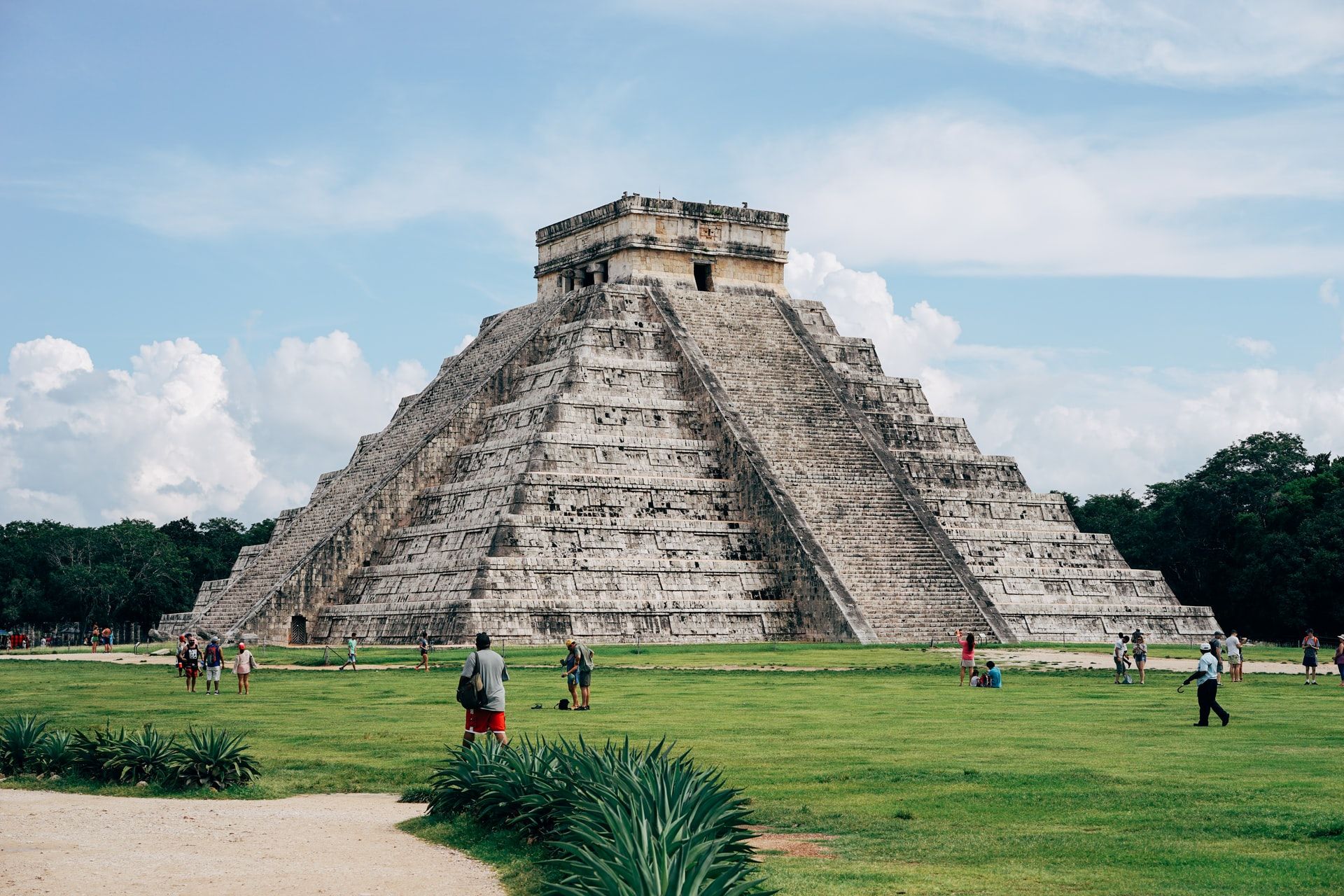
Mexico is welcoming tourists from all countries without any mandatory quarantine or testing requirement. However, tourists will be screened upon arrival and those exhibiting any COVID-19 symptoms may be asked to undergo self-quarantine. They will also have to fill out a health declaration form. Full details here.
The Caribbean
Saint lucia.
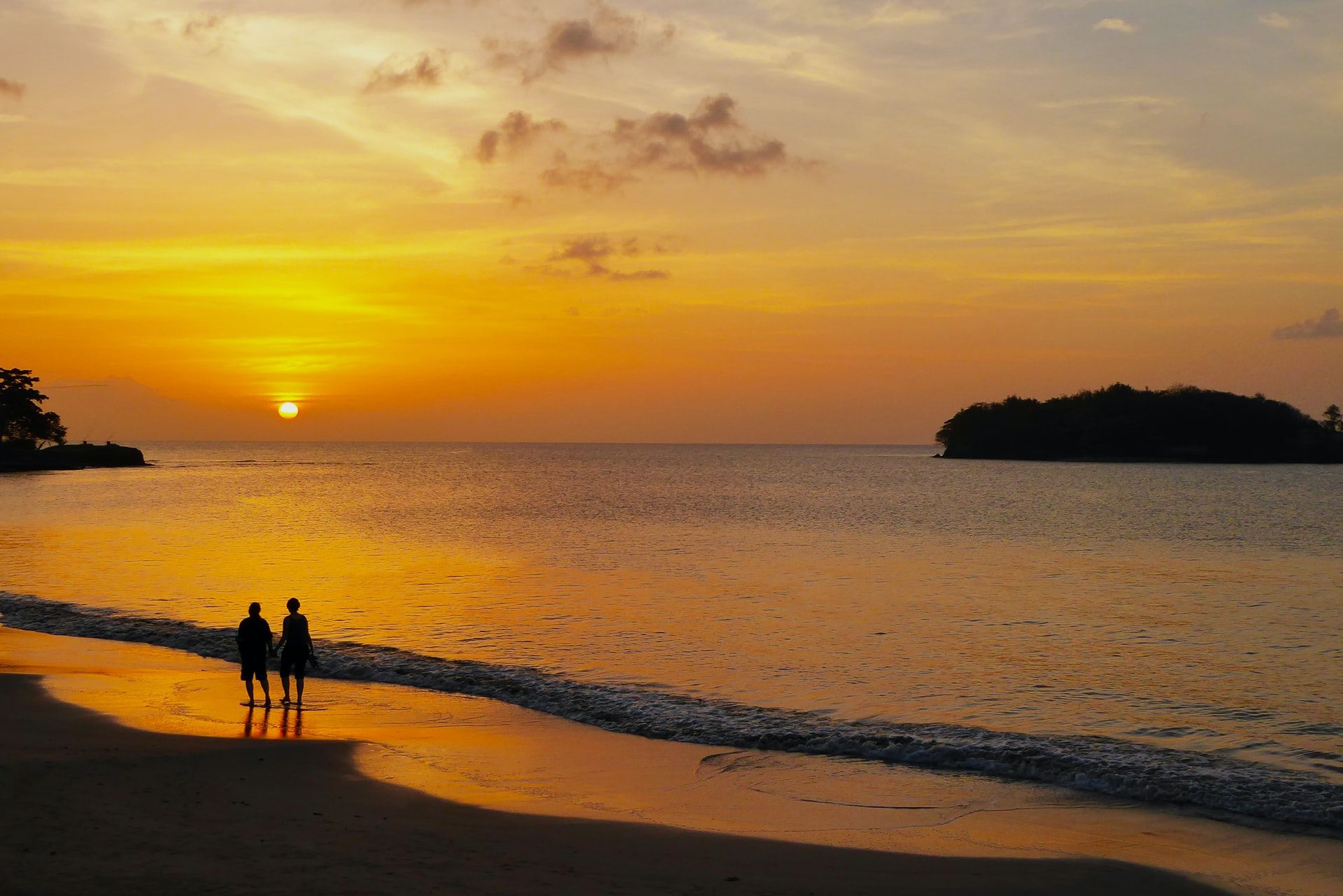
The government of Saint Lucia has opened its travel corridors or travel bubble with these 11 Caribbean countries — Antigua and Barbuda, Anguilla, Barbados, British Virgin Islands, Cayman Islands, Dominica, Grenada, Montserrat, Saint Kitts and Nevis, Saint Vincent and the Grenadines and Turks and Caicos Islands due to the low risk of infection and transmission. The government has also eased restrictions for vaccinated tourists who hold a vaccine certificate or a negative COVID-19 test report took no later than five days before travel. Full details here .
Aruba has allowed non-essential travel restrictions for all countries and opened its travel corridors for vaccinated travellers or those who can produce a negative Covid-19 PCR test upon arrival at the airport. The government of Aruba has eased restrictions for US states classified as ‘hotspot’ as well. Full details here.
Dominican Republic
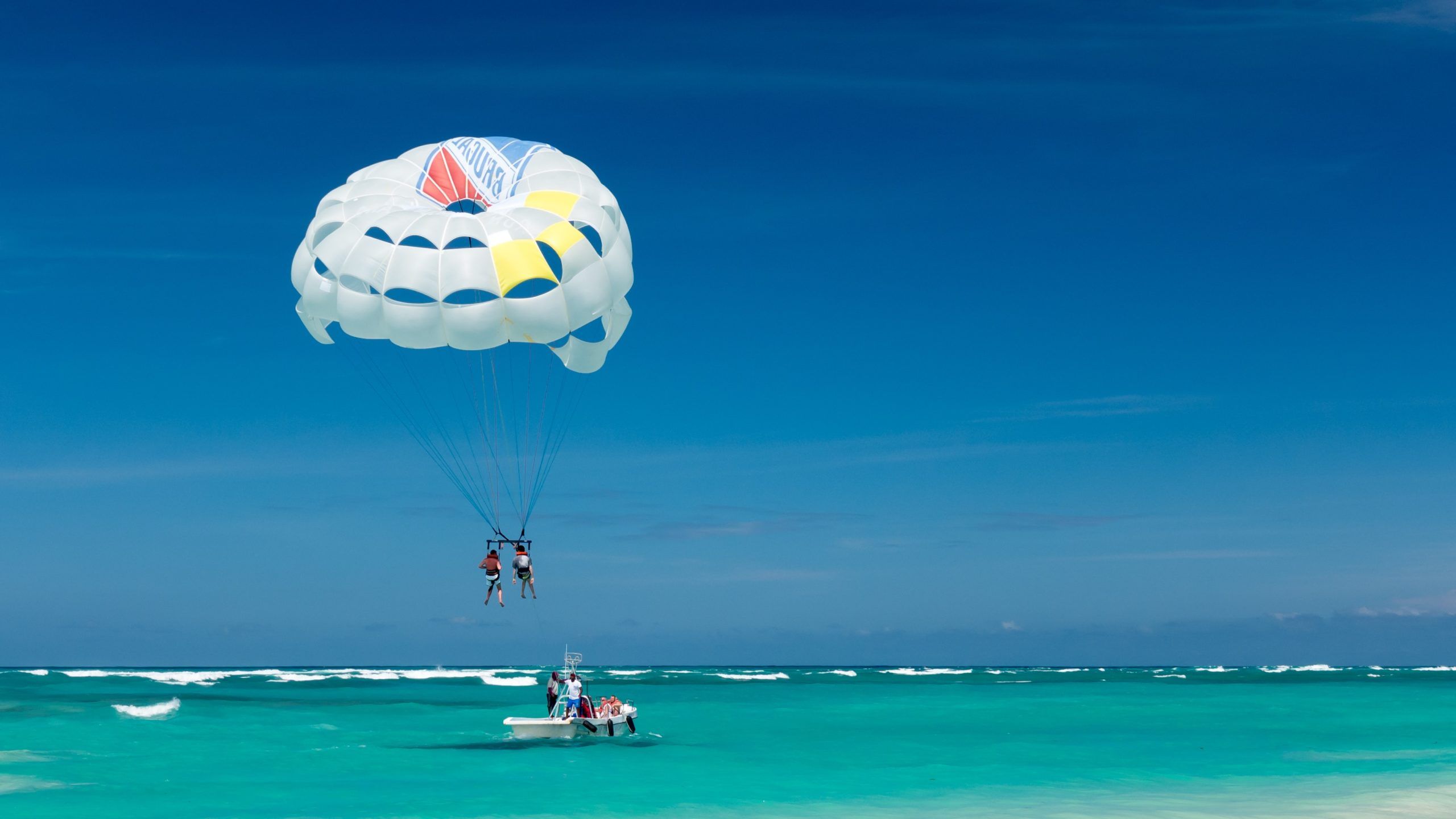
The Dominican Republic has resumed non-essential travel and most foreign tourists from countries such as United States, Canada, France, Argentina, Italy, Russia, Mexico, Chile, Colombia and Spain among others do not need to present a negative Covid-19 test upon entry.
However, a quick aleatory breath test can be performed by the authorities at the airport to ascertain if tourists have any symptoms relating to Covid-19. Tourists with valid vaccination certificates and a negative PCR test taken within 72 hours of entry will be exempted from the test. Full details here .
Seychelles has relaxed restrictions on non-essential travel with entry allowed for foreign tourists carrying valid vaccination certificates, though they still need to provide a negative PCR test without the need to go for quarantine. Full details here.
It is mandatory to wear a face mask in public while exploring Seychelles or it may result in a fine.
Amid the recent Delta coronavirus variant concerns, tourists from Nepal, India, Brazil, Bangladesh and Pakistan are not permitted to enter until further notice.
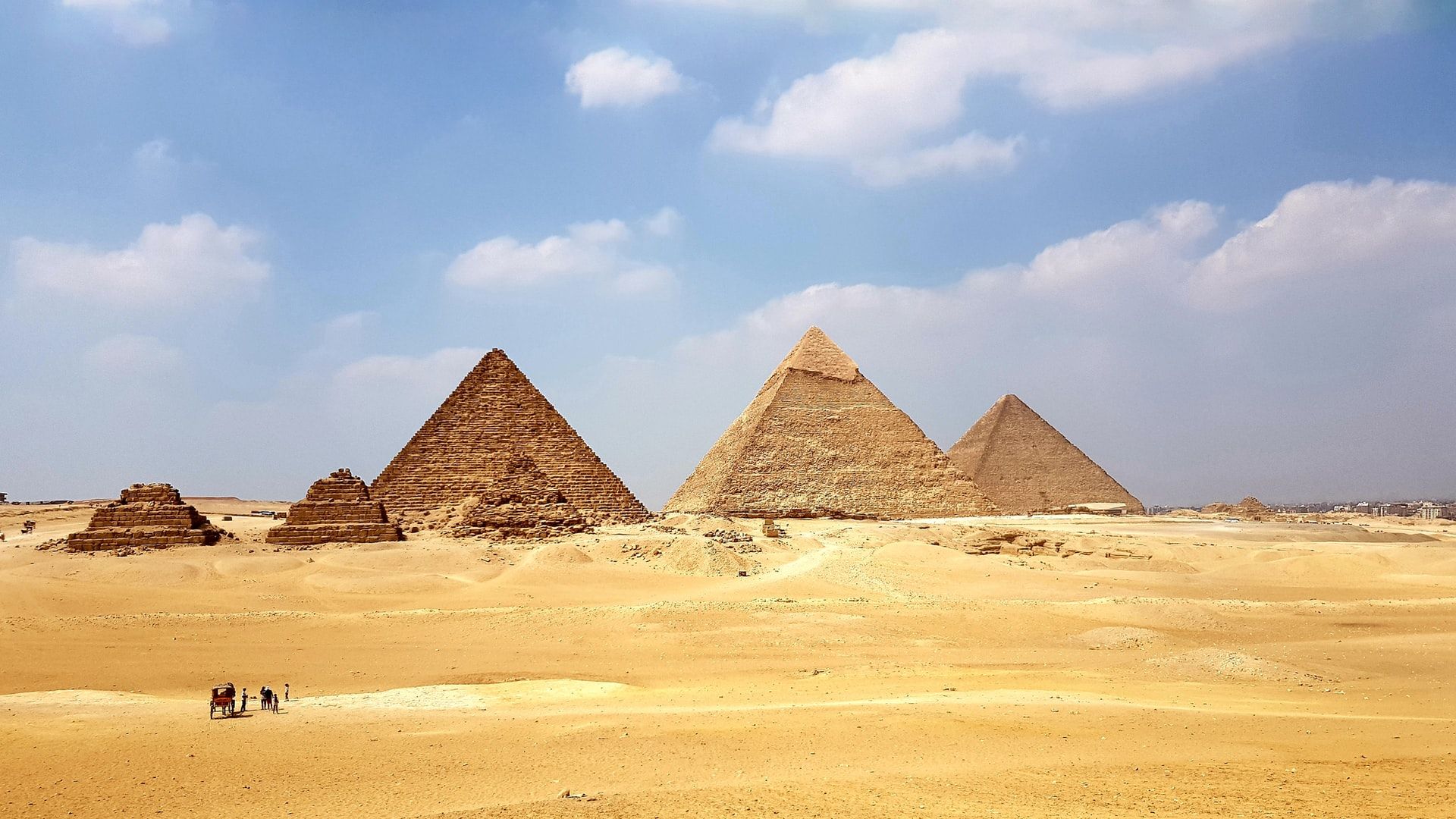
Egypt has allowed non-essential travel for fully vaccinated travellers if they carry approved vaccination certificates with valid QR codes. Tourists from high-risk countries such as Nepal, India, Bangladesh, Bhutan, Myanmar, Latin America, Pakistan, Vietnam and Sri Lanka are allowed but must have a vaccination certificate and take ID NOW Covid-19 test upon arrival. Curfews in Egypt have been discontinued and public places are open at full capacity with health measures in place. Full details here.
Hero Image: Courtesy Ketut Subiyanto/Pexels; Featured Image: Courtesy Anna Shvets/Pexels

Akriti Sharma
Full-time writer, part-time science nerd, Akriti switched gears to writing when she was at the precipice of her scientific career as a biotechnologist and never looked back. She loves to write every day and believes in pursuing stories with moral force. She is an enthusiastic traveller, photographer, chai aficionado, aspiring minimalist and a strong proponent of the Multiverse Theory.
Yes, I agree to the Privacy Policy
Most Popular

Recommended for you

Best time to visit Bhutan: Choosing the perfect seasons for your Himalayan expedition

‘Tokyo Vice’ season 1-2 shooting locations: Explore Japan’s 90s enigma on HBO Max

5 resorts in Asia that embrace the enriching philosophy of slow travel

Heads up, gamers: Abu Dhabi is building the very first esports island
For your daily updates on all things luxury, follow us at @lifestyleasiahk
Subscribe to our newsletter to get the latest updates.
You’re all set
Thank you for your subscription.

First pass was with my chainsaw, second pass was with my walk behind brush hog, third pass was to spray the ground/trail with “ground clear” herbicide.

Other than a chainsaw this is one of my most beneficial habitat tools for travel corridors.
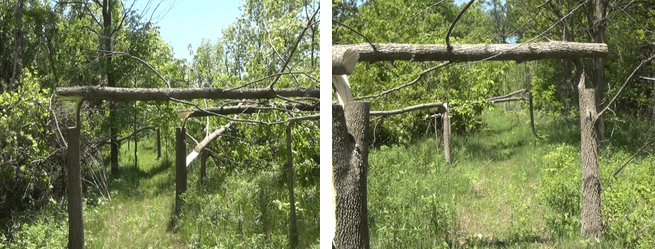
These trees were hinged over a travel corridor that I mow and maintain during the warm season.
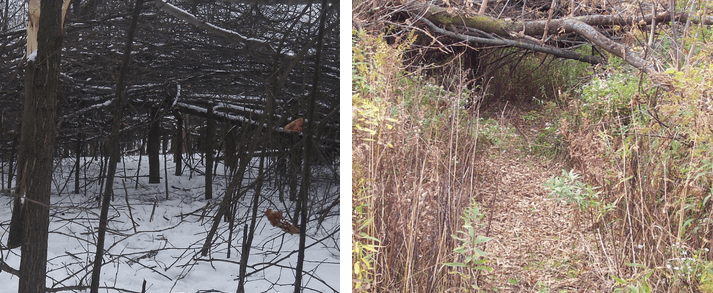
Often you need to cut travel corridors into your hinge cuttings, a new one in the making on the left, right one has been on my property for years.

These are wider travel corridors that I can drive my tractor through, but still when thick cover borders it and extreme scent control is used the deer move through them regularly.

Paths in food plots….corridors? You bet!

Left: A photo I took of a nice one antlered buck using my cut & sprayed corridor. Right: This photo shows how well the bucks will use these corridors when using mock scrapes and thick cover to induce security.

What more proof do you need? Look at the date!

This buck is walking through right where I cut a log in a travel corridor, a little work = rewards.
EXPLORE MY SERVICES

On-site Consulting and Detailed Land Management & Hunting Improvement Plans.

HS360 Full Circle Enhanced Virtual Coaching & Hunting Strategy service.

Attend one of Jakes Habitat Workshops and tour Jakes farm.

Designed with Love by Web Launch Local
Lets Get Work to Transform Your Hunting Property into a Deer Factory ”

Please fill out the form below to get started
Weather Forecasts, Road Conditions, and Weather Radar for I-95
Current & 7-day weather forecast, road conditions, and weather radar for all of US interstate I-95. All times shown in your local timezone
Weather Radar for I-95
Loading map..., customize your route with the free app.

... including targeted forecasts at the time of your arrival to each point!
Road Trip and Weather Conditions About Interstate I-95
If you're planning a road trip along the East Coast of the United States, chances are good that you'll be spending some time on Interstate I-95. This 1,908 mile long highway runs from Maine to Florida, and is the primary north-south corridor on the East Coast. Interstate I-95 is the primary north-south corridor of the East Coast of the United States. It skirts the coast of the Atlantic Ocean to cross 15 states and Washington, D.C. At the northern end, I-95 terminates at the Canadian border in Houlton, Maine, while at the southern end, I-95 terminates in Miami, Florida. What a diversity of climate!
When it comes to weather conditions, I-95 runs the gamut. In the northernmost section of the highway, near Houlton, Maine, average highs in July and August are in the low to mid 70s Fahrenheit. But as you head south, the temperatures start to rise. By the time you reach Washington, D.C., average highs in July and August are in the low 90s Fahrenheit. And further south in Richmond, Virginia, average highs are in the mid to upper 90s.
Of course, temperatures aren't the only thing to be aware of when you're driving on I-95. Depending on the time of year, you may also encounter severe weather conditions like thunderstorms, hurricanes, and even winter storms. That's why it's always a good idea to check the weather forecast before hitting the road, and to be prepared for anything.
Weather in Maine on I-95
Maine is known for its cold and unpredictable weather, especially during the winter months. Interstate I-95 runs right through the heart of the state.
In the winter months, temperatures can drop below freezing and snowfall is common. Snow accumulations can be significant. Some areas get up to 20 inches or more in a single snowstorm. Ice and freezing rain can also be a problem, making driving conditions hazardous. Drivers should be aware of the weather forecast and plan their journey accordingly.
In the warmer months, temperatures can reach the mid-80s and humidity levels can be high. Thunderstorms can be frequent during these months, so prepare for sudden downpours. Heavy rain can lead to flash flooding, so drivers should be aware of their surroundings and take extra caution.
Weather in New Hampshire on I-95
In the summer months, the temperature is usually in the 80s and 90s, with occasional thunderstorms. Fall brings cooler weather and beautiful fall foliage. Temperatures during this time are in the 60s and 70s. Winter brings snow and cold temperatures, with the thermometer often dropping below freezing. Spring is usually mild, with temperatures ranging from the 40s to the 70s.
Weather in Massachusetts on I-95
Interstate I-95 in Massachusetts is known to have unpredictable weather, due to its location on the coast. Summers can be hot and humid, while winters can be cold and snowy. Spring and autumn are usually mild, but temperatures can fluctuate often.
In the summer, temperatures can reach the high 80s and even 90s Fahrenheit. Humidity can also be high, especially along the coast. Thunderstorms are common in the afternoon and evenings.
In the winter, temperatures can drop as low as the single digits Fahrenheit. Snow is common, especially in the northern part of the state. Blizzards can occur, and roads can be icy and dangerous.
Weather in Rhode Island on I-95
Interstate I-95 is a major highway that runs through Rhode Island. The weather in the state can vary significantly depending on the season.
In the summer, Rhode Island can be hot and humid. Temperatures often reach the mid-80s and heat indices in the 90s. During the winter months, temperatures can drop to the 10s, and snowfall is common.
The spring and fall months tend to be milder and a bit more unpredictable, with temperatures ranging from the 40s to the 70s. Rainfall is common in Rhode Island throughout the year, and thunderstorms are frequent in the summer months.
Severe weather, hurricanes, floods, and tornadoes, can also occur in Rhode Island, especially during the summer and fall.
Weather in Connecticut on I-95
Connecticut is known for its changing weather, and Interstate I-95 runs right through the center of the state. During the summer months, temperatures average in the 80s with high humidity. This can make for uncomfortable and dangerous driving conditions, so drivers should take precautions to stay safe on the road.
The fall brings cooler temperatures with the occasional rain shower. Temperatures in the 70s and 80s are common, with occasional highs reaching the low 90s. In the winter, temperatures typically drop into the 30s and 40s, with chances of snow increasing as the season progresses. Drivers should plan ahead and be prepared for winter weather conditions.
Spring is usually mild, with temperatures gradually rising into the 50s and 60s. The spring rains can create slippery road conditions, so drivers should take extra caution when driving.
No matter what time of year, drivers should be prepared for any type of weather. Keep an eye on the forecast and plan accordingly. Connecticut is a beautiful state, and Interstate I-95 is a great way to explore it.
Weather in New York on I-95
The stretch of I-95 running through New York can be subject to extreme temperatures. Strong winds and a variety of precipitation from snow to rain to hail can occur.
In the winter months, temperatures can range from the single digits to the mid-30s, with occasional snowstorms which can bring over a foot of snow. Windy conditions are also common in winter, with gusts that can reach speeds up to 40 mph.
In the spring and summer, temperatures can reach the mid-80s with high humidity levels. Heavy rain is also a frequent occurrence, with downpours that can last several hours and bring over an inch of rain in a single day.
In the fall, temperatures can range from the mid-50s to the mid-70s. Windy conditions are still common in the fall, but they tend to be less severe than in the winter. Rain is also common, though thunderstorms are more likely in the late summer and early fall months.
Weather in New Jersey on I-95
During the summer months, temperatures can range from the mid-70s to the mid-80s. Humidity is high, making for hot and sticky conditions. The area also experiences frequent rain showers, with occasional severe thunderstorms.
In the fall, temperatures dip into the 50s and 60s, and the air becomes drier and more comfortable. The temperatures gradually cool off until winter, when temperatures can drop into the 20s. Snowfall is common, especially in the northern parts of the state.
Spring brings milder temperatures, with highs in the 60s and 70s. Rain and thunderstorms become more frequent as the season progresses.
Weather in Pennsylvania on I-95
Interstate I-95 is a major highway that runs through the state of Pennsylvania. In the summer months, temperatures can range from the mid-seventies to the mid-nineties. The humidity can also be high, making it feel hotter than it actually is. In the winter months, temperatures can dip into the single digits, with snow and ice making driving conditions difficult. Heavy rain and thunderstorms are also common during this time of year. The spring and fall months tend to be milder, but can still bring rain, snow, and windy conditions.
Weather in Delaware on I-95
Delaware has a humid subtropical climate that is moderated by the influence of the nearby Atlantic Ocean. During the summer, temperatures usually reach the mid-80s Fahrenheit, with a few days reaching the low 90s. In the winter, temperatures usually range from the high 30s to low 40s.
The state is vulnerable to storms and has experienced several major storms in recent years. Hurricane Irene in 2011, Hurricane Sandy in 2012, and Winter Storm Jonas in 2016 are some examples. Snowfall averages around 15 inches per year. In a particularly harsh winter, they can reach up to 30 inches.
Interstate I-95, which runs through Delaware, experiences similar weather patterns to the rest of the state. In the summer, temperatures typically reach the mid-80s and in the winter, temperatures range from the high 30s to low 40s. In the event of a storm, I-95 may be closed in order to protect the safety of drivers.
Weather in Virginia on I-95
Virginia is known for its hot, humid summers and mild winters. Interstate I-95 runs through much of the state, so depending on the time of year, travelers may experience a variety of weather conditions. In the summer months, temperatures in Virginia can reach into the 90s with high humidity and occasional thunderstorms. Winters are milder. Temperatures range from the 30s to the 50s, and snow is rare, with only a few inches accumulating each year. Spring and fall are generally mild and pleasant with temperatures in the 60s and 70s.
Weather in North Carolina on I-95
In the mountains, temperatures can range from the low 20s in the winter to the high 80s in the summer. The climate is generally mild, but occasional snow and ice storms can occur. In the coastal areas, temperatures are warmer with highs in the low 90s in the summer and lows in the mid-40s in the winter. Humidity levels tend to be higher here and rain and thunderstorms are frequent in the summer months. During the spring and fall, the weather is usually mild with temperatures in the 60s and 70s.
Weather in South Carolina on I-95
During the warmer summer months, temperatures can range from the mid 80s to the mid 90s. Humidity levels can reach as high as 80%. Rainfall is common during the summer months, with some areas experiencing as much as 6 inches of rain per month. During the winter months, temperatures can drop into the 20s and 30s, with occasional snowfall in more northern areas. Regardless of the season, travelers can expect to encounter windy conditions at times, as gusts of up to 30 miles per hour are common.
Weather in Georgia on I-95
In the winter months, temperatures on I-95 in Georgia can range from cold to very cold. Average monthly temperatures range from the mid-30s to the mid-50s. Snow and ice are possible, especially in the northern part of the state.
In the spring, temperatures on I-95 can range from mild to very warm. Average monthly temperatures range from the mid-50s to the mid-80s. Rainfall is common during this time of year, as are thunderstorms and possibly even tornadoes.
In the summer, temperatures on I-95 can range from hot to very hot. Average monthly temperatures range from the mid-80s to the low 90s. Heat indexes can reach into the triple digits, and thunderstorms and heavy rains are common.
In the fall, temperatures on I-95 can range from mild to cool. Average monthly temperatures range from the mid-60s to the mid-80s. Rainfall is common during this time of year, as are thunderstorms and possibly even hurricanes.
Weather in Florida on I-95
Interstate I-95 in Florida runs along the east coast of the state. It passes through some of the most popular cities in the region, such as Miami, Fort Lauderdale, and Jacksonville. Throughout the year, travelers along I-95 will experience a range of weather conditions. The most extreme weather occurring during the summer months.
In the summer months, Florida experiences hot and humid weather. Temperatures average in the mid- to high 80s. Thunderstorms are common in the summer. Humidity and heat provide ideal conditions for these storms.
In the winter months, temperatures cool down significantly, with average temperatures sitting in the mid- to high 60s. Despite the cooler temperatures, rain is still a common occurrence in the winter months.
The Scenic Beauty of Interstate I-95
Interstate I-95 is known for its many scenic views. The highway stretches along the coastline, providing drivers with beautiful views of the Atlantic Ocean. In some areas, the highway passes through lush green forests, while in others, it travels near sandy beaches and rocky cliffs. There are also a number of historic sites and attractions located near the highway, making it a popular road trip destination.
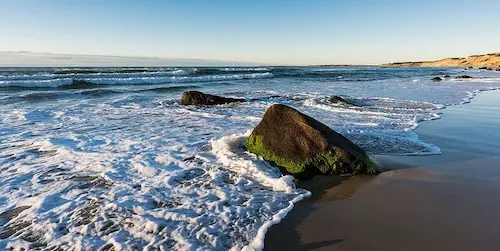
While the scenery along I-95 is one of its main attractions, the highway is also notorious for its heavy traffic and congested conditions. The highway experiences a high volume of traffic throughout the year, but congestion is especially bad during the summer months when vacationers are hitting the road.
There are a number of popular landmarks and attractions located near Interstate I-95. In North Carolina, the highway passes by the Wright Brothers National Memorial, which commemorates the first successful powered flight. Just south of the memorial is the Cape Hatteras Lighthouse, which is the tallest lighthouse in America.
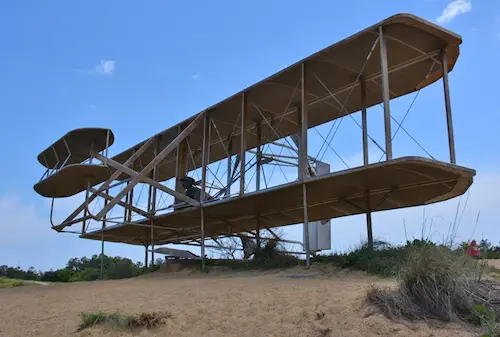
In Virginia, I-95 travels by the Colonial Williamsburg historic district. This restored area is home to dozens of 18th century buildings, including the Governors Palace. Other popular attractions near the highway include the Busch Gardens amusement park and the Kings Dominion theme park.
In Pennsylvania, I-95 passes by the Gettysburg National Military Park. This park is home to the largest collection of Civil War artifacts in the world. Other popular attractions in Pennsylvania include the Hershey chocolate factory and the Liberty Bell Center.
In New York, I-95 travels by the Statue of Liberty and the Ellis Island National Museum. These popular tourist destinations offer visitors amazing views of the New York City skyline. The highway also passes nearby Times Square and the Empire State Building.
Major Junctions of I-95
- I-95 South begins at the Houlton–Woodstock Border Crossing into Canada at Houlton, Maine.
- I-95 has a major junction at I-395 in Bangor, Maine.
- I-95 has major junctions at I-295 and I-495 in Portland, Maine.
- I-95 has a major junction at I-195 in Saco, Maine.
In New Hampshire:
- I-95 has a major junction at US-4/Spaulding Turnpike in Portsmouth, New Hampshire.
In Massachusetts:
- I-95 has a major junction at I-495 in Amesbury, Massachusetts.
- I-95 has a major junction at I-93 in Reading, Massachusetts.
- I-95 has a major junction at I-90 in Weston, Massachusetts.
- I-95 has a major junction at I-93 in Canton, Massachusetts.
- I-95 has a major junction at I-492 in Mansfield, Massachusetts.
- I-95 has a major junction at I-295 in Attleboro, Massachusetts.
In Rhode Island:
- I-95 has a major junction at I-195 in Providence, Rhode Island.
- I-95 has a major junction at I-295 in Warwick, Rhode Island.
In Connecticut:
- I-95 has a major junction at I-395 in East Lyme, Connecticut.
- I-95 has a major junction at I-91 in New Haven, Connecticut.
In New York:
- I-95 has a major junction at I-287 in Rye, New York.
- I-95 has major junctions at I-278, I-295, and I-678 in Throggs Neck, New York.
- I-95 has a major junction at I-87 in The Bronx, New York.
In New Jersey:
- I-95 has a major junction at I-80 in Teaneck, New Jersey.
- I-95 has a major junction at I-280 in Kearny, New Jersey.
- I-95 has a major junction at I-78 in Newark, New Jersey.
- I-95 has a major junction at I-278 in Elizabeth, New Jersey.
- I-95 has a major junction at I-287 in Edison Township, New Jersey.
- I-95 has a major junction at I-195 in Robbinsville Township, New Jersey.
In Pennsylvania:
- I-95 has major junctions at I-295 and I-276 near Bristol, Pennsylvania.
- I-95 has major junctions at I-76 and I-676 in Philadelphia, Pennsylvania.
- I-95 has a major junction at I-476 in Ridley Township, Pennsylvania.
In Delaware:
- I-95 has major junctions at I-294 and I-495 in Newport, Delaware.
In Maryland:
- I-95 has major junctions at I-195, I-395, I-695, and I-895 in Baltimore, Maryland.
- I-95 has a major junction at I-495 near Adelphi, Maryland.
- I-95 has a major junction at I-295 near Forest Heights, Maryland.
In Virginia:
- I-95 has major junctions at I-395 and I-495 in Springfield, Virginia.
- I-95 has major junctions at I-64 and I-195 in Richmond, Virginia.
- I-95 has major junctions at I-85 and I-295 in Petersburg, Virginia.
In North Carolina:
- I-95 has major junctions at I-587 and I-795 in Wilson, North Carolina.
- I-95 has a major junction at I-40 in Benson, North Carolina.
- I-95 has a major junction at I-295 in Eastover, North Carolina.
- I-95 has a major junction at I-74 near Lumberton, North Carolina.
In South Carolina:
- I-95 has a major junction at I-20 in Florence, South Carolina.
- I-95 has a major junction at I-26 near Harleyville, South Carolina.
In Georgia:
- I-95 has a major junction at I-16 in Savannah, Georgia.
In Florida:
- I-95 has major junctions at I-10 and I-295 in Jacksonville, Florida.
- I-95 has a major junction at I-4 in Daytona Beach, Florida.
- I-95 has a major junction at I-595 in Fort Lauderdale, Florida.
- I-95 North begins at a junction with US-1 in Miami, Florida.
This map shows the current & 7-day weather forecast, road conditions, and weather radar for all of US interstate I-95.
Travel Corridor Treestand Setups For Deer
During the Summer months there is so much to do, that we often ignore that hanging stands in the heat with sweat dripping from our chins, may just be the #1 time for perfecting our treestand setups. In fact, During the Summer months our "deer work" is often neglected in favor of the more traditional periods of time, such as right after the season ends or right before it begins. The Summer offers the perfect balance between too late and too early, but regardless of whether you reading this in January or July, there is something that you can be doing right now to enhance your treestand setups: Creating travel corridors for deer .
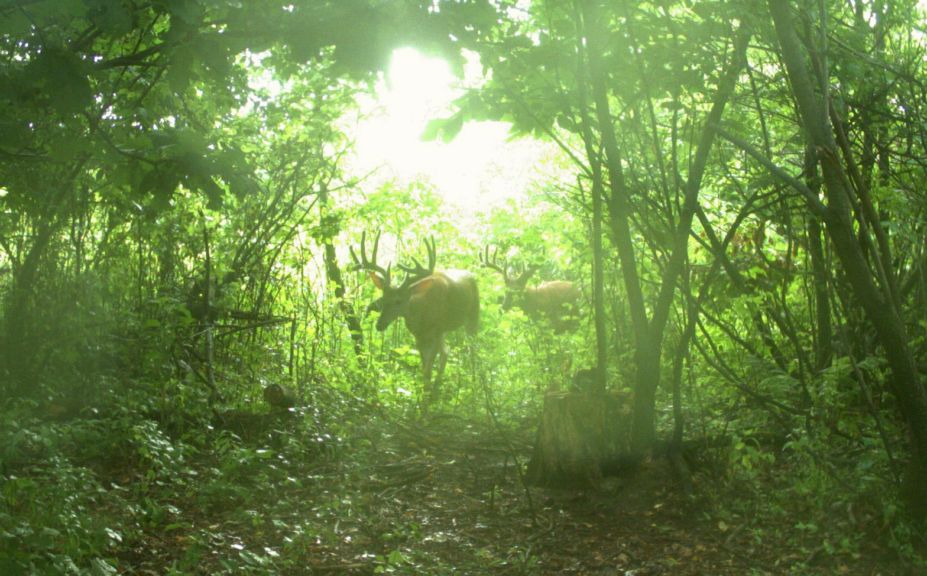
*Even the light cuttings completed in this locations, created a “cattle path” of deer traffic opportunity! However it is important to have enough side cover to hide the deer movements within. If you are considering any tunneled deer travel corridors they may not be a very good option, so before you create any make sure to read, “Hoop Dream Corridors” .
Obviously when you are hanging your next setup, you are expecting deer to travel by your treestand on the way from Point A to Point B. However, have you ever enhanced your stand locations to make sure that deer are even more likely to travel where you want them too? From subtle to significant, there are several ways to make sure that your next monster buck is within your wheelhouse of bowhunting opportunity.
Can't Miss Treestand Setups
The most important aspect of creating a corridor to enhance a stand location, is the stand location itself. I suggest you find a tree that gives you great access through non-deer habitat, with a definitive wind advantage. After the stand location is found, it is time to enhance the movement within your preferred shooting range for a shot with a bow. From rope to handsaws to chainsaws, here are several ways to perfect your ambush:
I love the thick, dense, tangled mess of early successional growth, grasses and shrubs. Often, the diversity of low brush or grasses offers both food or cover which is ideal for whitetails. At the same time, these areas can be extremely easy to mow a trail through to connect bedding areas to major food sources. At times a rotary brush cutter and tractor combo can do the trick, but even a hand held trimmer with a circular blade attachment and chainsaw, can be all that you need.
2) Trimming:
With a handsaw, outstanding trails can be created for deer through young saplings and conifer growth. Even trails created that only extend 40-50 yards from either side of the stand, can be very useful.
*Advanced treestand setups and other hunting strategies are covered in my “Whitetail Success By Design” book series, which details how to scout, plant, cut, prepare, forecast for and consistently kill mature bucks.
3) Hinge Cutting:
Often when hinge cutting trees to fall away and perpendicular to your corridor, subtle is best. Cuts can be made between 5 and 50' away from the trail, while creating the only path a deer can choose for travel right by your treestand setup. By limiting your cutting, you can expect the location to regenerate and fill in, creating an organized and hidden mess to facilitate a high quality corridor surrounded by browse.
4) Heavy Timber Cuts:
With low quality stands of mature timber, sometimes the best way is to drop the timber as safely as possible, and then to chainsaw a 4-6' wide trail through the middle of it all. I personally like to make any deer trail through a corridor so that it is clean enough to ride a mountain bike through, and that includes clearing a path through logs and large tree-top debris.
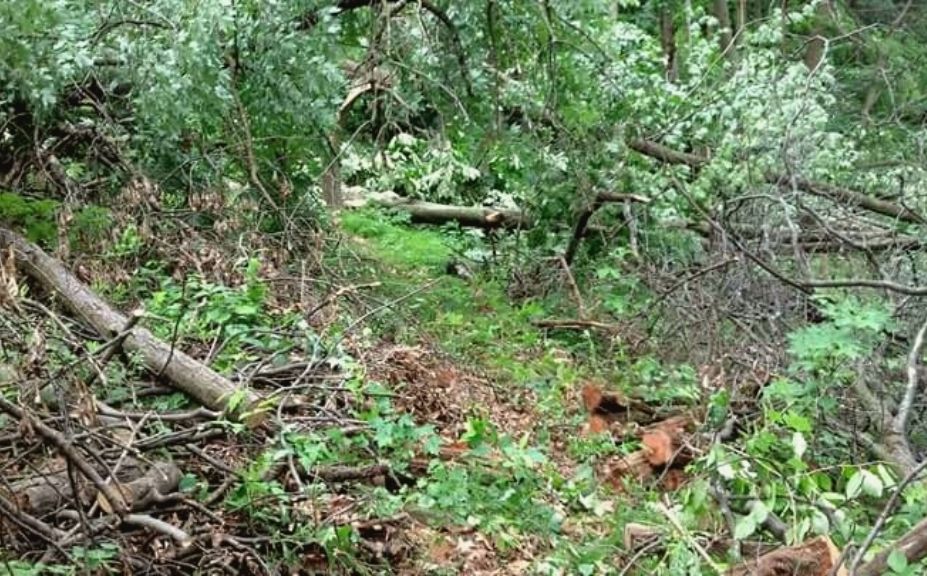
*Sometimes the best combinations of travel corridor treestand setup enhancements, is to use a combination of tools and cuttings to get the job done. This particular deer trail was created with a DR style brushcutter and a chainsaw, using hand trimming, hinge cutting and heavy timber cutting techniques. You can see a lot of this particular project completed in 2013, by reading “Whitetail Travel Corridor Creations” .
Are you in a pinch?
Enhancing your treestand setups can take place subtly, quickly and effectively. Even just bending over a few saplings and tying them down with a short piece of rope can be all that you need to pinch deer into the perfect position for a shot. When corridors and massive cuttings are not an option and your desire is to create narrow constrictions that are barely noticeable, then bending and tying can be completed just before and after your sweetspot of archery capabilities to heavily tilt the odds in your favor. Effectiveness doesn't need to be measured purely in how many trees you cut down.
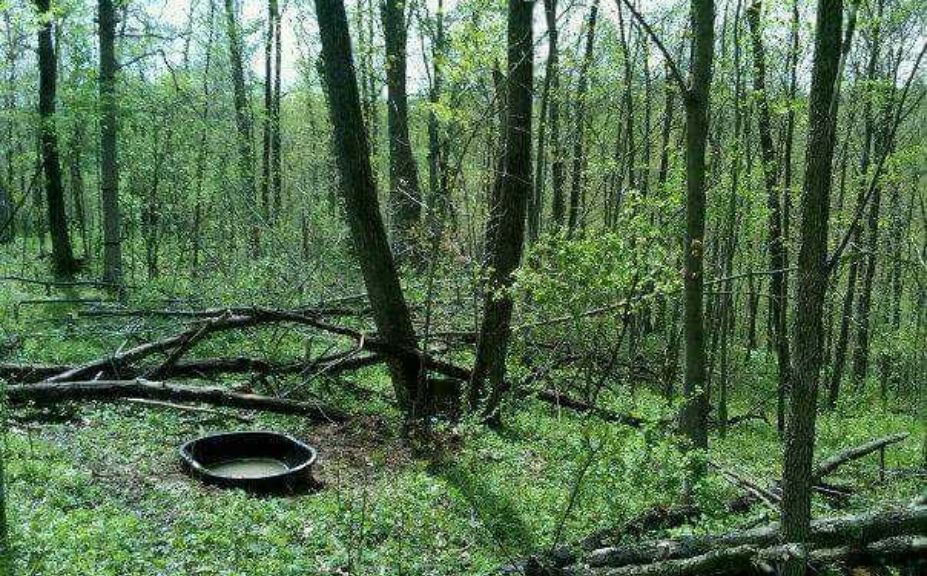
*Even using a couple of well placed brush piles along with a hinge cut or two, can help to pinch deer into your sweetspot of archery comfort. This is particularily helpful when trying to funnel deer into a waterhole location without the fear of them getting too close or too far. For an easy whitetail waterhole recipe to enhance your favorite treestand setup, check out “Easy Waterhole Setups” .
Whether you are dripping sweat or growing icicles, now is the time to create some travel corridors or pinch points for your treestand setups. By the beginning of the season your efforts will long be forgotten by even the wariest of big bucks. Just about any stand location can be improved; are you ready?
Related Blogs
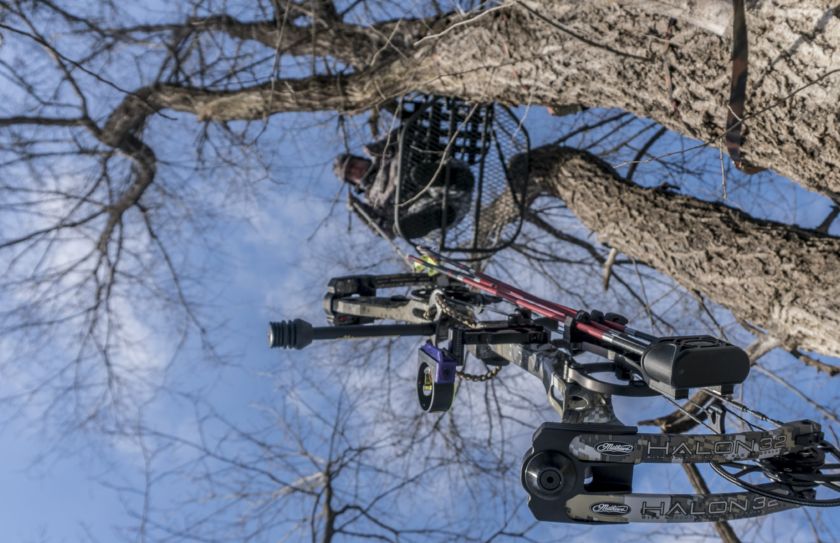
How To Choose A Treestand
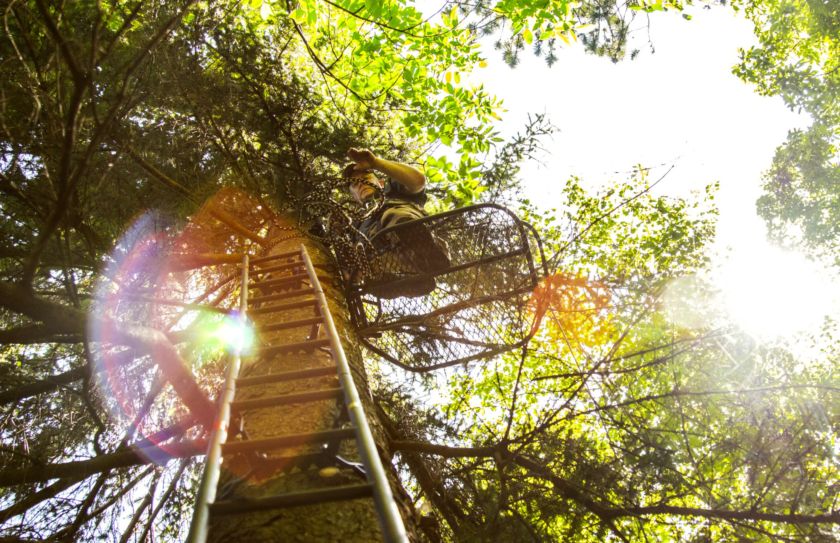
Treestand Shooting Tips For Mature Bucks

Mock Scrapes for Bowstand Enhancement
Free 30 day trial, exodus trail cameras.
Our Passion
Our purpose.
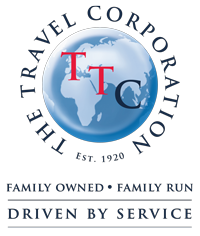
Passion For Travel
- inherent Passion
- Travel Styles
- Destinations
Travel Inspiration
- Immersive Experiences
- Arrived Magazine
Specialized Travel
- Group Travel
Spreading our passion and love of travel
To take your breath away
TTC Sustainability
- impactful Purpose
- How We Tread Right
- MAKE TRAVEL MATTER® Experiences
- Sustainability Awards
- TreadRight Foundation
Learn how we Make Travel Matter
MAKE TRAVEL MATTER EXPERIENCES
Travel that makes a difference
Our Culture
- Our Offices
- incredible People
- TTC I.D.E.A.
Our Heritage
- Stanley Tollman
Learn about what makes our team unique
Discover your career path in travel
SIGHTSEEING
Tailor-made, sustainability.

TTC SUSTAINABILITY
Our passion, our purpose, passion for travel, travel inspiration, specialized travel.
- Group-Travel
- Our DMC’s
OUR CULTURE
Our heritage.
- Thoughts from our Chairman
- MTM Experiences

Travel Corridors – What You Need to Know
by Vanessa Budah | 09 25, 2020 | TTC
Sep 25, 2020 | TTC
by Vanessa Budah
Travel Corridors and bubbles have been the catch phrase of 2020, but where to? And where to that doesn’t require a mandatory 14-day quarantine due to COVID-19?
As the Northern Hemisphere enters the beautiful hues of red, orange and yellow and the Southern Hemisphere steps into spring and gears up for summer, after being grounded for so long and some countries only coming out of lockdown now, many of us are itching to explore outside our own perimeter. So what’s permitted?
UK Travel Corridors
Well if you’re English, you’re one of the lucky ones! The UK government has worked on making the travel corridor possible to more than 60 countries. The rules vary in Scotland, Wales and Northern Ireland. All arrivals will also need to provide contact details on arriving home via plane, train or ship.
Countries that are deemed ‘low risk’ that you can visit without having to self-isolate for 14-days include:
Antigua and Barbuda, Australia, Barbados, Bermuda, British Indian Ocean Territory, British Virgin Island, Brunei, Cayman Islands, The Channel Islands, Cyprus, Denmark, British Antarctic Territory, Estonia, Dominica, Falkland Islands, Finland, Germany, Greece (excluding the islands of Lesvos, Tinos, Serifos, Mykonos, Santorini, Crete and Zante), Greenland, Hong Kong, Iceland, Ireland, Italy, Japan, Malaysia, Mauritius, New Zealand, Norway, Poland, Slovakia, Sweden, Thailand, Turkey, Vatican City State and more.
Although Australia and New Zealand are on the list, there are still a few countries not accepting international travelers, so check your destination carefully before booking.
You can check the UK government website for the latest on UK travel corridors or refer to our recent post on the most up-to-date travel restrictions .
Australia & the Trans-Tasman Bubble
In Australia, state borders are starting to lift to allow for interstate travel. At this stage, however, it’s likely inbound travellers will still have to quarantine for 14-days until July 2021, including Australian citizens. As for the Trans-Tasman bubble to New Zealand, hopefully this happens soon once Australia aligns the opening of all its domestic borders to allow for seamless travel between states.
North America Travel Update
In North America, the border between the United States and Canada is closed until the end of October and potentially until early 2021 though Canadians can still fly to the US – as long as they haven’t travelled to Brazil, China, Iran, Ireland, the UK or countries in the Schengen Area for 14 days prior – the restrictions exist for land travel primarily. Province-to-province travel is permitted in between most Canadian provinces like British Columbia, Ontario and Quebec and in the US, some states are re-opening and allowing for interstate travel. As of September 2020, Canadians can also travel to many countries in Europe including Spain, France, Portugal and Greece along with select countries in the Caribbean. In early August, the US State Department lifted its ‘Level 4’ warning against any international travel. For Americans, Canada and most of Europe, Asia and Oceania are largely inaccessible for travel but as of September 22, 2020, some countries have started welcoming US travelers if they adhere to specific public health guidelines. Countries that have loosened in-bound travel restrictions with enforced protocols include: Brazil, Cambodia, Colombia, Costa Rica, Croatia, Ecuador, Egypt, Ireland, Kenya, Malta, Montenegro, Morocco, Namibia, Rwanda, Tanzania, Turkey, the UK and Serbia.
And currently, New York and the UK are looking into a travel corridor as Virgin Atlantic COO Corneel Koster states, “the opening of the US borders and removal of quarantine is imperative to recovery”.
For easy-to-access info on travel corridors and coronavirus travel restrictions, visit any of these links: Trafalgar ; Uniworld Boutique River Cruises ; Insight Vacations ; Contiki .
Latest articles

Best Girls Getaways Around the World for 2021
by Vanessa Budah | January 22, 2021 | TTC | 0 Comments
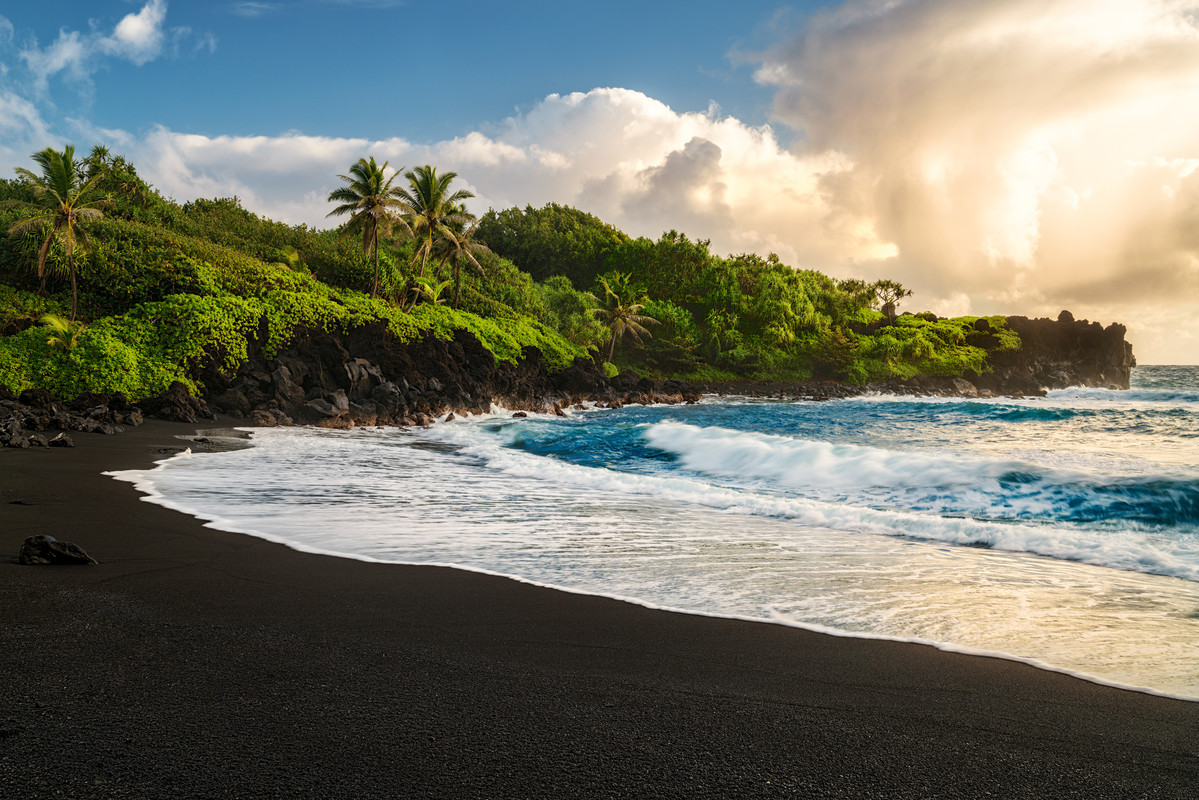
Top 10 Best Islands to Visit in The World in 2021
by Vanessa Budah | January 15, 2021 | TTC | 0 Comments
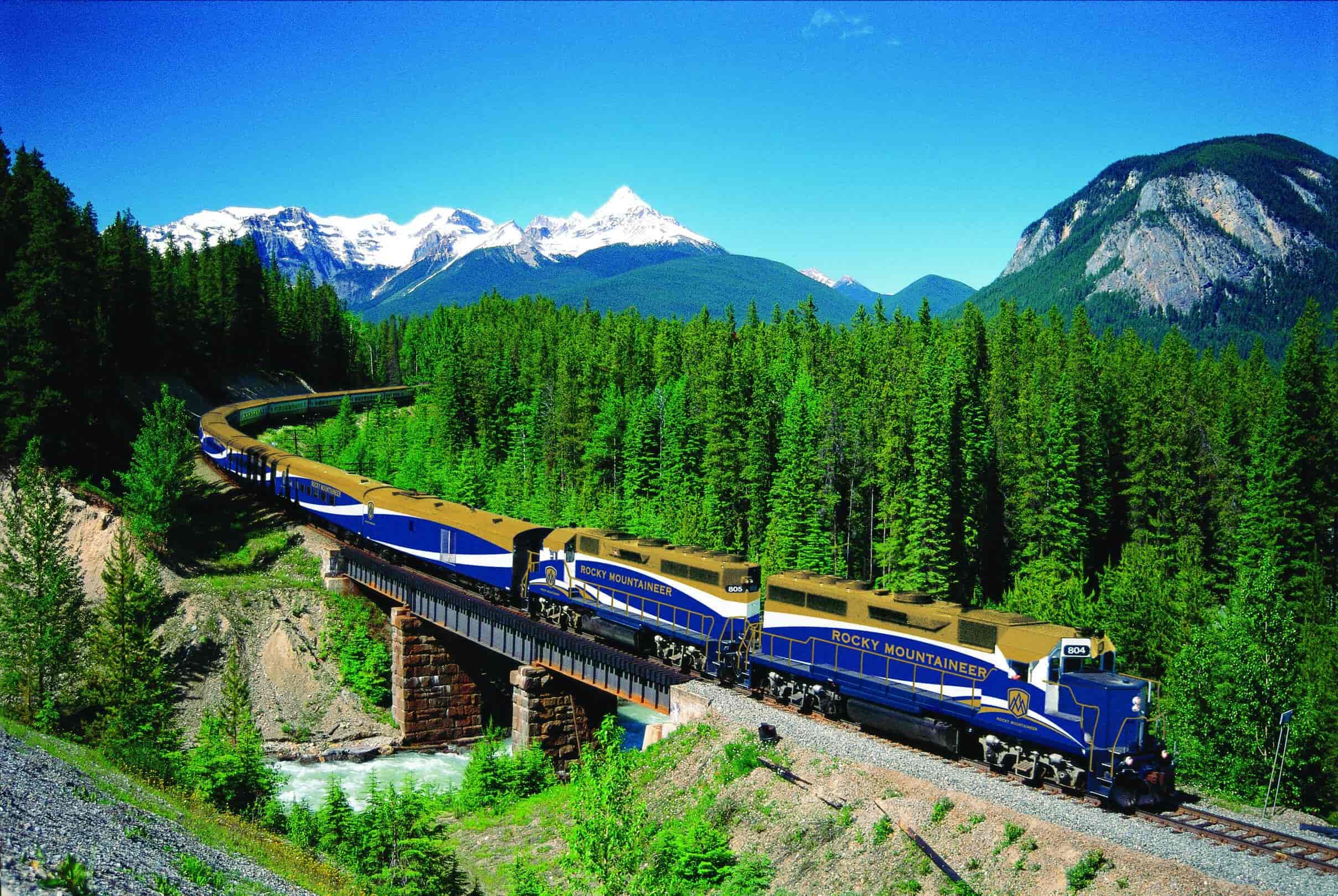
Top Train Travel Trips from Around the World to Get You on the Right Track
by Laura Hodges | November 25, 2020 | TTC | 0 Comments
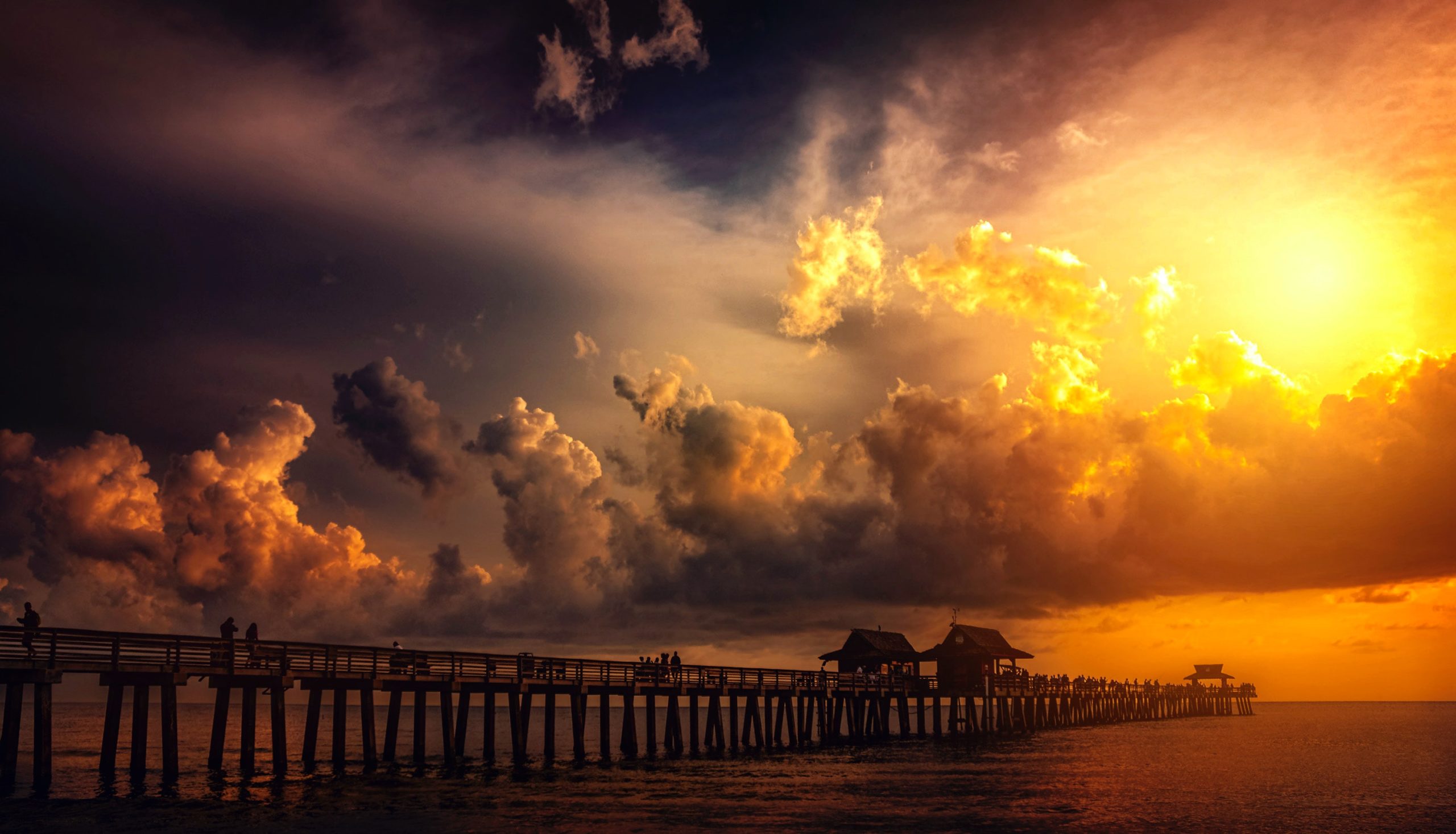
A Bridge From The Past To The Future
by The Tollman Family | December 4, 2020 | TTC , TTC 100 | 0 Comments
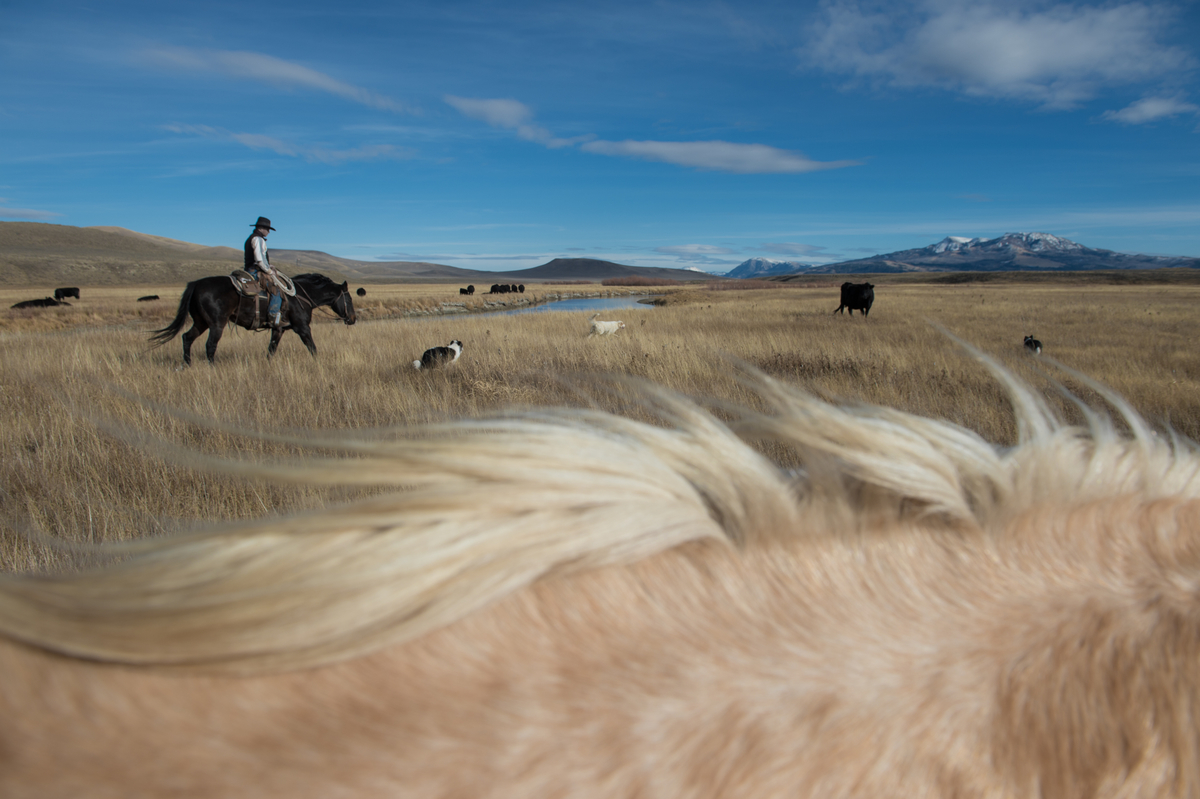
When We Travel Again
by TreadRight’s Ambassadors | November 17, 2020 | TTC , TTC 100 | 0 Comments
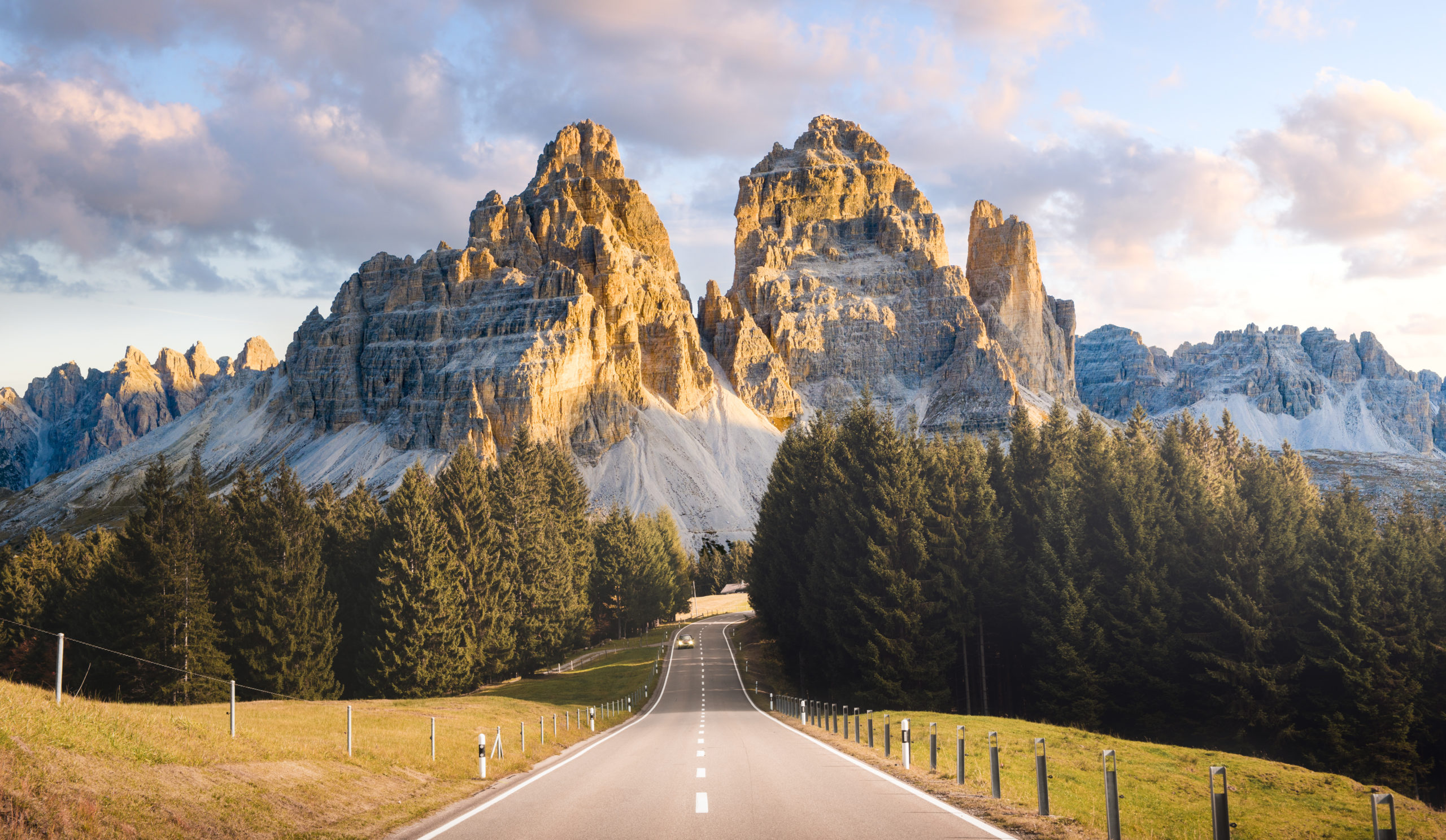
What is a Destination Management Company (DMC)?
by Marie Anne MacRae | May 7, 2021 | TTC | 0 Comments

Why Use a Destination Management Company (DMC)?
by Marie Anne MacRae | June 9, 2021 | TTC | 0 Comments

How to Create a Travel Package Product in Greece
by Marie Anne MacRae | June 24, 2021 | TTC | 0 Comments

How Does a White-Label Travel Product Work?
by Marie Anne MacRae | July 5, 2021 | TTC | 0 Comments

Five Travel Experiences Trending in 2021
by Marie Anne MacRae | July 14, 2021 | TTC | 0 Comments
This website uses cookies. We use cookies to analyse our traffic, enhance our website’s functionality and performance and better experience for our users. If you require more information please view our cookie policy .
Winter is here! Check out the winter wonderlands at these 5 amazing winter destinations in Montana
- Travel Guide
How To Visit Afghanistan’s Wakhan Corridor (Safety, Visas, Cost)
Published: September 9, 2023
Modified: December 27, 2023
by Domini Lane
- Plan Your Trip
- Travel Tips
Introduction
Hidden deep within the rugged mountains of Afghanistan lies a remote and captivating region known as the Wakhan Corridor. This narrow strip of land stretches over 200 kilometers, sandwiched between Tajikistan, Pakistan, and China’s Xinjiang province. With its stunning landscapes, rich history, and unique cultural experiences, the Wakhan Corridor has been gaining attention among adventurous travelers seeking off-the-beaten-path destinations.
Despite its remoteness and reputation for being a challenging destination, the Wakhan Corridor offers a glimpse into a world untouched by modernity. This article serves as a comprehensive guide to help you plan your visit to this extraordinary region.
From the majestic Hindu Kush mountains to the breathtaking Wakhan River, the Wakhan Corridor boasts an unrivaled natural beauty. Snow-capped peaks, pristine lakes, and rugged valleys create a picturesque setting that lures nature enthusiasts and photographers from around the globe. Whether you want to trek to high-altitude lakes, spot wildlife in the Wakhan National Park, or simply immerse yourself in the tranquility of the surroundings, the Wakhan Corridor has something for everyone.
Beyond its natural wonders, the Wakhan Corridor is steeped in history. It has served as a vital trade route between Central Asia and South Asia for centuries, connecting the ancient civilizations of the Silk Road. Ruins, fortresses, and ancient settlements attest to the region’s historical significance.
It is important to note that the security situation in Afghanistan is constantly evolving. Before embarking on your journey to the Wakhan Corridor, it is crucial to stay updated on the latest travel advisories and consult with reputable travel agencies specialized in this region. Additionally, being well-prepared and knowledgeable about the necessary safety measures is essential to ensure a safe and enjoyable experience in the Wakhan Corridor.
In the following sections, we will delve into the safety measures, visa requirements, estimated costs, accommodation options, transportation, attractions, as well as tips for interacting with the local communities in the Wakhan Corridor. So, sit back, relax, and let us guide you through this extraordinary adventure.
Background and History of the Wakhan Corridor
The Wakhan Corridor has a rich and fascinating history that dates back thousands of years. It has been a strategic crossroads for various civilizations and empires, leaving behind a legacy that can still be seen and felt today.
Located in the northeastern part of Afghanistan, the Wakhan Corridor has served as a crucial trade route between Central Asia and South Asia. Its strategic location along the ancient Silk Road created a thriving exchange of goods, culture, and ideas between the East and the West.
The Wakhan Corridor takes its name from the Wakhan River, which runs through the region. The river separates the majestic Pamir Mountains to the north from the Hindu Kush Mountains to the south. This geographical isolation has played a significant role in preserving the unique culture and traditions of the Wakhi people, who are the primary inhabitants of the corridor.
Throughout history, the Wakhan Corridor has been under the control of various empires and kingdoms. From the Achaemenid Empire to the Kushan Empire, and later the Timurid Empire, the Wakhan Corridor has been a coveted region for its strategic importance and lucrative trade routes.
In the 19th century, during the Great Game rivalry between the British and Russian Empires, the Wakhan Corridor became a buffer zone between the two powers. It was demarcated as a neutral zone, ensuring a separation between British India and the Russian territories of Central Asia.
During the Soviet-Afghan War in the 1980s, the Wakhan Corridor was largely spared from the intense conflict due to its geographical isolation. However, it was not completely untouched, as some refugees entered the region seeking safety from the war.
Today, the Wakhan Corridor remains a remote and sparsely inhabited region. Its unique blend of stunning landscapes, cultural heritage, and strategic significance continue to attract intrepid travelers willing to explore this hidden gem.
While the region has faced its share of challenges and has been affected by the ongoing conflict in Afghanistan, efforts are being made to promote sustainable tourism in the Wakhan Corridor. Tourism can contribute to the economic development of the communities in the region, providing much-needed income and livelihood opportunities.
In the next sections, we will delve into the safety measures, visa requirements, estimated costs, accommodation options, transportation, attractions, and tips for visiting the Wakhan Corridor. So, keep reading to discover how you can embark on this incredible adventure while ensuring a safe and enriching experience.
Safety Measures and Precautions for Visiting the Wakhan Corridor
Visiting the Wakhan Corridor requires careful planning and adherence to specific safety measures to ensure a safe and enjoyable experience. While the security situation in Afghanistan is complex and constantly evolving, with proper precautions and up-to-date information, it is possible to minimize risks and explore this unique region.
Here are some important safety measures and precautions to consider when visiting the Wakhan Corridor:
1. Stay informed: Before your trip, thoroughly research the security situation in the area. Stay updated with travel advisories issued by your government and consult with reputable travel agencies that specialize in the region. It is essential to have the latest information on any potential risks or security concerns.
2. Travel with a trusted guide: It is highly recommended to hire an experienced local guide who is familiar with the area and can provide valuable insights and assistance. A knowledgeable guide can help navigate through challenging terrains, communicate with locals, and ensure a smooth and safe travel experience.
3. Follow local customs and traditions: Respecting the local culture and customs is crucial to establish positive interactions with the communities in the Wakhan Corridor. Familiarize yourself with the local etiquette, dress modestly, and seek permission before taking photographs, especially of individuals or religious sites.
4. Dress appropriately: It is important to dress conservatively while visiting the Wakhan Corridor. Both men and women should avoid wearing revealing or provocative clothing, as it may offend the local population who adhere to more conservative dress norms.
5. Be cautious of your surroundings: While the Wakhan Corridor is generally safe for travelers, it is always advisable to remain vigilant and aware of your surroundings. Keep an eye out for any potential suspicious activities and report any concerns to the local authorities or your guide.
6. Secure travel insurance: Ensure that you have comprehensive travel insurance that covers medical emergencies and evacuation. In the event of any unforeseen incidents, having appropriate insurance will provide peace of mind and financial protection.
7. Keep emergency contact information: Carry a list of emergency contact numbers, including local authorities, your embassy or consulate, and your travel agency/guide. Make sure you have a method of communication, such as a reliable mobile phone or satellite phone, in case of emergencies.
8. Respect restricted areas: Some areas in the Wakhan Corridor may be restricted or off-limits due to ongoing security concerns. It is essential to respect these restrictions and avoid entering any prohibited areas to ensure your safety.
By following these safety measures and precautions, you can minimize potential risks and have a safe and memorable journey through the enchanting landscapes and rich culture of the Wakhan Corridor.
Next, we will explore the visa requirements and essential documentation for visiting the Wakhan Corridor. So, read on to ensure you have all the necessary paperwork in order for your trip.
Obtaining Visas and Required Documentation
Before embarking on your adventure to the Wakhan Corridor, it is crucial to obtain the necessary visas and documentation to enter Afghanistan. Here are the key steps to follow:
1. Visa application: Depending on your nationality, you may need to apply for a visa to enter Afghanistan. Visit the website of the Afghan embassy or consulate in your home country for detailed information on applying for a tourist visa. Follow the instructions and complete the required forms accurately. It is advisable to apply well in advance to allow sufficient processing time.
2. Supporting documents: Along with your visa application, you will need to submit various supporting documents. This typically includes a valid passport with at least six months of validity beyond your planned departure date, passport-sized photographs, a completed application form, proof of travel insurance, and a detailed travel itinerary.
3. Letter of invitation: In some cases, you may be required to provide a letter of invitation from a local Afghan travel agency or sponsor. This letter should outline the purpose and duration of your visit to Afghanistan and confirm that you have made arrangements for your stay in the country. Check with the embassy or consulate for specific requirements regarding the letter of invitation.
4. Security clearance: Due to the sensitive nature of the Wakhan Corridor and its proximity to border regions, you may be subjected to a security clearance process. This process can involve additional scrutiny of your application, potential interviews, and verification of your travel intentions. Be prepared to provide detailed information about your travel plans and reasons for visiting the Wakhan Corridor.
5. Travel insurance: It is mandatory to have comprehensive travel insurance that covers medical emergencies, evacuation, and repatriation while in Afghanistan. Ensure that your insurance policy specifically mentions Afghanistan and includes the activities you plan to undertake in the Wakhan Corridor, such as trekking or mountaineering.
6. Border permit: Once you have obtained your visa, you may need to apply for a border permit to enter the Wakhan Corridor. This permit is typically facilitated by your local guide or travel agency and is necessary to access the restricted areas along the border regions. Your guide will assist you in obtaining the necessary permits and ensure compliance with local regulations.
It is important to note that visa regulations and requirements can change, so it is vital to check the latest information on the Afghan embassy or consulate website or consult with a reputable travel agency that specializes in travel to Afghanistan.
Make sure to carry copies of all your travel documents, including your visa, passport, and travel insurance, and keep them in a safe place during your journey. Having the required documentation ready will ensure a smooth entry into Afghanistan and enable you to fully enjoy your exploration of the captivating Wakhan Corridor.
Next, we will provide an estimate of the costs involved in visiting the Wakhan Corridor, including transportation, accommodation, and other expenses. So, keep reading to plan your budget accordingly.
Cost Estimate for a Trip to Afghanistan’s Wakhan Corridor
When planning a trip to the Wakhan Corridor, it is essential to consider and budget for the various costs involved. While costs can vary depending on your travel style and preferences, here are some key expenses to consider:
1. Visa fees: The cost of obtaining an Afghan tourist visa can range from $30 to $200, depending on your nationality and the processing time. Check with the Afghan embassy or consulate in your country for the specific visa fees applicable to you.
2. Travel insurance: It is crucial to have comprehensive travel insurance that covers medical emergencies, evacuation, and trip cancellation. The cost of travel insurance can vary depending on factors such as your age, duration of the trip, and coverage limits. On average, expect to pay around $50 to $100 for a standard travel insurance policy.
3. Accommodation: Accommodation options in the Wakhan Corridor are limited and basic. Guesthouses and homestays are the most common types of accommodations available. The cost of a basic guesthouse or homestay can range from $10 to $20 per night. However, keep in mind that facilities might be basic and availability can be limited.
4. Transportation: Depending on your starting point, you may need to budget for flights to and from Afghanistan. The cost of international flights can vary significantly depending on the season, airline, and departure airport. Within Afghanistan, transportation options in the Wakhan Corridor primarily include hiring a local guide with a 4×4 vehicle. The cost of transportation can range from $50 to $100 per day, depending on the distance traveled and the duration of your trip.
5. Food and drinks: Food options in the Wakhan Corridor can be limited, and it is advisable to budget for simple meals. Local cuisine typically consists of rice, bread, vegetables, and some meat options. The cost of meals can vary, but on average, budget around $10 to $20 per day for food and drinks.
6. Guided tours and activities: If you prefer a guided experience, the cost of hiring a local guide who can arrange activities such as trekking, wildlife spotting, or cultural tours can vary. It is recommended to reach out to reputable travel agencies that specialize in the Wakhan Corridor for tailored itineraries and pricing information.
7. Miscellaneous expenses: It is wise to budget for additional miscellaneous expenses such as border permit fees, entrance fees to national parks or historical sites, and tips for guides or drivers. It is recommended to have some cash on hand as credit card acceptance can be limited in the region.
It is important to note that the cost estimates mentioned here are approximate figures and can vary based on a range of factors. It is advisable to have some extra financial flexibility in your budget to account for unexpected expenses or fluctuations in prices.
Additionally, it is important to support the local communities by engaging in responsible and sustainable tourism practices. This may include purchasing locally made handicrafts, supporting local businesses, and respecting the environment and cultural heritage of the Wakhan Corridor.
Now that you have an idea of the estimated costs, we will explore the accommodation options available in the Wakhan Corridor. So, keep reading to choose the best accommodation for your journey.
Recommended Accommodation Options
Accommodation options in the remote and rugged Wakhan Corridor are limited, but there are several choices that provide a comfortable and authentic experience for travelers. Here are some recommended accommodation options to consider when planning your trip:
1. Guesthouses: Guesthouses are the most common type of accommodation in the Wakhan Corridor. These modest establishments offer basic rooms with shared bathrooms and sometimes communal spaces for dining and relaxation. Guesthouses are often family-run, providing an opportunity to interact with locals and learn about their way of life. They offer a budget-friendly option and a chance to immerse yourself in the local culture. It is advisable to book in advance, as availability can be limited.
2. Homestays: For a truly immersive experience in the local way of life, consider staying in a homestay. Wakhi families in the corridor welcome visitors into their homes, offering a unique opportunity to experience their hospitality, traditions, and daily routines. Homestays provide a more intimate and authentic cultural encounter, where you can learn about their customs, share meals, and engage in conversations. It is worth noting that facilities might be basic, and it is important to respect the family’s privacy and customs during your stay.
3. Camping: If you prefer a more adventurous and closer-to-nature experience, camping is a great option in the Wakhan Corridor. With its stunning landscapes and remote locations, setting up camp allows you to fully appreciate the natural beauty of the region. There are designated camping areas, including near high-altitude lakes or riverside sites. It is essential to be prepared with appropriate camping gear and to adhere to Leave No Trace principles, respecting the environment and minimizing your impact on the fragile ecosystem.
4. Luxury Tent Camps: For those seeking a more comfortable and upscale experience, some operators offer luxury tent camps in the Wakhan Corridor. These camps provide spacious and well-appointed tents with comfortable beds, private bathrooms, and often breathtaking views of the surrounding mountains. This option allows you to enjoy the pristine wilderness of the Wakhan Corridor while enjoying modern amenities and personalized service. However, it is important to note that luxury tent camps are limited and may have seasonal availability.
When choosing accommodation in the Wakhan Corridor, it is important to manage your expectations as facilities can be basic, and there may not be access to modern conveniences such as reliable electricity or internet. Nonetheless, the warmth and hospitality of the local communities will make your stay memorable and rewarding.
It is advisable to book your accommodation in advance, especially during the peak travel season, to ensure availability and to allow ample time for any necessary arrangements to be made. Reputable travel agencies and local guides can assist in securing accommodation that suits your preferences and travel style.
Now that you have an idea of where to stay in the Wakhan Corridor, let’s explore the transportation options available within the region. Continue reading to plan your journey effectively.
Transportation Options within the Wakhan Corridor
Getting around the remote and rugged Wakhan Corridor requires careful planning and consideration of the transportation options available. Due to the challenging terrain and limited infrastructure, transportation within the corridor can be a bit different from more accessible regions. Here are the main transportation options to consider when exploring the Wakhan Corridor:
1. Local Guides with 4×4 Vehicles: Hiring a local guide with a reliable 4×4 vehicle is the most common and practical way to navigate through the Wakhan Corridor. Local guides have extensive knowledge of the region, including the road conditions and the best routes to take. They can also provide insights into the local culture, history, and natural attractions. When booking a guide, make sure they have a suitable vehicle equipped for the challenging terrain, as some areas require off-road capabilities.
2. Walking and Trekking: Given the remote and pristine nature of the Wakhan Corridor, trekking is a popular option for exploring the region. There are various trekking routes available, ranging from shorter day hikes to multi-day adventures. Before embarking on a trek, it is essential to be well-prepared, carry necessary supplies, and have a good understanding of the trail conditions. Hiring a local guide or joining a guided trekking group can enhance safety and provide valuable insights along the way.
3. Donkeys and Pack Animals: In some areas, where the terrain is too challenging or inaccessible for vehicles, donkeys and pack animals can be used to transport supplies and equipment. This can be a practical option for treks or longer expeditions into the more remote parts of the Wakhan Corridor.
4. River Boats: The Wakhan Corridor is dotted with rivers, including the Wakhan River itself. In some sections, boat transportation can be arranged to navigate across or along the rivers. This option allows for a unique perspective of the landscape and can be particularly useful for accessing remote regions.
It is important to note that public transportation in the Wakhan Corridor is limited and unreliable. While there may be local buses or shared taxis available in some areas, their schedules and routes can be irregular. Relying on public transportation can be challenging and may require flexibility in your travel plans.
When planning your transportation within the Wakhan Corridor, it is strongly recommended to engage the services of a reputable local guide or travel agency. They have the expertise and knowledge to arrange suitable and safe transportation options based on your specific itinerary and preferences.
Regardless of the transportation method you choose, it is crucial to be prepared for rugged and challenging conditions. The Wakhan Corridor is known for its remote nature and varying weather patterns, so make sure to pack appropriate clothing, equipment, and supplies for your journey.
Now that you have an overview of the transportation options in the Wakhan Corridor, let’s explore the cultural and natural attractions that await your discovery. Continue reading to plan your itinerary and make the most of your trip.
Exploring the Cultural and Natural Attractions in the Wakhan Corridor
The Wakhan Corridor is a treasure trove of both cultural and natural attractions, offering a unique blend of history, stunning landscapes, and vibrant local communities. Here are some of the must-visit attractions to explore during your journey through the corridor:
1. Historical Sites: The Wakhan Corridor is home to numerous historical sites that bear witness to the region’s rich past. One of the most iconic is the Ancient Fortress of Yamchun, a hilltop fortress dating back to the 12th century. With its strategic location overlooking the Wakhan River, the fortress provides breathtaking views of the surrounding valleys. Another significant site is the Khaakha Fortress, which has served as a trading post along the Silk Road for centuries.
2. Wakhan River: The Wakhan River is the lifeline of the corridor, defining its landscape and providing a sense of tranquility. Take a leisurely walk along its banks, enjoy a picnic, or try your hand at fishing. The river offers a picturesque setting and is an excellent spot for capturing stunning photographs of the surrounding mountains and valleys.
3. High-Altitude Lakes: The Wakhan Corridor is dotted with several high-altitude lakes that are a sight to behold. Lake Chaqmaqtin, located at an elevation of over 4,000 meters, is known for its turquoise waters and stunning reflections of the surrounding mountains. Lake Zorkul, shared between Afghanistan and Tajikistan, offers a peaceful setting and serves as a vital habitat for various bird species and wildlife.
4. Wakhan National Park: Covering a vast area of the corridor, the Wakhan National Park is a haven for nature enthusiasts. The park is home to diverse wildlife, including Marco Polo sheep, ibex, snow leopards, and various bird species. Embark on a wildlife spotting excursion or opt for a guided trek through the park to immerse yourself in its natural beauty.
5. Local Communities and Cultural Immersion: One of the highlights of a visit to the Wakhan Corridor is engaging with the local communities. The friendly and welcoming Wakhi people will gladly share their traditions, stories, and everyday life with you. Visit a local village, participate in cultural activities such as traditional music and dance performances, and taste authentic Wakhi cuisine. Interacting with the locals will provide invaluable insights into their way of life and contribute to a deeper understanding of the region.
6. Pamir Mountains: As you journey through the Wakhan Corridor, you will be surrounded by the majestic Pamir Mountains. These towering peaks form a breathtaking backdrop to the entire region, creating a sense of awe and wonder. Stunning vistas, rugged landscapes, and pristine nature abound, offering ample opportunities for hiking, photography, and simply immersing yourself in the grandeur of the mountains.
While exploring the attractions in the Wakhan Corridor, it is essential to be respectful of the local customs, traditions, and the fragile environment. Remember to pack out any waste, dress modestly, and obtain permission before photographing people or religious sites. By practicing responsible and sustainable tourism, we can protect the region’s cultural and natural heritage for future generations to appreciate.
Now that you have a glimpse of the wonders that await you in the Wakhan Corridor, let’s move on to the next section, where we will provide valuable tips for interacting with the local communities and respecting their customs.

Tips for Interacting with Local Communities and Respecting their Customs
When visiting the Wakhan Corridor, it is important to approach the local communities with respect and a genuine interest in their culture and way of life. Interacting with the locals can be a rewarding and enriching experience, providing insights into their traditions, beliefs, and everyday routines. Here are some essential tips to ensure a positive interaction and respect for the local communities:
1. Learn basic greetings: Take the time to learn a few basic greetings and phrases in the local language, such as greetings, thank you, and goodbye. This simple gesture shows respect and demonstrates your willingness to engage with the community on a personal level. The Wakhi language is predominantly spoken in the region, so familiarize yourself with common phrases and expressions.
2. Dress modestly and respect local customs: The Wakhan Corridor is a conservative region, and it is important to dress modestly, especially when visiting villages or religious sites. Avoid wearing revealing clothing, and opt for loose-fitting and culturally appropriate attire. Be mindful of local customs and traditions, and seek permission before taking photographs, especially of individuals or religious places.
3. Ask for permission: Whenever entering someone’s home or an inhabited area, it is customary to seek permission. Knock on doors, show respect, and wait for an invitation before entering. This small gesture demonstrates your consideration for the local customs and ensures a warm reception.
4. Practice responsible tourism: The Wakhan Corridor is an environmentally sensitive region with fragile ecosystems. It is crucial to practice responsible tourism by minimizing your impact on the environment. Dispose of waste properly, avoid littering, and respect the natural surroundings. It is also advisable to purchase locally made handicrafts and support local businesses to contribute to the economic sustainability of the community.
5. Observe local norms and behavior: Take cues from the locals regarding appropriate behavior. Respect personal space and avoid overly intrusive questions. Be patient and understanding, as the pace of life in the region may be different from what you are accustomed to. By adapting to the local cultural norms and customs, you will create a more harmonious and enjoyable experience for everyone involved.
6. Engage in cultural exchange: Be open to learning about the local culture and traditions. Participate in cultural activities, such as traditional music and dance performances, or sample local cuisine. Engage in meaningful conversations with the locals, ask questions, and show genuine interest in their stories and history. This mutual exchange will foster connections and foster a deeper understanding of the community.
7. Contribute to the local economy: Support the local economy by purchasing souvenirs and handicrafts directly from the artisans. This provides them with a sustainable source of income and helps preserve traditional craftsmanship. It is advisable to buy goods at fair prices and avoid bargaining excessively, as it may undervalue the hard work and skill of the local artisans.
Remember, each community within the Wakhan Corridor may have its own specific customs and etiquette. It is essential to approach each interaction with an open mind and a willingness to adapt. By embracing the local culture, traditions, and customs, you will forge meaningful connections and create a positive and respectful experience for both yourself and the local community.
Now that you’re equipped with valuable tips for interacting with the local communities, you are ready to embark on your journey through the Wakhan Corridor. Safe travels and enjoy the enriching experiences that await you!
NOTE: It is extremely important to stay updated on the security situation in the region and follow the travel advice and guidelines of your government or reputable sources. Prioritize your safety and consult with experts familiar with the region before making any travel arrangements.
Visiting Afghanistan’s Wakhan Corridor is a once-in-a-lifetime adventure that offers a unique blend of rugged landscapes, ancient history, and vibrant local communities. Despite the challenges and security concerns that come with traveling to this remote region, with careful planning, respect for the local customs, and adherence to safety measures, it is possible to have a safe and enriching experience.
The Wakhan Corridor’s breathtaking natural beauty, including the Pamir Mountains, high-altitude lakes, and the winding Wakhan River, provides a stunning backdrop for exploration. The region’s historical sites, such as the Ancient Fortress of Yamchun and Khaakha Fortress, offer a glimpse into the corridor’s strategic significance throughout history.
Interacting with the warm and welcoming Wakhi people adds a layer of cultural immersion to any visit. By respecting their traditions, dressing modestly, and learning a few basic greetings, travelers can forge meaningful connections and gain a deeper understanding of the local way of life.
When planning a trip to the Wakhan Corridor, it is important to obtain the necessary visas and documentation, secure comprehensive travel insurance, and consider the estimated costs involved. Exploring the corridor requires careful consideration of transportation options, whether it be hiring a local guide with a 4×4 vehicle, embarking on treks, or utilizing boats for river travel.
Responsible tourism is key to preserving the corridor’s cultural and natural heritage. By practicing responsible travel behaviors, supporting local businesses, and being mindful of the environment, visitors can contribute positively to the communities and help sustain the region’s unique way of life.
As with any journey, staying informed on the security situation and following travel advisories is crucial. It’s essential to consult with reputable travel agencies and experts familiar with the region to make informed decisions and ensure a safe and enjoyable trip.
Embarking on a journey through Afghanistan’s Wakhan Corridor is an adventure of a lifetime, offering a captivating mix of natural beauty, history, and cultural immersion. By approaching the region with respect, open-mindedness, and a spirit of adventure, travelers can create lasting memories and inspire a deeper appreciation for this remarkable part of the world.

- Privacy Overview
- Strictly Necessary Cookies
This website uses cookies so that we can provide you with the best user experience possible. Cookie information is stored in your browser and performs functions such as recognising you when you return to our website and helping our team to understand which sections of the website you find most interesting and useful.
Strictly Necessary Cookie should be enabled at all times so that we can save your preferences for cookie settings.
If you disable this cookie, we will not be able to save your preferences. This means that every time you visit this website you will need to enable or disable cookies again.

The best of EcoWatch right in your inbox. Sign up for our email newsletter!
- About EcoWatch
- Contact EcoWatch
- Terms of Use
- Privacy Policy
- Learn About Solar Energy
Wildlife Corridors 101: Everything You Need to Know
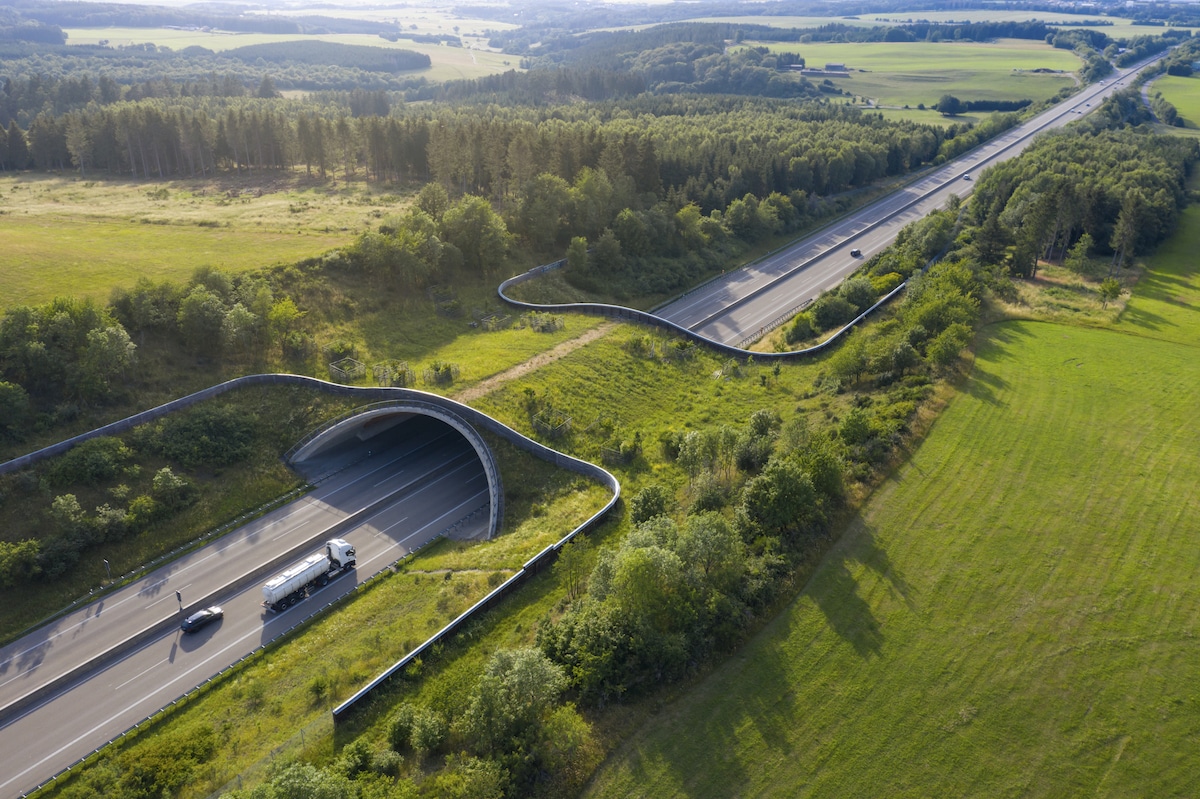
Founded in 2005 as an Ohio-based environmental newspaper, EcoWatch is a digital platform dedicated to publishing quality, science-based content on environmental issues, causes, and solutions.
Quick Key Facts
- The largest wildlife corridor in the world — the Wallis Annenberg Wildlife Crossing over the Highway 101 freeway at Liberty Canyon, California — is currently being constructed, and is expected to be completed in 2025.
- It is estimated that one to two million motor vehicles get into collisions with large animals like deer in the U.S. each year.
- Wildlife-vehicle collisions make up nearly 20 percent of reported crashes in rural states like Wyoming.
- A 2018 Center for American Progress study found that just 12 percent of land in America had been conserved as protected areas like national parks and wildlife refuges.
- One of the largest collections of wildlife crossings in the U.S. stretches across 56 miles of Montana’s U.S. Highway 93 North, where there are 41 wildlife and fish crossings , including overpasses and underpasses with fencing to direct animals like deer, grizzly bears, elk and cougars to the safe passageways.
- The top 10 U.S. States most at risk for wildlife-vehicle collisions are West Virginia; Montana; Pennsylvania; South Dakota; Michigan; Wisconsin; Iowa; Mississippi; Minnesota and Wyoming.
- More than 24 million acres of natural lands were lost to human developments like cities, roads and farms in the contiguous 48 U.S. states from 2001 to 2017.
- The Florida Wildlife Corridor is composed of almost 17.7 million acres.
- Eighty percent or more of the habitat of about half of all endangered and threatened species is located on private lands.
- A collaboration between Canada and the U.S., the Yellowstone to Yukon Conservation Initiative has a goal of protecting connected habitat along a 2,000-mile stretch of North America’s Rocky Mountains for wild species like black bears and pronghorns.
What Are ‘Wildlife Corridors’?
A wildlife corridor is a strip of native habitat — either natural or human-made — connecting two or more natural habitats that have been disrupted by highways, cities or dams .
Habitats of wild animals can span smaller areas like a riverbank or stretch thousands of miles across an entire continent. The routes they take to find food, water and mates are called natural wildlife corridors. Wildlife refuges are essential for maintaining these expanses that mammals, birds and fish need to complete their life cycles. This is especially true as humans increasingly encroach on their domains, bisecting and cutting off their natural corridors with roads and development.
When roads have already cut through habitats, disrupting natural ranges and creating barriers to migration, human-made corridors may be constructed to provide the opportunity for safe passage for wildlife. Large mammals like elk can travel hundreds of miles between their summer and winter ranges, and fence breaks called “elk jumps” allow them to enter the western boundary of Wyoming’s National Elk Refuge, but limit their ability to leap out of the protected area near highways.
Landowners living next to wildlife preserves can work with the preserves to help provide safe passage for migrating animals on the many stretches of private land that lie between the patchwork of public lands and wildlife refuges across the country.
Why Are Wildlife Corridors Important?
The wildlife who share our planet with us have had their habitats systematically destroyed and overtaken by human development. Their natural ranges often span much larger areas than national parks, state parks or wildlife preserves can provide. Some mammals like caribou, wolves, birds, salmon and pumas travel hundreds or even thousands of miles throughout their lives, and maintaining safe, consistent pathways for them to migrate has become increasingly rare and difficult.
Wildlife corridors provide the space animals need to migrate to find food and water and reproduce so that they can thrive in their natural environments.
Types of Wildlife Corridors
Natural wildlife corridors.
Natural wildlife corridors are strips of land that act as pathways for animals to travel between areas of fragmented habitat . These natural avenues offer refuge for traveling species and can increase their survival rates by providing access to food sources, as well as important escape cover or shelter.
The corridors can be established and developed through the cultivation of natural vegetation such as trees , shrubs or other herbaceous cover next to a stream or as a roadside buffer. No matter what the corridor is made of, its purpose is to provide safe passage so that wildlife may be able to access larger surrounding areas of habitat.
The types of habitat the corridor may be connecting can include wetlands , grasslands , fields, woods or other types of open terrain. The corridor should be at least 50 feet to 200 feet wide in order to provide a spacious enough lane for animals to travel, nest, find food or take cover.
Some of the species that will use wildlife corridors to move between larger areas of habitat include fox, deer, turtles, reptiles and raccoon. Species that use field buffers and corridors to nest and forage include turkeys, pheasant, quail, songbirds, cottontail rabbits and insects . The insects that use field borders are an essential food source for many of these animals.
Human-Made Wildlife Corridors
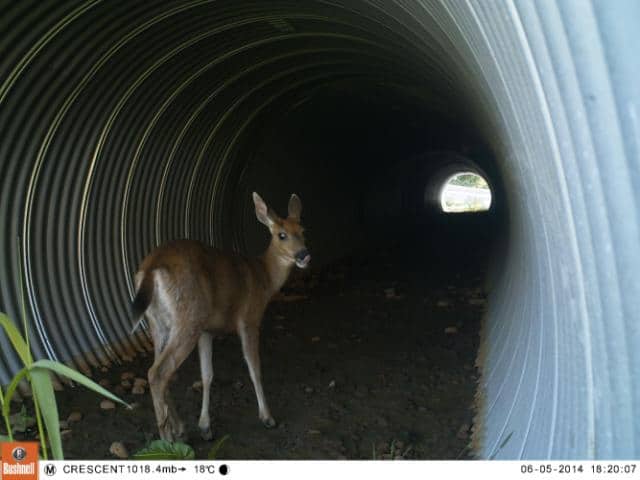
Human-made wildlife corridors are most commonly those that are built as overpasses or underpasses to provide a passageway for animals who need to cross busy roads in order to access their natural habitat or to migrate within their range. Typically, animals using human-made crossings have had their habitat diminished or destroyed by agricultural, housing or commercial developments.
The Wallis Annenberg Wildlife Crossing over Highway 101 in California is an example of the complexity of natural habitats and the human-made wildlife corridors that try to emulate them. The crossing will be covered with soil and an acre of native plants that will allow it to blend in with the natural habitat on either side. The impressive corridor will be equipped with sound walls covered in vegetation to create a buffer for nocturnal animals against urban light and noise pollution . The green bridge will provide safe passage for animals like mountain lions , coyotes , reptiles and amphibians.
Which Species of Animals Use Wildlife Corridors?
Large mammals can have extensive ranges, some spanning hundreds of miles and crossing many different types of terrain, including the human urban landscape.
Animals like elk, pronghorn and mule deer travel long distances between their wintering lowlands and the higher elevations where they spend their summers. As time has passed, new roads and developments have begun to crisscross and, in some cases, destroy the habitats of these majestic creatures.
Wildlife corridors help to soften the clash between wildlife habitat and human development by providing animals with a way to maneuver through urban landscapes and cross roads without encountering humans or their dangerous vehicles.
There are only two populations of endangered ocelots left in the U.S., most of their habitat having been destroyed by farming and residential development. This is why the 14 underpasses built by the Laguna Atascosa National Wildlife Refuge are essential to their survival in this country. Other animals caught on camera using them have been bobcats, possums, raccoons and coyotes. Two more wildlife bridges are slated for completion this year.
Amphibians & Reptiles
Roads have a high impact on amphibian and reptile species — including frogs , toads, turtles, salamanders, snakes and lizards — as they must cross them in order to get to essential foraging and breeding grounds. This can be especially true if roads bisect annual migration routes between habitats where the animals mate and hibernate.
These creatures move slowly and are often too small for drivers to spot and avoid in time. Lizards and snakes can also be drawn to paved roads, which usually absorb heat and retain it.
Types of aids for crossing roads and highways for reptiles and amphibians include underpasses, wildlife pipes, culverts or barrier fencing that guides amphibians in the direction of tunnels.
Some species like the California red-legged frog, the desert tortoise, the red diamond rattlesnake, the sierra newt and others have been highly ranked for being negatively impacted by roadways.
The long annual migrations of birds — sometimes thousands of miles — is well known. Many of them sleep during flight, resting half of their brains at a time, but they also land at known stopover sites to eat and sleep in a safe location, free of predators.
Wildlife refuges support all types of birds on their migration journeys — from waterfowl to songbirds — by being strategically spaced to provide havens for those migrating along the four main flyways that run north to south in the U.S. The refuges are a combination of state conservation areas and privately owned land. The four routes on the American Flyways cross the entire U.S. and include the Atlantic, Mississippi, Central and Pacific Flyways.
These havens for traveling birds are increasingly important as more and more wild bird habitats are swallowed up by agricultural land and urban and energy development.
Pollinators and other insects migrate, too, and they need a network of connected stopovers to rest and feed as they make their journeys.
Monarch butterflies travel as far as 3,000 miles between their northern breeding grounds and their overwintering sites in California and Mexico each fall and spring. On the southern route, they rest to feed on milkweed and other nectar-producing plants. In the northern parts of their territory, their larvae eat only milkweed, which is becoming harder to find due to increased use of pesticides , development and mowing . The planting of milkweed by private individuals and national wildlife refuges is essential to monarchs as they make their way along their ancient migration routes.
The “ bee highway ” in Oslo, Norway, was created in 2015 and includes meadows, rooftop gardens and potted flowering plants across the city to help the essential pollinators be able to breed, feed and migrate. Individuals and businesses worked along with the government to save the city’s bees and help them thrive through this unique wildlife corridor.
Wildlife corridors aren’t just for mammals and birds. Fish need to be able to swim freely through the rivers and streams that are part of their habitat.
There are approximately six million human-made fish barriers in the U.S., like dams and culverts, blocking the ability of fish to have clear passage through waterways to complete their natural life cycles.
The U.S. Fish and Wildlife Service has been replacing or removing some of these barriers, and nearly 4,500 miles of streams and more than 15,000 acres of wetlands have been reopened to fish passage, including many on wildlife refuges.
Benefits of Wildlife Corridors
Safe passage.
For millennia, North America was the undisturbed habitat of many majestic creatures who lived in harmony with the land and Indigenous Peoples. Wildlife corridors allow these animals to cross highways and roads safely as they migrate along ancient routes. This is especially important for species that travel long distances like elk, wolves, caribou and other species.
Prevent Habitat Fragmentation
Habitat fragmentation due primarily to agricultural, residential and commercial expansion has destroyed or cut off the habitats of many species, isolating them and leading some of them to become endangered. One important function of wildlife corridors is to connect these patchworks of wild domains so that species are able to access enough food, rest, find mates and reproduce. These passageways can also offer animals refuge if their habitat is shared with predators.
Help Plants Thrive
The protected environment of wildlife corridors can benefit a variety of native plant species, allowing them to flourish and provide nourishment and cover for wildlife passing through, nesting, giving birth or making long-term homes in corridors.
Prevent Vehicle-Wildlife Collisions
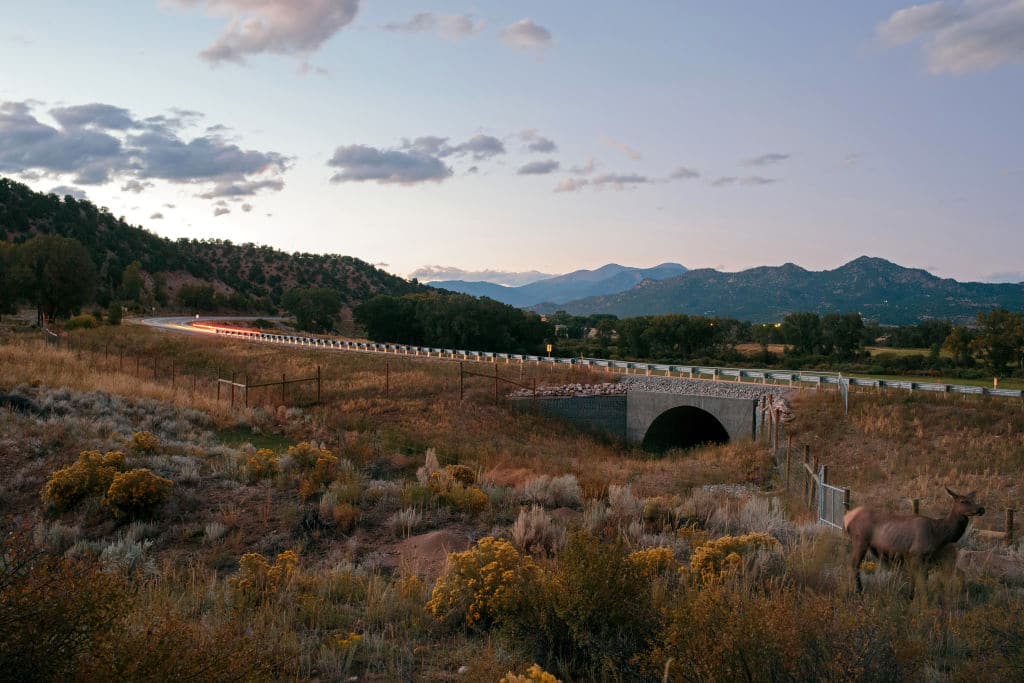
As many as two million large mammals are killed in wildlife-vehicle collisions each year, as well as many smaller animals. Wildlife crossings are essential for animals to be able to cross the increasing number of roadways blocking their movements. Crossings can be underpasses or bridges built especially for animals ranging from elephants to land crabs.
Minimize Wildlife-Human Interactions
By helping animals have access to adequate habitat, wildlife corridors can help keep them from feeling the need to venture into areas where humans live in search of food or to escape predators, thus minimizing wildlife-human interactions. This is important for both, as it keeps them safe from possible harms they could cause each other, and helps keep wildlife from becoming too familiar with humans and their food.
One study showed that the gut microbiome of wild black bears in Michigan’s Upper Peninsula became less diverse when they consumed human junk food .
Help Animals Have Access to Adequate Food and Water
The quest to find fresh water and food often leads animals on migrations of hundreds of miles. Different seasons bring different challenges for animals in meeting their basic needs, including drought , seasonal changes, flooding and human encroachment on their habitats.
Zebras, for instance, migrate hundreds of miles each year in order to find vegetation and water. The natural range for wolves can lead them to move as much as 30 miles each day in search of prey. In the U.S., elk have been migrating along the same routes for thousands of years.
Without wildlife corridors and adaptations to fencing on private land, many of these animals would not be able to find adequate food and water, greatly impairing their chance of survival in the wild.
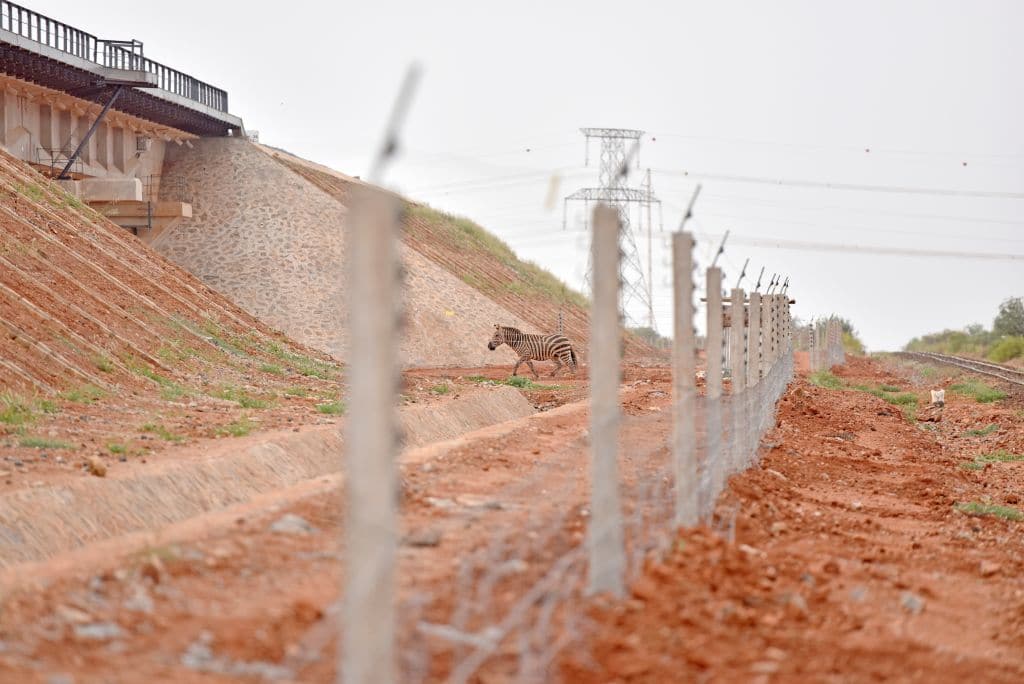
Help Wildlife Species Find Mates and Promote Genetic Diversity
In order to maintain the genetic diversity that keeps populations healthy, animals need to be able to travel freely to find suitable mates. Metropolitan areas, roads, fencing and other barriers can block their movements. When animals are stuck in a particular habitat without freedom to roam, they are prone to inbreeding and unhealthy genetic isolation. This can leave them more susceptible to diseases and birth defects, lower their reproductive success and ultimately lead to population decline.
The expanded freedom of movement wildlife corridors give species promotes their genetic diversity, helping them to avoid the genetic disorders that can result from inbreeding.
Alleviate Wildlife Encroachment During Natural Disasters
If a natural disaster like a flood or a wildfire occurs, wildlife corridors can provide the escape route animals need to find safety rather than fleeing into a nearby town or city. This can help prevent human-animal conflicts , protecting both species.
Help Animals Adapt to Changes in Their Environment Due to Climate Change
As the planet warms, the vegetation or lack thereof that defines terrain either perishes or adjusts by adapting to the warmer temperatures or slowly shifting to higher elevations. Small animals may also shift their habitats with the changing climate.
As vegetation and prey species change or move, animals may need to explore new territory to find the sustenance they need.
During a drought, animals may need to go farther afield in search of fresh water. As snow lines move farther north, Canada lynx and other alpine species that rely on snowpack for making dens and to hunt may be forced to move northward or seek higher elevations.
Wildlife corridors can offer animals refuge and help them move safely from one pocket of habitat to another as they try and find ways to adapt to our rapidly warming world.
Promote Biodiversity
A 2019 study found that the linking together of habitats through wildlife corridors enhances biodiversity . The researchers discovered that, after 18 years, the habitats of South Carolina pine savanna that were connected with corridors had 14 percent higher levels of biodiversity, as well as an average of 24 more plant species, than the habitats that were not connected.
The support corridors offer pollinators means more pollen and seeds are spread, which strengthens the resilience of the ecosystem and boosts biodiversity. It also means more crops are pollinated, which in turn prevents soil erosion, sequesters carbon and helps keep flooding at bay.
Challenges Facing Wildlife Corridors
Wildlife corridors are desperately needed to mitigate the impacts of human development on wildlife populations, but one of the biggest obstacles to expanding the network of wildlife corridors is a lack of financial support.
For example, an Oregon State report from 2020 indicated that $22 to $35 billion was needed in “immediate” funding for statewide wildlife crossing projects. Funding is necessary not just for construction of wildlife corridors, but also for maintenance of existing structures.
Funding for conservation, including wildlife corridors, can come from local, state and federal agencies through legislation and appropriation, such as allocated funds from the sale of hunting and fishing licenses. Through the 2021 Bipartisan Infrastructure Law, $350 million became available to Native American Tribes and state and local governments throughout the country to build wildlife corridors.
Wildlife crossings and corridors must be tailored to the specific needs — such as types of vegetation and migration patterns — of the animals who inhabit the land they are being built upon. This requires studies to be conducted to make sure they are meeting the needs of particular species.
What Can We Do to Support Wildlife Corridors?
As a society.
As a society, we can become more educated about ecosystems, biodiversity, conservation and the wildlife corridors that connect our protected areas. We can vote to elect officials who support the construction of wildlife bridges, underpasses and corridors, the restoration of wild spaces, rewilding and economic incentives for wildlife projects on private lands.
Rural landowners can turn parts of their property into wildlife corridors by partnering with public agencies that are working on corridor projects. They can modify their property with fencing that is conducive to wildlife migration and add buffer zones for animals. Areas that are not being used for agriculture can be planted with trees to create more habitat for a variety of species.
We can support nonprofit land trusts and work with them to make sure they are including wildlife corridors in their land management plans.
Urban planners can design wildlife crossings and make integrating them into municipal planning standard practice. One wildlife crossing can save as much as $443,000 each year by reducing animal-vehicle collisions.
Researchers can benefit society by studying the many climate benefits wildlife corridors provide, including providing shade to combat the effect of urban heat islands , carbon sequestration and minimizing the risk of flooding.
Another thing we can do as a society is to recognize Indigenous land rights and support the creation of wildlife corridors on Tribal lands. We can work with local and Indigenous communities, recognizing the cultural and spiritual connections they may have with the animals that migrate across their lands. By doing so we can gain valuable knowledge of the animals and their migratory patterns.
Animals have no political boundaries, so we can protect wildlife corridors that cross borders between countries by implementing international agreements to safeguard them, as well as work with global organizations that help coordinate corridor protections.
In Our Own Lives?
Depending on where you live, it may seem like wildlife corridors are far removed, but we can actually help them from our own backyards. Each green space is an opportunity to help create refuge, habitat and stepping stones for the wildlife who share our environment. You never know who will be passing through on their epic migrations to stop and rest, find food, make a new home and even bear young.
The more diversity of plant life we nurture in our gardens , the more animals will feel welcome to stop there — trees and nesting boxes for birds, grass for rabbits, flowering plants for pollinators, all free of pesticides and prohibitive fencing.
Think of your garden as a network, rather than an enclosed space. What animals are native to your area, and is there anything you could plant or modify that would help nurture and build the ecosystem you share? What are the wild spaces surrounding where you live like? Are they forest , orchard, grassland? These wild spaces are often where the animals that pass through your garden are headed to or coming from, so they can give you some clues as to what might help those animals on their journeys.
Other ways to help include learning more about wildlife corridors, volunteering with a local rewilding project or starting a pollinator garden or corridor in your neighborhood. Collaborate with neighbors on what native grass, flower and tree species would be most beneficial for animals in your region, stop or reduce mowing and either remove fencing or cut holes to allow animals like hedgehogs and rabbits to travel safely from garden to garden without having to veer onto sidewalks or roads.
Individuals can also speak up through public comments, sign petitions, attend community meetings and encourage government officials to support wildlife corridor projects.
By creating havens for biodiversity within areas where humans live, we can make transitions between landscapes more seamless, safe and nurturing for wildlife.
Human development, whether it be agricultural, residential or commercial, has replaced natural, balanced environments with concrete, steel and glass. Roads and highways have bisected ancient migration routes and cut off species from their known habitats, leaving them with no choice but to attempt to cross human-modified landscapes to find food, shelter and suitable mates.
Wildlife corridors are essential to provide safe passage to wildlife as they make the journeys that are part of their natural life cycle. Corridors have been shown to be effective, in some cases dramatically increasing the survival rates of species and the biodiversity of landscapes.
Humans must keep adding to the network of wildlife crossings, passageways and corridors, but also always be on the lookout for novel ways to restructure and rewild our environments. By doing so we can create environments that are more seamless with the natural landscape, as well as more inviting, secure and supportive of the animals with whom we share our planet.
Subscribe to get exclusive updates in our daily newsletter!
By signing up, you agree to the Terms of Use and Privacy Policy & to receive electronic communications from EcoWatch Media Group, which may include marketing promotions, advertisements and sponsored content.
Latest Articles
- Rivers in Russia and Kazakhstan See Worst Flooding in Nearly a Century by Cristen Hemingway Jaynes April 11, 2024
- Coal Capacity Increased 2% Globally in 2023, the Most Since 2016 by Cristen Hemingway Jaynes April 11, 2024
- Climate Change Is Likely Impacting Marine Life More Than Previously Thought, Study Finds by Paige Bennett April 11, 2024
- UN Climate Chief: We Have ‘Two Years to Save the World’ From Climate Crisis by Cristen Hemingway Jaynes April 10, 2024
- EPA Announces First-Ever Rule Limiting PFAS ‘Forever Chemicals’ in Drinking Water by Cristen Hemingway Jaynes April 10, 2024
- EPA Limits Toxic Pollution From Chemical Plants by Paige Bennett April 10, 2024
- A Philosopher’s Guide to an Ethical Diet: A Conversation With Peter Singer by Michael Riojas April 10, 2024
- India’s Supreme Court Expands ‘Right to Life’ to Include Protection Against Climate Change by Cristen Hemingway Jaynes April 9, 2024
We’re sorry, this site is currently experiencing technical difficulties. Please try again in a few moments. Exception: request blocked
Wildlife Corridors
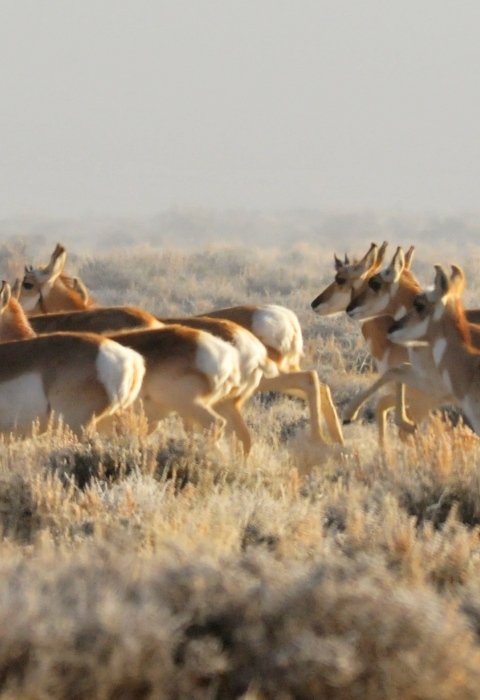
Whether they run, swim or fly, wild animals need to move to complete their life cycles. We call their routes wildlife corridors. These can span anywhere from a stretch of river to a whole continent.
National wildlife refuges are vital to connecting and maintaining safe wildlife corridors for birds, fish and mammals. The more crowded and developed our world becomes, the more critical these pathways become.
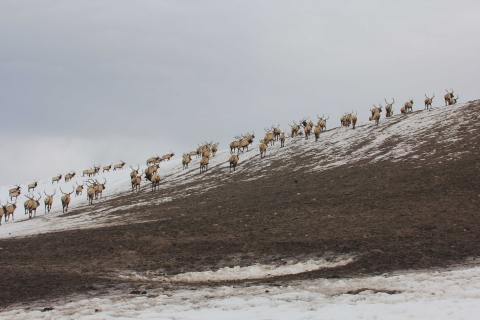
Large mammals, such as elk, mule deer and pronghorn, may travel hundreds of miles between lowlands where they winter and higher summer ranges.
As new roads and subdivisions create barriers to traditional feeding and breeding grounds, wildlife refuges sometimes fill in the gaps.
Every year, thousands of elk descend from high country to winter at National Elk Refuge in Wyoming. Fence breaks known as “elk jumps” built into the refuge’s western boundary let elk enter the refuge but limit their leaps out near highways, protecting both wildlife and people.
But barriers and hazards multiply with the miles animals travel. Wildlife refuges partner with neighboring landowners to ensure safe passage for wildlife across the mosaic of public and private lands between refuges. A few years ago, some refuges and partners got a government assist.
In 2019 the Department of the Interior directed $2.1 million in grants to state and local partners in several Western states to conserve habitat corridors for elk, mule deer and pronghorn.
In Nevada, Partners for Fish and Wildlife cheered the announcement, noting that planned improvements to migration corridors (such as controlling invasive grasses, planting sagebrush sagebrush The western United States’ sagebrush country encompasses over 175 million acres of public and private lands. The sagebrush landscape provides many benefits to our rural economies and communities, and it serves as crucial habitat for a diversity of wildlife, including the iconic greater sage-grouse and over 350 other species. Learn more about sagebrush , and improving or removing fences) also benefit non-migrating species that depend on the sagebrush ecosystem.
See a 3-D visualization of one deer’s 242-mile migration .
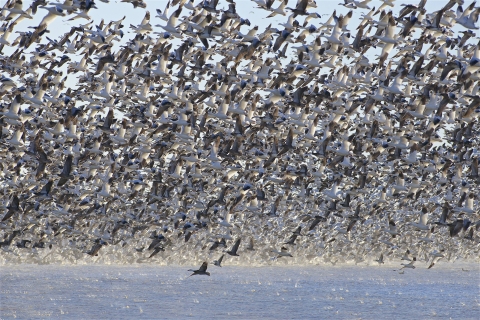
Wildlife refuges also help songbirds and waterfowl survive by supporting their migration paths. Spaced at intervals below the nation’s four main north-south flyways, refuges provide vital food and rest stops for birds worn out by their arduous flights.
In the nation’s heartland, where half of the country’s ducks and geese are concentrated, wildlife refuges serve as stepping stones to help birds weather their journeys. Working in tandem with private landowners and state conservation areas, refuges offer birds food and water and cover.
Today, these conservation islands may be even more critical to bird survival than in the past, as surrounding habitat is lost to farmland, energy production and urban development, says James Dubovsky, former Central Flyway representative for the U.S. Fish and Wildlife Service’s Division of Migratory Bird Management.
Loess Bluffs National Wildlife Refuge in northwest Missouri, where the Central Flyway and Mississippi Flyway converge, manages its wetlands to meet birds’ needs.
“We draw down water levels in spring to expose mudflats so migrating ducks and shorebirds can feed on small clams and invertebrates,” says former manager Lindsey Landowski. “In the summer, we encourage the growth of moist-soil plants like millet, toothcup and smartweed that ducks like. Arrowhead is a favorite for trumpeter swans. In August, September and October, we re-flood some of the wetlands to attract shorebirds and dabbling ducks. Blue-winged teal and green-winged teal are the first to appear, followed by Northern pintails, gadwalls, mallards and snow geese.”
In the far north, Yukon Flats and Yukon Delta and Arctic National Wildlife Refuges in Alaska provide vital nesting grounds for many bird species.
At refuges nationwide, U.S. Fish and Wildlife Service biologists collect data used to set duck and geese hunting at safe levels each year to ensure waterfowl species continue to thrive.

Sometimes, the best way to maintain viable wildlife corridors is to call in the engineers.
At the southern tip of Texas, home to the country’s last two remaining populations of endangered ocelots, development has made roads a pinch point for the rare and secretive cats. As farming and construction carve up the animals’ thorn scrub habitat, ocelots are being forced onto roads and into the path of cars.
Since 2005 Laguna Atascosa National Wildlife Refuge and partners have built 14 road underpasses to help ocelots and other small mammals move safely in search of territory and mates. Two more bridge structures are scheduled for completion by 2023, making area roads safer for hundreds of motorists, too.
Monitoring cameras show coyotes, bobcats, raccoons and possums using the wildlife tunnels, even those still under construction. Recently, ocelots have been observed using the underpasses. Monitoring will likely continue for several years.
U.S. Fish and Wildlife Service zone biologist Mitch Sternberg hopes the underpasses will help improve ocelots’ odds of survival by linking the ocelot population at Laguna Atascosa Refuge to nearby refuge habitat that the cats used to inhabit.
“Our mission here is wildlife sustainability,” says Sternberg. “We want to maintain public wildlife recreation opportunities and maintain the integrity of the area for future generations of Americans.”
To complete their life cycles, fish need clear passage through connected habitat, too.
The U.S. Fish and Wildlife Service is helping by removing or replacing some of the country’s estimated 6 million man-made fish barriers, such as old culverts and dams.
Over the last four years, the Service and its partners have reopened almost 4,500 stream miles and more than 15,000 acres of wetland habitat to fish passage fish passage Fish passage is the ability of fish or other aquatic species to move freely throughout their life to find food, reproduce, and complete their natural migration cycles. Millions of barriers to fish passage across the country are fragmenting habitat and leading to species declines. The U.S. Fish and Wildlife Service's National Fish Passage Program is working to reconnect watersheds to benefit both wildlife and people. Learn more about fish passage . Much of this work benefits fish and other species on refuges.
For example, a restoration at Tualatin River National Wildlife Refuge , near Portland, Oregon, is expected to improve conditions for cutthroat trout and Coho salmon. Both species swim upstream to spawn in spring. But many fail to reach their spawning grounds because they can’t clear the refuge’s Chicken Creek, ditched and straightened for farming decades ago by the refuge’s prior owners.
In 2019 the refuge began work on a major project to return the creek to its historic meandering path and natural streambed. Workers also removed old metal water control structures that posed obstacles to fish. In 2021 the refuge took the restoration a few steps further by removing the center dike road, reconnecting the final upper portion of the creek, filling the old ditch, and installing two free-spanning bridges.
“We anticipate the project will greatly increase fish passage through the refuge and increase fish habitat also,” said former refuge manager Larry Klimek. “A lot of what we’re doing at the refuge is protecting the Tualatin River wildlife corridor for fish and land species.”
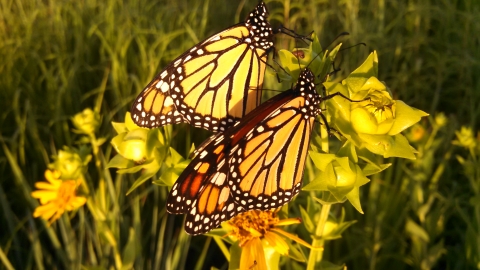
Insects and other plant pollinators also need connected land corridors to feed and rest along their air journeys.
Every spring and fall, monarch butterflies migrate up to 3,000 miles between their overwintering sites in Mexico and California and their breeding areas up north. On their way south, they stop to feed on milkweed and other nectaring plants. Back north, monarch larvae feed exclusively on their host plant milkweed. But milkweed and other nectar sources are shrinking because of increased mowing, herbicide use and development.
National wildlife refuges are working with partners and private citizens to encourage the planting of milkweed in monarch waystations.
You can help monarchs by planting a butterfly garden in your backyard or school.
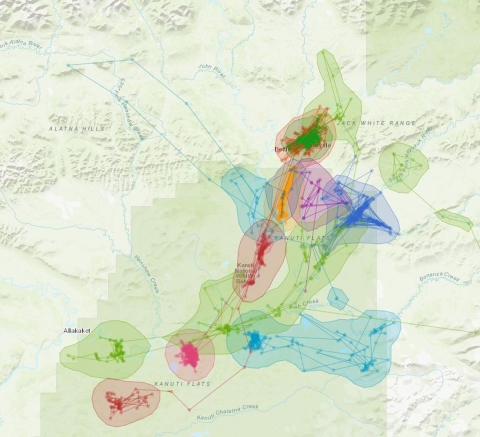
Geospatial technology is revealing more about the travels of some elusive animals, such as the Canada lynx. That knowledge may help Alaska refuges conserve this iconic species, as scientists study how lynx are responding to pressures such as trapping, habitat change and threats to landscape connectivity.
The map above shows the approximate movement paths (lines connecting dots) and home ranges (colored polygons) of 12 lynx captured and radio-collared on or near the northern third of Kanuti National Wildlife Refuge (darker green shading) in March/April 2018. The most notable movement was of one lynx (turquoise) that was collared south of Bettles, Alaska, and traveled northwest into the Brooks Range, only to return to the refuge 10 days and 85 miles later.
For years now, researchers at Kanuti Refuge and partner sites have been tracking lynx movements in relation to ups and downs in the snowshoe hare population. Lynx prey primarily on snowshoe hares, so the two species’ populations rise and fall in closely linked cycles.
Video: "Lynx Tracking Across Alaska"
Recreational Activities
Related stories.
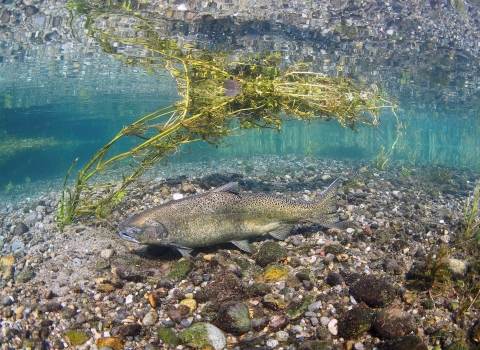
Latest Stories
You are exiting the U.S. Fish and Wildlife Service website
You are being directed to
We do not guarantee that the websites we link to comply with Section 508 (Accessibility Requirements) of the Rehabilitation Act. Links also do not constitute endorsement, recommendation, or favoring by the U.S. Fish and Wildlife Service.
- Search Please fill out this field.
- Manage Your Subscription
- Give a Gift Subscription
- Sweepstakes
Tourists May Be Able to Travel Between New York City and London As Soon As the Holidays
Homeland Security is reportedly in the early stages of a plan to “safely encourage trans-Atlantic travel while mitigating public-health risks.”
:max_bytes(150000):strip_icc():format(webp)/alison-fox-author-pic-15f25761041b477aaf424ceca6618580.jpg)
Travelers may soon be able to fly between New York City and London with a shortened quarantine period as part of a reported plan to open a travel corridor between the two major cities.
The travel corridor, which could open as soon as the holidays, would likely require passengers to get tested for COVID-19 before their flight, The Wall Street Journal reported . The plan is part of an effort from officials, including in the U.S. Department of Transportation and Department of Homeland Security, to make international travel possible.
While nothing has yet been finalized, a Homeland Security official told the WSJ the agency was in the early stages of a plan to “safely encourage trans-Atlantic travel while mitigating public-health risks.” Part of the discussions concerns the length of quarantine: Some, like transportation officials and an airline trade group, support a 24 hour isolation period, while others are arguing for a four to seven-day quarantine.
The U.S. has also been in discussions with German officials, the paper noted.
The UK currently has travel corridors open with several dozen countries and territories, including many in Europe and several in Asia, that remove the self-isolation requirement for incoming passengers. Visitors from the U.S., however, must currently self-isolate for 14 days upon arrival.
New York City — once the epicenter of the pandemic in the U.S. — has seen a decrease in cases from the height of the spring and early summer and recently reopened indoor dining at reduced capacities. While certain parts of the city are currently experiencing an uptick in cases and are subject to further restrictions, the city remains at a 1 percent positivity rate on a 7-day rolling average, according to the state .
The numbers are far lower than the U.S. overall where several states have seen dramatic increases in cases, including Montana, North Dakota, and South Dakota, according to Johns Hopkins University .
The UK has also seen a recent growth in case numbers and implemented new restrictions at the end of September, including imposing a curfew for restaurants and bars. In addition, masks are required in taxis, and on public transportation, weddings have been limited to 15 people (down from 30), and casual gatherings remain limited to six people.
Alison Fox is a contributing writer for Travel + Leisure. When she’s not in New York City, she likes to spend her time at the beach or exploring new destinations and hopes to visit every country in the world. Follow her adventures on Instagram .

Wildlife Corridors
by Tara Pepperman Director of Cooperative Sanctuary Programs for Audubon International.

When human development happens, removing existing wildlife habitat is inevitable. This causes habitat to be broken up into small patches where wildlife can have a harder time surviving. When patches become too small, and aren’t easily linked to other areas, many species can become displaced.
The best way to mitigate the reduction of habitat is to create what are known as wildlife corridors within your park, golf course or recreation area. These corridors will allow all species access to the food, water and interactions they need to thrive.
Scientific research shows that all animals, even birds, prefer to travel along habitat corridors rather than cross clearings or other obstacles. In one study, songbirds chose wooded routes to travel between forested patches, even when they were three times as long as cutting across a clearing.
Even species that live in more open habitats use corridors for travel. Butterflies, for example, use grassy corridors to move between open clearings surrounded by dense woodland, and their numbers are typically higher in patches connected by corridors than in isolated patches.
Creating and maintaining these corridors should become an important part of your environmental management plan, whether it be short- or long-term.
How Do I Start?
The first thing you need to do is think about the questions you are trying to answer:
1. What kind of species are on my property? Having an up-to-date wildlife inventory will help with this question! Try to focus on identifying the needs of endangered species or species of concern first.
2. Where do those animals thrive, and what kind of plants would give the cover they want? Smaller
animals require understory or tall grass, while birds and larger animals feel most comfortable with larger trees.
3. Where can I create these corridors? Look at a map! This will help you identify areas that could be used as corridors.
Corridors should be just that: pathways for wildlife to cross your property without being in the open.
Ideally, the corridor would create a path to cross the entire property, but also look for opportunities to connect outside forest habitats with ponds in the center of your course.
Sometimes habitat corridors can be combined with other conservation projects. Many of our members maintain vegetated buffer zones to protect the edges of streams, rivers, or other water bodies from run-off. These buffers often can be connected to nearby patches of habitat to serve as corridors. The Golf Club at Newcastle in Washington State has a great example of naturalization of their creek area, which is also a corridor from one part of the course to another. Using bridges to allow wildlife to travel above or below paths without disturbance is important when areas used by humans and wildlife cross.
Sometimes, properties can be ideal areas for wildlife to cross in a flat open state. A perfect example of this is at the Jackson Hole Golf and Tennis Club in Wyoming, where the annual elk migration to the National Elk Wildlife Refuge crosses the course. The course’s open areas, natural to Jackson Hole, provide a great migration path for this species, which travel through in huge numbers!
Although it is not the best case scenario, having a cart path cross a wildlife corridor is sometimes hard to correct without a major construction project. In this case, high tree cover over the path will still allow this to be a great corridor for birds. Creating signs, such as those at Cozumel Country Club in Mexico, as part of an outreach and education program directed at patrons is important in this situation.
How wide/large should my corridor be?
There are no simple rules about how wide or tall a naturalized area must be in order to serve as a corridor. One study found that only corridors over 33 feet wide were used by the birds on that site, while another found that a vole used corridors only 1.5 feet wide. Just remember to think about the species on your property, and put yourself in their “shoes.”
Remember, all living things need these four basic things to survive: food, water, shelter and space. Thinking about this during projects on your property can ensure wildlife are always taken into consideration. Corridors give your property to ability to provide all four of these basic survival needs and make it an ideal place for wildlife to thrive.
Leave a Comment Cancel Reply
Save my name, email, and website in this browser for the next time I comment.
Pressure mounts on governments to establish US-UK travel corridor by June

Pressure is mounting on the governments of the United States and the United Kingdom to reestablish an air corridor for open travel between the two countries.
Ahead of the G7 Summit in England in June, travel industry executives, unions, businesses and operators have turned to the highest of powers to get restrictions on travel between the U.S. and U.K. lifted.
Sign up to receive the daily TPG newsletter for more travel news!
In a letter addressed to U.S. President Joe Biden and U.K. Prime Minister Boris Johnson, a group of nearly 50 travel operators, providers and industry groups, such as Heathrow Airport , Airlines for America, the International Air Transport Association, Virgin Atlantic and more, pushed on the governments to reopen the transatlantic corridor "as soon as safely possible."
In part, the coalition of groups and companies wrote to Biden and Johnson:
"As the collective leaders of the U.S. and U.K. aviation, travel and tourism industry, we are writing to underscore the importance of both governments reopening one of the world's most important aviation markets as soon as safely possible. Given the deep economic, social and cultural ties between our two nations, we believe your meeting ahead of the G7 in early June would be an ideal opportunity for a joint announcement of the full reopening of the U.S.-U.K. air travel market for both U.S. and U.K. citizens. We stand ready to support the work of governments in the interim to secure a positive outcome."
There has been pressure on the governments to establish a U.S.-U.K. travel corridor for months, however, it's picked up more steam in recent days. The joint letter as well as individual comments from travel executives have put additional pressure on the governments to finalize an approach to transatlantic travel before the G7 Summit , which is set to take place in Cornwall, England, from June 11-13, 2021.
Related: UK airlines push for travel corridor with US as vaccine rollout raises hopes for summer travel
In the letter, the group of travel companies detailed that the success of both the U.S. and U.K.'s vaccination programs is sufficient for safely reopening the travel corridor. According to data from the University of Oxford , more than 246 million doses of the COVID-19 vaccine have been administered in the United States — about 44% of the population. In the U.K., meanwhile, more than 50 million doses have been administered — about 52% of the population.
Among the reasons for the push to restart travel between the countries is to help kickstart the resumption of international travel at a large scale, helping to boost airline operations and tourism's recovery in the aftermath of the pandemic.
Related: Will Americans be able to vacation in the UK this summer?
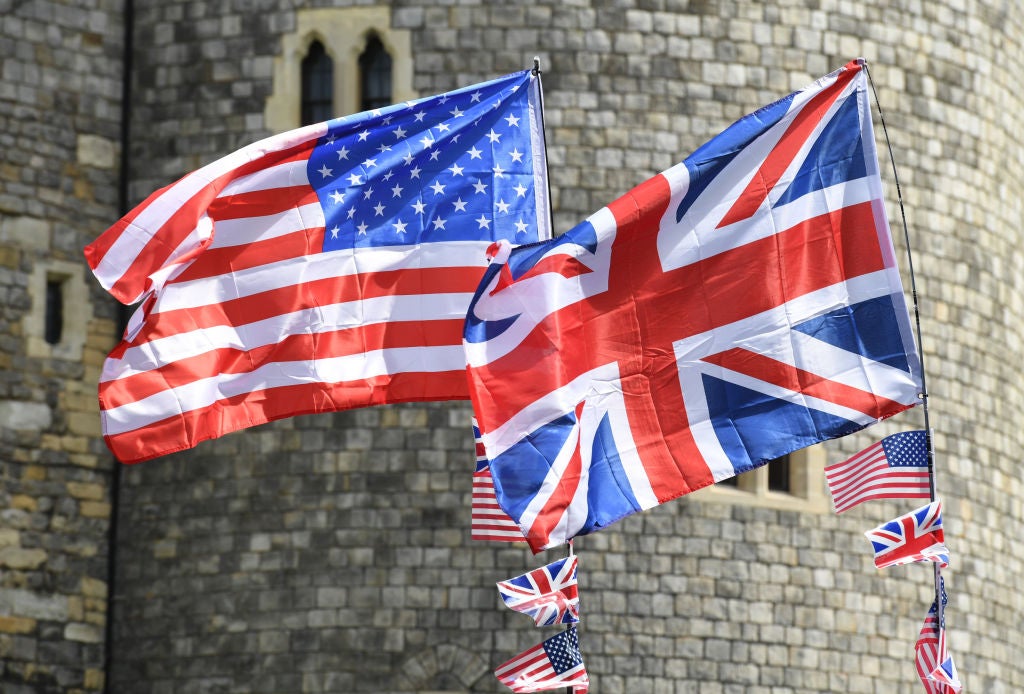
"If you look at the progress of vaccinations that the U.K. and the U.S. have made, they're almost neck and neck," British Airways CEO Sean Doyle said at an online industry conference last week. "I think the U.S. is a great opportunity to get up and running again."
Since March 2020, the United States has banned non-nationals coming from the U.K. — and other Schengen Area countries — from entering. As such, tourism from Europe (including the U.K.) to the U.S. has been completely off the table.
Likewise, the U.K.'s enhanced border restrictions since January 2021 have meant that travelers entering the country from abroad must quarantine for 10 days. Travelers entering from high-risk red countries are required to undergo their quarantine at a government-approved hotel , however, the U.S. is not categorized as a red list country.
With the latest push from industry trade groups and businesses to establish a travel corridor between the U.S. and the U.K., not only would the U.S. have to reopen its borders to non-nationals coming from the U.K., but the U.K. would need to add the U.S. to its green list of low-risk countries.
Non-essential international travel in the U.K. has been illegal since 5 January when the country went into its third lockdown . In his roadmap out of lockdown announcement in February , Johnson set a date of May 17 for the possible return to international travel — though that date could be pushed back.
We've since learned that when international travel does resume from England, it will use a traffic light system to categorize destination countries based on their risk level : red for high-risk countries, amber for medium-risk countries and green for the lowest-risk countries.
Arrivals into England from red countries will need to undergo quarantine in a government-approved hotel, while amber arrivals will need to undergo a 10-day quarantine at an accommodation of their choosing, as well as taking two additional COVID-19 tests on days two and eight of their quarantine. The lowest-risk green arrivals will not need to quarantine on arrival in England, but they will need to take a COVID-19 test prior to departure to England as well as a PCR test within two days of arriving.
The U.K. hasn't yet confirmed if international travel will be permitted to resume on 17 May, but given industry pressure on the government and infection rates that have remained low, there is reason to believe the date will stick. However, the English government still hasn't released which countries will be on the green list, though there is reason to believe that the number of countries that could be on the low-risk green list could be in the single digits.
Related: Which countries could be on the UK's green list?
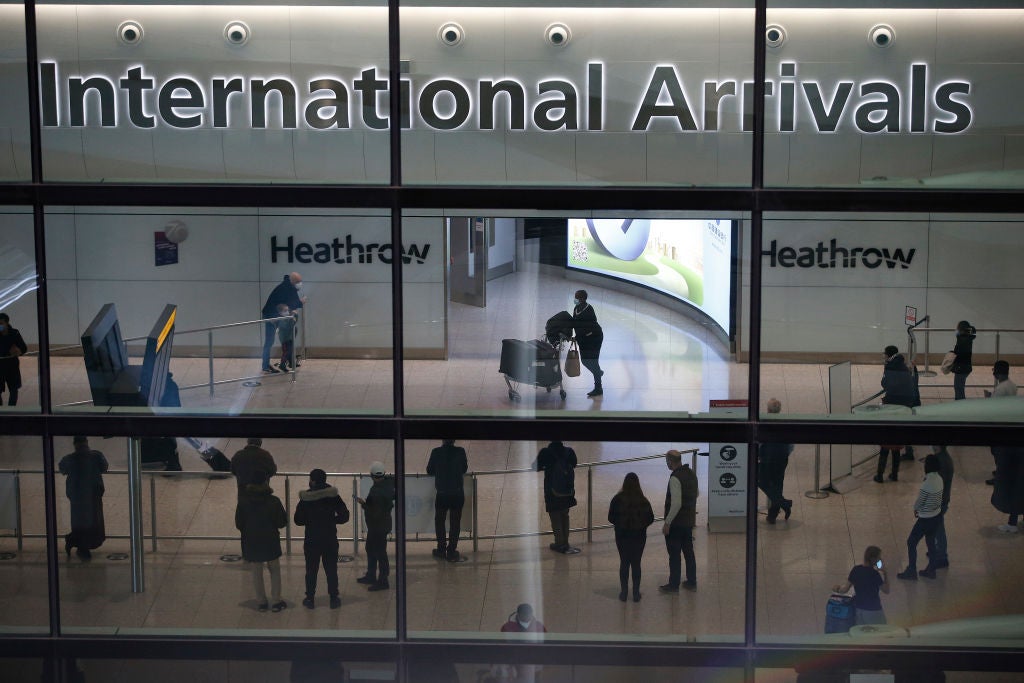
Among the growing number of businesses and trade groups pressuring the governments to establish a corridor between the U.S. and U.K., airline executives have been especially vocal. In addition to BA's Doyle, Virgin Atlantic CEO Shai Weiss has said on numerous occasions that there is no need for a ban on travel between the two countries.
"With world leading vaccination programs in both the U.K. and U.S., and evidence to support safe reopening through testing, there is a clear opportunity to open up travel and no reason to delay beyond 17 May," Weiss said .
Weiss also pushed that the governments should consider a quarantine- and testing-free approach to the corridor for fully vaccinated travelers. Currently, there are no exemptions for fully vaccinated travelers entering the U.K.
The reopening of a U.S.-U.K. travel corridor would be a massive step towards economic recovery for the tourism sectors in both nations, as well as airlines and the larger economies.
"The tourism and hospitality sector has been one of the hardest hit by COVID-19 in both economies and safely restoring the U.S – U.K. air travel market will have a significant impact," the group of travel companies said in their letter to Biden and Johnson. "If travel restrictions are lifted by this June, we expect the market will start to recover and approach 70 percent of 2019 levels by the end of the year buoyed primarily by summer season traffic.
"The return of Transatlantic flying would not only have a significantly positive impact on our respective economies but will also reunite those who have been separated from their loved ones for over a year. In 2019, over 22 million passengers traveled between the U.S. and UK with approximately four million of those travelers visiting friends and family."
Beyond the U.S. and U.K. travel corridor, travel companies have already received positive word on the resumption of leisure travel last week when the EU said it intended to allow fully vaccinated Americans to vacation across its Member States this summer .

Fayetteville’s North Street Corridor project construction begins
F AYETTEVILLE, Ark. (KNWA/KFTA) — The city of Fayetteville is set to see some major construction work after announcing the start of the first phase of its North Street Corridor Project.
“With North Street being a main East-West corridor through Fayetteville, it’s going to slap some folks in the face,” said Ryan Hardin, Fayetteville resident.
Hardin has lived on North Park Avenue, a connector to North Street, since 2009. He says he uses the street frequently, but he’s all for the area’s growth.
“We use North Street every day. I love the addition of the fire department coming, its construction, its growth. We know it’s coming. It’s to be expected,” said Hardin.
The city announced Wednesday the first phase of the North Street Corridor project starts next week. Crews will install a dedicated turn lane for southbound traffic in the section of North Street from College Avenue to North Washington Avenue. They will also install a crosswalk and new traffic signals.
“It’s an issue now as it is at 5 p.m., but that’s part of life. We’re in a growing town. You know, at some point I’m sure it’ll be four or five lines going through there,” said Hardin.
“It’s just going to have to make construction traffic and any other traffic find a way around North Street,” said Steven Wilson, who uses North Street to get to work on houses in the area.
Wilson says he’s worried about how this will affect people like him.
“Just have to figure out how long it’s going to take and leave a little bit earlier,” said Wilson.
The city says the project’s first phase will bring much-needed sidewalk and street improvements to one of Fayetteville’s busiest corridors. Hardin hopes drivers will continue to be safe on the roads when construction begins.
“If it backs you up every day and adds 30 minutes to your route, you’re going to find another way to go, and that’s okay. Let’s be safe. Be slow around the guys who are out there working hard to take care of the streets,” said Hardin.
Construction is set to start Monday and will run from 6 a.m. to 5 p.m. Monday through Saturday. That section will be closed until construction is finished. The city says it anticipates work will last through May.
For the latest news, weather, sports, and streaming video, head to KNWA FOX24.
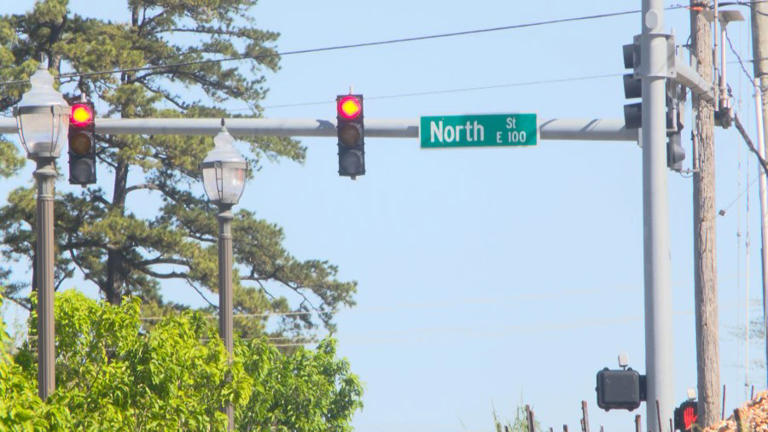
Simple Flying
Is the us-uk travel corridor further from opening than we thought.
Despite the best efforts of the US-UK task force set up in June, we may be waiting a lot longer than anticipated for a travel corridor. While vaccination rates in both countries are high, the highly infectious Delta variant is proving a spanner in the works. We explore if the US-UK travel corridor is further away than we thought.
No travel corridor until November?
At the Cornwall G7 Summit in June, a transatlantic task force was established to set up a travel corridor between the U.S. and UK. However, with cases in both countries on the rise, reports now suggest a travel corridor isn't expected to open until November at the earliest.
Since early August, the UK has permitted fully vaccinated American tourists into the country, but this was not reciprocated by the U.S. The U.S. was expected to return the favor sometime in September, but this is now highly unlikely.
White House spokesperson Jen Psaki said last month,
“Given where we are today ... with the Delta variant, we will maintain existing travel restrictions at this point.”
U.S. airlines push back services
Most major U.S. airlines now believe a travel corridor won't be on the horizon until at least Thanksgiving, November 25th. Virgin Atlantic has already delayed its Heathrow-Las Vegas flights to mid-September, while another unnamed major carrier plans to defer its New York-London service from September to November.
JetBlue's CEO, Robin Hayes, believes a corridor is a few months off, saying,
“We are hopeful over the next two or three months, as we get on the right side of the Delta variant increases we have seen, we can revisit that and we can welcome Brits and Europeans to the States again.”
Henry Smith, chairman of the all-party Future of Aviation group, claims he does " not see any appetite in the US to open up sooner rather than later ." Unlike the UK's small domestic market, U.S. airlines can rely on a much larger domestic market to maintain revenues.
Smith said,
"It is slightly different for the US because they have such a big domestic market, which means international travel makes up a smaller proportion of the industry's revenues."
Stay informed: Sign up for our daily and weekly aviation news digests.
Infection rates remain high in both countries
It was initially hoped that high vaccination rates would eventually lead to a US-UK travel corridor . However, with Delta variant breakthrough infections and vaccine hesitancy amongst the population, infection rates are climbing in both countries.
As of 23rd August, the U.S. is seeing a seven-day average of 150,000 cases, up from 50,000 a month ago. In the UK, this figure stands at 32,710, down from 43,658 a month ago, but steadily on the rise again since early August.
Another stumbling block is that the U.S. currently does not recognize the AstraZeneca vaccine. Over 5 million Brits have received a variant of the vaccine manufactured by the Serum Institute of India (SII). This would mean those with the AZ jab would essentially be treated the same as unvaccinated individuals.
Do you think the travel corridor will be delayed until November? Will we even get a travel corridor this year? Let us know your thoughts in the comments.
Police investigating after AMBER ALERT for Perryville boy canceled, child found safe

PERRYVILLE, Mo. (KFVS) - Police are investigating after an Amber Alert issued in Perryville Wednesday afternoon, April 10 has been canceled.
Around 11:45 a.m., officers with the Perryville Police Department spoke to a woman who said that on March 19, she had been assaulted along with her infant child.
The woman also said that the father of the children went on to threaten the life of the infant and their three-year-old child if she reported the assaults and threats to law enforcement.
According to the mother, she and the infant were abandoned by the father at the hotel they were staying at. The father took the three-year-old with him and has not had any contact with the mother until yesterday.
Because of the threats from the father, the mother stated that she did not feel safe in reporting the incident until Wednesday.
Information was gathered and an Amber Alert was issued. Around 3:45 p.m., the father and three-year-old child were located voluntarily in Nashville, Tennessee.
According to the Missouri State Highway Patrol, the 3-year-old boy has been found safe and the suspect is no longer at large.
The Perryville Police Department is working with authorities in Tennessee to investigate the situation further.
The Amber Alert was issued around 1:30 p.m. on Wednesday.
Copyright 2024 KFVS. All rights reserved.

Missouri Senate passes bill to ‘defund’ area health care provider

HerrinFesta Italiana announces 2024 entertainment lineup

O. J. Simpson dies at age 76, family says

Three suspects charged in connection with Cape Girardeau home invasion

‘It freaked me out’: Independence man finds human skull while mushroom hunting
Latest news.

Man wanted in connection with Christmas Day camper theft in Williamson County caught

56th Charleston Dogwood-Azalea Festival kicks off soon

Bald Knob Cross to host Blessing of the Squad Cars

PBRMC celebrating National Donate Life Month

Man accused of assaulting pregnant sibling
latest in US News

Labor group says California $20 min wage 'just the beginning'...

Orthodox Jewish man stabbed multiple times outside Rockland...

Spirit Airlines worker on 'power trip' caught on video hurling...

LA Times' Trump gaffe in OJ Simpson's obituary goes viral

Last known person to speak with Riley Strain comes forward to...

All of OJ Simpson’s kids — including 2 with murdered wife...

California college student, 23, vanishes as her cell phone is...

Biden cancels another round of student debt for over 200,000 more...
Travel chaos caused by tri-state area earthquake: flights grounded, holland tunnel traffic halted.
- View Author Archive
- Email the Author
- Get author RSS feed
Contact The Author
Thanks for contacting us. We've received your submission.
Thanks for contacting us. We've received your submission.
There was chaos on the ground and in the air in the New York metro area Friday morning as the Holland Tunnel was temporarily closed for inspection and New York-area flights were grounded after a 4.8-magnitude earthquake.
Traffic in and out of the crucial New York City tunnel was halted for inspection shortly after the quake, which struck New Jersey around 10:23 a.m. and was felt from Boston to Delaware.
The tunnel reopened around 11:15 but was still experiencing delays due to volume an hour later, officials shared on X.

Follow The Post’s coverage on the NYC and tri-state earthquake
- NYC and tri-state rocked by biggest area earthquake since 1884, sending terrified residents into the streets
- Travel chaos caused by tri-state area earthquake: Flights grounded, Holland Tunnel closed
- Scary security video captures earthquake rattling New Jersey
- Yankee Stadium ‘definitely felt’ earthquake ahead of home opener: ‘The field was shaking’
- Totally nuts! Pennsylvania man was getting a vasectomy when 4.8 earthquake struck
Flights out of LaGuardia and Newark airports were also temporarily grounded, resulting in delays of up to 45 minutes, according to the New York Times.
A ground stop at JFK Airport was lifted shortly before 11:40, but Newark’s was extended through 12:30 p.m., CNN aviation correspondent Pete Muntean wrote on X.

New York’s MTA services were all operating “safely and normally” after the quake, Muntean wrote.
“Our structural teams out there our teams, surveying our bridges, our roads, any areas that there could be a fault line that is not easily detectable to make sure that passengers on our rails as well as our commuters are safe” Hochul noted during a press conference.
Residents were urged to remain vigilant due to the possibility of aftershocks.

Share this article:

Advertisement
We will keep fighting for all libraries - stand with us!
Internet Archive Audio

- This Just In
- Grateful Dead
- Old Time Radio
- 78 RPMs and Cylinder Recordings
- Audio Books & Poetry
- Computers, Technology and Science
- Music, Arts & Culture
- News & Public Affairs
- Spirituality & Religion
- Radio News Archive

- Flickr Commons
- Occupy Wall Street Flickr
- NASA Images
- Solar System Collection
- Ames Research Center

- All Software
- Old School Emulation
- MS-DOS Games
- Historical Software
- Classic PC Games
- Software Library
- Kodi Archive and Support File
- Vintage Software
- CD-ROM Software
- CD-ROM Software Library
- Software Sites
- Tucows Software Library
- Shareware CD-ROMs
- Software Capsules Compilation
- CD-ROM Images
- ZX Spectrum
- DOOM Level CD

- Smithsonian Libraries
- FEDLINK (US)
- Lincoln Collection
- American Libraries
- Canadian Libraries
- Universal Library
- Project Gutenberg
- Children's Library
- Biodiversity Heritage Library
- Books by Language
- Additional Collections

- Prelinger Archives
- Democracy Now!
- Occupy Wall Street
- TV NSA Clip Library
- Animation & Cartoons
- Arts & Music
- Computers & Technology
- Cultural & Academic Films
- Ephemeral Films
- Sports Videos
- Videogame Videos
- Youth Media
Search the history of over 866 billion web pages on the Internet.
Mobile Apps
- Wayback Machine (iOS)
- Wayback Machine (Android)
Browser Extensions
Archive-it subscription.
- Explore the Collections
- Build Collections
Save Page Now
Capture a web page as it appears now for use as a trusted citation in the future.
Please enter a valid web address
- Donate Donate icon An illustration of a heart shape
Files for sf17ut-North_South_Corridor_Travel_Plan_02_20_2024
Reports: SBTi faces internal revolt over plans to relax rules on use of carbon offsets
Staff at the influential nonprofit are calling for the CEO's resignation after a controversial move to consult on changes to the net-zero standard, according to a Reuters report.
By James Murray
April 11, 2024

Source: Shutterstock/Volha Werasen
The Science Based Targets Initiative (SBTi) has reportedly been thrown into "turmoil," after a number of staff responded angrily to news this week the group could revise its guidance to corporates to allow greater use of carbon offsets to meet net-zero targets.
News agency Reuters reported it had seen a letter sent by a group of staff at the London-based nonprofit to the SBTi's board of trustees and CEO, which accuses the organization's leadership of inflicting "grave reputational damage" on the initiative.
The letter is said to call for the resignation of SBTi CEO Luiz Amaral and any board member who supports new proposals to allow corporates to increase the use of carbon offset credits to meet net-zero targets for their value chains.
It is signed by "the Target Validation Team, Target Operations Team, the Technical Department, Communications, Impact and IT, and multiple department heads," and says the group is ready to take "further action" if necessary.
"As staff representing SBTi on a daily basis, we demand immediate action to mitigate the grave reputational damage caused by the actions of the Board," the letter stated, according to Reuters.
One well-placed source confirmed to BusinessGreen there was "growing fury" at the SBTi's plan to tweak the rules governing how carbon offsets can be used to count toward corporate net-zero targets, adding there was "an internal revolt afoot."
BusinessGreen has approached the SBTi for comment.
The SBTi provides independent validation of corporate climate targets which is designed to ensure they are in line with the goals of the Paris Agreement. The group has become increasingly influential in recent years as a means of demonstrating that businesses' targets are scientifically credible.
In 2021 the group — set up by a network of leading green NGOs, including CDP, WWF and the We Mean Business Coalition — significantly strengthened the methodologies it used for assessing corporate targets with the launch of a new Net Zero Standard.
The standard required firms signed up to the initiative to commit to halving their Scope 1, 2 and 3 emissions by the end of the decade, before delivering a minimum 90 to 95 percent reduction in emissions by 2050. Significantly, it also stated that companies could only use "environmental attribute certificates," more colloquially known as carbon offsets, to abate the residual 5 to 10 percent of greenhouse gas emissions.
However, the rules have faced growing criticism from some corporates and carbon offset providers, which have warned the tight restrictions on the use of carbon offsets could prove counterproductive, as they could undermine investment in carbon removal projects that are likely to be required to meet economy-wide net-zero goals and delay action to tackle corporates' Scope 3 emissions from supply chains, which typically prove harder to reduce than direct emissions.
Demand for carbon offset credits through the Voluntary Carbon Market slipped 6 percent in the first half of 2023, according to BloombergNEF data, on the back of concerns over the credibility of carbon offset projects and moves by a number of corporate buyers to curb the use of carbon credits in line with the SBTi's guidelines.
The latest row was sparked Tuesday, when the SBTi Board of Trustees published a statement on its website confirming that following a six-month consultative effort it had decided to "extend" the use of carbon offset credits to count towards for the purpose of Scope 3 emissions abatement beyond its current limits.
"While recognizing that there is an ongoing healthy debate on the subject matter, SBTi recognises that, when properly supported by policies, standards and procedures based on scientific evidence, the use of environmental attribute certificates for abatement purposes on Scope 3 emissions could function as an additional tool to tackle climate change," the board said.
It also confirmed it would consult on the revision of its Scope 3 framework, including the use of environmental attribute certificates in target setting, and would seek cooperation agreements with other relevant initiatives and a broad set of stakeholders.
"This will entail the definition by SBTi of specific guardrails and thresholds as well as the rules to be applied for these certificates to be considered valid for Scope 3 emissions abatement purposes respecting the principles of mitigation hierarchy," it said.
The statement added that the SBTi thinks the proposed changes provide "a way to accelerate the decarbonization of value chains with compensation logic while companies make their way to eliminate carbon emissions at the root through innovation and technology improvements."
A first draft of basic rules, thresholds and guardrails for the potential use of environmental attribute certificates for abatement purposes of Scope 3 emissions is slated to be issued by July.
The proposals were warmly welcomed by business groups and carbon offset providers, who maintain that dampening demand for carbon offsets could undermine efforts to boost flows of finance into nature and technology based carbon removal projects and ultimately jeopardize efforts to meet net-zero goals.
"The voice of business on this issue is clear," said María Mendiluce, CEO of the We Mean Business Coalition, which represents a host of leading businesses that are working to accelerate action on climate change. "Companies value SBTi and are committed to delivering on their emissions reductions targets, but need greater clarity and flexibility in how to navigate Scope 3 emissions. This change empowers companies to bring more innovation and investment into cutting emissions from their value chains, whilst also bringing in much needed funding for climate projects in the Global South."
The Voluntary Carbon Markets Initiative (VCMI), which has been working to strengthen standards for carbon offsets in the wake of a series of scandals over projects that have failed to deliver promised emissions savings, also welcomed the move.
"SBTi's recognition that carbon credits and other market-based instruments have a role in helping companies address their scope 3 emissions is welcome," the group said in a statement. "Companies are not reducing emissions fast enough and most are struggling to meet their Scope 3 goals. Without the requirement that they fill any gap with high quality carbon credits once they've made every reasonable effort to meet their targets, we risk falling further even behind in our efforts to reach net zero."
But some environmental groups are understood to be furious at the proposed changes, fearing they will dilute pressure on corporates to reduce emissions at source and provide a boost for a carbon offset market they argue is yet to adequately prove it can ensure it is delivering high integrity projects. The latest reports suggest they have plenty of allies working within SBTi itself.
This story first appeared on:
View the discussion thread.
- Standards & Certification
- Commitments & Goals
- Carbon Policy
- Science Based Target initiative (SBTi)
- Carbon Credits
- Scope 3 Emissions
Share this article
James Murray
More by this author.

Smart travel policies are keeping corporate flights below pre-COVID levels
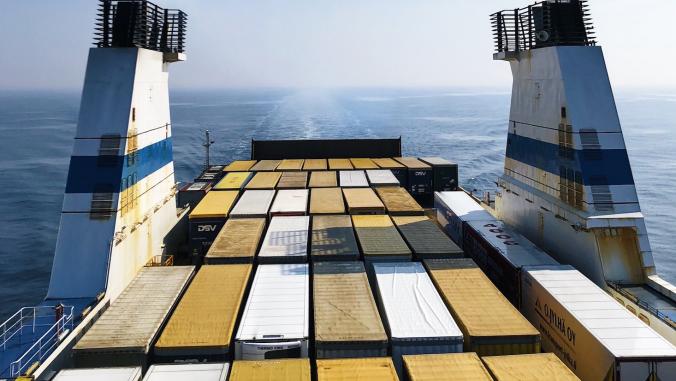
New coalition sets course for Transatlantic Clean Hydrogen Corridor

CDP secures environmental disclosures from a record 23,000 companies

How can businesses team up on climate action without breaking UK law?

TCFD: 97 of the world's 100 largest corporations back climate disclosure guidelines
Get articles like this delivered to your inbox
- Circularity 24
Join the community of 2,000+ visionaries and practitioners advancing the circular economy at Circularity 24 (May 22-24, Chicago, IL).
- Climate Tech
- Circularity
- ESG/Finance
- Sustainability Strategy
- UPCOMING EVENTS:
- GreenFin 24
- GreenBiz 25
Beginner’s guide to travel rewards: How to travel with credit card points and miles

Fortune Recommends™ has partnered with CardRatings for our coverage of credit card products. Fortune Recommends™ and CardRatings may receive a commission from card issuers.
Terms apply to American Express benefits and offers. Enrollment may be required for select American Express benefits and offers. Visit americanexpress.com to learn more.
When you read articles about travel rewards, you’re often regaled with tales of how the writer traveled in first class to Asia in a private suite drinking champagne for $5.60. You’re right to read that with skepticism. While using travel rewards, airline miles, and hotel points can allow you to travel well outside of your weight class, it’s well worth it to dig into the details before opening up a wallet-full of credit cards. Here’s how to enjoy the fruits of travel rewards responsibly.
Types of travel credit cards and how they work
Travel rewards credit cards—as opposed to cash-back credit cards or credit cards that don’t earn rewards at all—can generally be divided into the following three categories:
- Cards that earn flexible points.
- Cards that earn airline miles.
- Cards that earn hotel points.
We’ll delve deeper into the specifics of each type of card in the sections below.
Flexible travel credit cards
A credit card that earns flexible travel rewards is not tied to one specific airline or hotel chain. Instead, the points can be transferred to the loyalty programs of the airlines and hotel chains that your card offers as partners. Then, you redeem your points for flights or stays booked directly with the airline or hotel chain.
The Chase Sapphire Preferred ® Card is an example of a popular travel card that earns flexible points. This card comes with more than a dozen transfer partners and points transfer at a 1:1 rate (meaning each point you transfer from your credit card to a partner program nets you one airline mile or hotel point on the other end). Partners include United Airlines, World of Hyatt , and more.
Issuers of flexible travel cards may also provide a portal you can book travel through. For example, cardholders with the Chase Sapphire Preferred have the option of booking flights, hotel stays and more through Chase Travel℠, in which case each Chase Ultimate Rewards point (the rewards currency the card earns) is worth 1.25 cents.
If this is what you’re looking for, a card from our list of best travel credit cards might be a fit for your needs.
Chase Sapphire Preferred ® Card
Intro bonus.

Rewards Rates
- 5x 5x points on travel purchased through Chase Travel℠ (excluding hotel purchases that qualify for the $50 Annual Chase Travel Hotel Credit)
- 3x 3x points on dining at restaurants, including takeout and eligible delivery services
- 2x 2x points on travel purchases not booked through Chase
- 1x 1x points on other purchases
- 5x 5x points on Lyft rides through March 31, 2025 (that's 3x points in addition to the 2x points you already earn on travel)
- Valuable welcome bonus
- Extensive list of transfer partners
- Extra value on travel redemptions
- No premium travel perks
- Has an annual fee
- Additional perks: $50 annual hotel credit, trip cancelation/interruption insurance, auto rental collision damage waiver, complimentary Doordash and Instacart+ membership along with quarterly Instacart+ credits
- Foreign transaction fee: None
Airline-specific credit cards
An airline credit card is tied to a specific airline’s loyalty program, and earns miles you can use to book or upgrade flights with that airline and its partner airlines. For example, consider the United SM Explorer Card . The miles you earn with this card are deposited into your MileagePlus loyalty account, and you can redeem them to book flights on United Airlines or with United’s partners in the Star Alliance.
Cards of this type may offer airline-specific perks—such as free checked bags, priority boarding, an annual companion certificate, and more. If you fly a particular airline regularly, you could potentially save hundreds of dollars per year through the right card’s benefits.
If you think this is what you need, check out our list of best cards for earning airline miles .
Or if you already have an airline in mind that you’re loyal to, and just need help selecting a card for that specific airline, one of the following guides is likely to have what you’re looking for:
- Best American Airlines credit cards
- Best Delta Air Lines credit cards
- Best Southwest Airlines credit cards
- Best United Airlines credit cards
United SM Explorer Card

- 2x 2x miles on dining (including eligible delivery services), hotel stays, and United® purchases (including tickets, inflight food, beverages and Wi-Fi, Economy Plus® and more)
- 1x 1x miles on all other purchases
- Free first checked bag benefit.
- Expanded award availability on United Saver flights.
- No foreign transaction fee.
- $0 introductory annual fee for the first year (then $95) annual fee
- Subject to Chase 5/24 rule.
- United perks: 25% back on in-flight purchases checked bag benefit, expanded Saver award ticket availability
- Travel perks: TSA/Global Entry credit, trip cancellation and interruption protection
Hotel-specific credit cards
Hotel credit cards are tied to a specific hotel chain, such as Marriott, Hilton, Hyatt, etc. When you spend with these cards, they earn points that deposit into their respective loyalty program.
Often, when picking a hotel card, the perks matter just as much or even more than the rewards. For example, the right card might provide you elite status, a free night certificate, and statement credits you can use for certain expenses at eligible properties within the chain’s portfolio.
The Marriott Bonvoy Boundless® Credit Card illustrates these sorts of perks well. Cardholders get automatic Marriott Bonvoy Silver Elite status just for holding the card, as well as a Free Night Award every account anniversary good for properties worth up to 35,000 points per night.
If you’re looking for a card to help you earn almost-free hotel stays, check out our recommendations for best hotel credit cards . Alternatively, if there’s a hotel chain that is already your favorite home away from home, these specific lists may have what you’re seeking:
- Best Hilton credit cards
- Best Hyatt credit cards
- Best IHG credit cards
- Best Marriott credit cards
Marriott Bonvoy Boundless® Credit Card
- 6x 6X points per dollar at Marriott Bonvoy hotels
- 3x 3X points per dollar on the first $6,000 spent in combined purchases each year on grocery stores, gas stations, and dining
- 2x 2X points per dollar on other purchases
- All information about the Marriott Bonvoy Boundless® Credit Card has been collected independently by Fortune Recommends™.
- Generous free night welcome bonus
- Robust bonus category
- Ability to earn a free night via card spending
- Free night welcome bonus is less flexible than a points welcome bonus
- Marriott points aren’t as valuable as other points currencies
- Charges an annual fee
- Additional perks: Trip cancelation/interruption insurance, auto rental collision damage waiver, purchase protection, ability to spend to higher status
Are there travel credit cards with no annual fee?
Yes, there are travel cards with no annual fee on the market—some of them pretty dang good, especially considering the price tag is $0 per year to hold them. For example, the Bilt Mastercard and the Wells Fargo Autograph℠ Card are two no-annual-fee cards that let you earn points you can transfer to airline and hotel partner programs.
That said, it’s true many of the most popular travel cards on the scene do charge annual fees, often in exchange for more premium benefits. A card that grants airport lounge access will generally run you hundreds of dollars, such as the Capital One Venture X Rewards Credit Card and its $395 annual fee. The Platinum Card® from American Express is perhaps the most famous luxury travel card, charging $695 per year but offering extensive lounge access and numerous statement credits.
Mid-range travel cards provide a happy medium for those seeking more perks than you can get with a no-annual-fee card but not ready to shell out for a premium travel card. Some may even waive the annual fee in the first year. Examples of strong mid-tier travel cards include the American Express® Green Card —priced at $150 per year—and the United Explorer, charging a $0 introductory annual fee for the first year (then $95).
To view rates and fees of the The Platinum Card® from American Express, see this page .
All information about the American Express® Green Card has been collected independently by Fortune Recommends™
Wells Fargo Autograph℠ Card
Intro bonus.
- 3X 3X points on restaurants, travel, gas stations, transit, popular streaming services and phone plans
- 1X 1X points on other purchases
- No annual fee
- 20,000 bonus points when you spend $1,000 in purchases in the first 3 months (that's a $200 cash redemption value)
- Points transfer to partners
- Car rental insurance is secondary
- No travel insurance
- Transfer partners are limited
- Additional perks: Cell Phone Protection: Provides up to $600 in cell phone protection when you pay your monthly cell bill with your Wells Fargo Autograph card. Coverage is subject to a $25 deductible and limited to two claims every 12-month period.
- Foreign transaction fee: N/A
Top perks of travel credit cards
While benefits vary dramatically from card to card, there are a few types of benefits you’re likely to encounter and that you may want to look for when choosing a new card to apply for.
- Travel-related statement credits. Take for example the aforementioned Capital One Venture X and Chase Sapphire Preferred. The former offers a $300 annual credit for bookings through Capital One Travel while the latter offers a $50 annual credit for hotel stays booked via Chase Travel. These credits alone go a long way toward offsetting each card’s annual fee ($395 for the Venture X, $95 for the Sapphire Preferred).
- Travel insurance. The Sapphire Preferred is a great example here as well. Cardholders can travel with a little extra peace of mind knowing that if they pay with this card, they’ve got trip cancellation and interruption insurance up to $10,000 per person and $20,000 per trip, trip delay reimbursement up to $500 per ticket, baggage delay insurance up to $100 a day for up to five days, and primary rental car insurance .
- Elite status. Maybe you really like the sound of certain perks that come with having elite status in your favorite hotel chain’s or airline’s loyalty program. For example, travelers with Hilton Gold status get a daily food and beverage credit or continental breakfast (varies by brand and region). In that case, maybe you’d want to open the Hilton Honors American Express Surpass® Card , which includes Gold status among its benefits.
- Airport lounge access. While cards with airline lounge access as a perk tend to charge expensive annual fees, you can still end up better off than paying for a lounge membership by itself. For example, if you really want to get into United Club lounges, you might find it a better value to pay $525 for the United Club℠ Infinite Card rather than the $650 a general MileagePlus member would pay for United Club membership.
- A free night or a companion pass. With some cards, a free night certificate or a companion ticket can cover the cost of the annual fee in one fell swoop. Let’s look at the Delta SkyMiles® Platinum American Express Card (different from the Amex Platinum mentioned earlier) as an example. The annual fee is $350 but you get a Companion Certificate each year good for a domestic, Caribbean or Central American round-trip flight. If you travel with a friend regularly, this could save you hundreds of dollars. But do note that you’re responsible for covering government-imposed taxes and fees.
To view rates and fees of the Hilton Honors American Express Surpass® Card , see this page
To view rates and fees of the Delta SkyMiles® Platinum American Express Card, see this page
How to choose the right travel card for you
Asking a few questions can help you determine if a card is a fit:
- Does the rewards currency suit your needs? If you want flights, collect airline miles. If you want hotel stays, collect hotel points. And if you want both, collect transferable points. Just make sure you’re earning rewards you can actually use. For example, don’t open a Hyatt credit card if there aren’t any Hyatts where you want to vacation or a Southwest Airlines card if you want to fly to Asia.
- If there’s a welcome bonus, can you hit the spending target? Most travel credit cards offer a welcome bonus of some kind, typically one where you earn bonus points or miles for spending a certain amount on purchases in a specified time period. For example, the Wells Fargo Autograph Journey℠ Visa® Card —the big sibling of the Autograph card mentioned elsewhere—offers 60,000 bonus points if you spend $4,000 in the first three months. If you open a new travel card with a welcome bonus spend requirement that’s unrealistic for your financial situation, you’re leaving rewards on the table.
- Will you actually use the card’s benefits? This is particularly crucial to consider with statement credits. For example, the American Express® Gold Card ’s dining statement credit of up to $120 per year may sound great, but not if you don’t have any of the eligible merchants (Grubhub, The Cheesecake Factory, Goldbelly, Wine.com, Milk Bar, and select Shake Shack locations) in your area or you never dine with these merchants.
- Does the card’s rewards program fit your lifestyle? This should be fairly obvious, but in most cases, you’ll want to make sure the card you’re applying for offers rewards in a category that makes up a substantial portion of your budget. So, while someone who frequently eats out at restaurants will probably love the Bilt Mastercard’s elevated rewards on dining, someone who always cooks at home won’t benefit as much.
- If there’s an annual fee, does it seem reasonable to you? This isn’t to say you shouldn’t pay an annual fee, or even that you shouldn’t pay for a card with an expensive annual fee. But if you do pay for a mid-tier or premium travel card, you should receive more than the cost of the annual fee through rewards and perks. Someone who uses the Capital One Venture X’s annual $300 travel credit has already almost recouped the Capital One Venture X Rewards Credit Card annual fee, but someone who prefers to book directly with airlines and hotels and refuses to book via a portal might never use that credit. Every so often, do the math for your own needs and see if you’re getting value out of the cards you’re carrying.
To view rates and fees of the American Express® Gold Card , see this page
Glossary of travel card-related terms
Here are a few terms you’ll find useful as you get into traveling with points and miles:
- Award travel. This refers to using points and miles to book hotel stays and flights.
- Transferable points. Consider this the same as the flexible rewards we explained above. You earn points that your credit card issuer allows you to transfer to various airline and hotel partners, rather than being tied to one airline or hotel chain.
- Welcome bonus. You may also hear this called a welcome offer or a sign-up bonus. Welcome bonuses reward new cardholders after opening an account, typically by offering bonus points or miles for spending a certain amount in a specified time frame.
- Foreign transaction fee. This is a fee, typically around 3%, that some credit cards charge for using your card abroad. Most travel cards charge no foreign transaction fee, though there are exceptions. We recommend making sure you’re taking a card with no foreign transaction fee if you’re planning a trip outside the United States.
- Award chart. If an airline or hotel chain offers a chart showing the number of points you need to redeem for various types of flights or stays, you’re looking at an award chart. Fixed award charts used to be more common in the past, with many programs nowadays using dynamic pricing. More on that in the next entry.
- Dynamic pricing. Essentially, dynamic pricing means the number of points or miles you’ll need to redeem for a flight or stay varies based on factors such as seasonality and demand. There isn’t a set cost for the award ticket or room that you wish to book, in this case—it can and likely will fluctuate.
- Chase 5/24 rule. This is an unwritten rule that affects applications for Chase-issued credit cards (including co-branded airline and hotel cards). Basically, it means that if you’ve opened five or more personal credit cards from any issuer in the past 24 months, you’ll get denied if you apply for any Chase credit cards. For this reason, you may hear travelers who collect points and miles talking about their Chase 5/24 status.
How to maximize your travel rewards
Maximize your rewards-earning potential.
We mentioned this before, but pick a credit card that rewards categories you normally spend in. If you dine out at restaurants frequently, you may find a card such as the Bilt Mastercard or Chase Sapphire Preferred allows you to satisfy both your inner foodie and your inner travel rewards lover. But if you tend to spend more at supermarket, consider the American Express Gold Card.
Meanwhile, someone who makes a lot of hard-to-categorize purchases might prefer a card that earns rewards at a flat rate on every purchase, like the Capital One Venture Rewards Credit Card or Venture X.
It may even be worth carrying multiple credit cards that compliment each other. For example, one might carry the Chase Sapphire Preferred, Chase Freedom Flex℠ , and Chase Freedom Unlimited ® . With this setup, you’d use the Sapphire Preferred for purchases like travel and dining, use the Freedom Flex for its rotating categories, and the Freedom Unlimited for your more random purchases.
Capital One Venture Rewards Credit Card

Reward Rates
- 5x Earn 5x miles on hotels and rental cars booked through Capital One Travel
- 2x Earn 2x miles on every purchase
- Flexible travel rewards
- No foreign transaction fee
- Maximizing Capital One Miles requires a learning curve
- Cash redemption value is limited
- The Venture offers travel accident insurance, rental car coverage, extended warranty protection, exclusive access to events through Capital One Dining and Capital One Entertainment
Redeem your rewards wisely
At the risk of stating the obvious, redeem airline miles for flights and hotel points for hotel stays. If your card offers redemption choices such as shopping for merchandise with your rewards, beware that you’ll probably get a subpar value.
Similarly, with a card that earns flexible points, transfer them to airline or hotel partners or use them to book travel in your issuer’s portal.
As a rule of thumb, strive to get a value of 1 cent or more per point or mile redeemed with most airline programs. Hotel program values are more variable so it helps to do a bit of research before booking. To calculate that value, divide the cash price of the purchase by the points required, then multiply by 100. For example, a redemption with a cash price of $500 and an award cost of 26,000 points means you’re getting a value of roughly 1.9 cents per point. (To get even more nitty gritty, subtract the cost of any taxes and fees from the cash price before you do the calculation.)
If you’re someone who values luxury, know that you can often get the highest cents-per-points value when springing for high-end properties or business class and first class flights. But of course, it’s not just the math that matters, but the utility.
Travelers who just want to fund a simple holiday vacation with their points can do so, and shouldn’t feel the need to spend more points just for a higher cent-per-point number. Consider not just the retail cost when valuing points, but the actual amount you would be willing to pay. If a flight costs $5,000 but you could reasonably get where you want to go for $1,000 you’ll be better served going with the lower number as your cost basis.
Finally, learning how airline alliances work can help you leverage both your airline miles and your flexible points. The three major alliances to be aware of are Oneworld, SkyTeam, and Star Alliance. As just one example of how this can help you get where you want to go, both Delta Air Lines and Virgin Atlantic are part of SkyTeam—so if you have a credit card that lets you transfer points to Virgin, you can search through Virgin for partner space on Delta flights.
The takeaway
Travel credit cards can unlock experiences you might otherwise never have had access to. By learning how to earn and redeem airline miles, hotel points, and flexible rewards you can transfer, the sky’s the limit on where your travels can take you.
Frequently asked questions
Why am i being charged money for an award ticket.
You’re likely seeing the passenger fee, which is a government-required security fee. This is generally $5.60 per person for a one-way flight or $11.20 per person for a round-trip flight departing from a domestic airport on a U.S.-based airline. Taxes from other countries, airline surcharges and other fees may also come into play when booking an award ticket.
Can I pay for part of my booking with points and part of it with cash?
Most likely, yes. It’s common for rewards programs to let you pay for part of a flight or hotel stay with cash and part of it with points. But note this may not always yield the best value for your points.
What credit score is needed to get a travel card?
Issuers generally like to see a good or better credit score when you apply for a rewards credit card—that’s typically considered a FICO Score of 670 or higher. To be on the safe side, it’s a good rule of thumb to make sure your credit score is 700 or higher before hitting the “apply” button. If you’re not sure what your credit score is, there are a variety of ways to check for free, such as signing up for an account with the credit bureau Experian .
Are points and miles or cash back better?
First, we should note that the distinction between reward types is not always cut and dry. For example, the Chase Sapphire Preferred earns Chase Ultimate Rewards points—a flexible travel currency that you can transfer to airline and hotel loyalty programs, use for bookings through Chase Travel℠, or redeem as cash back to a bank account at a value of 1 cent each.
So, what the rewards are called is not the most important thing. Rather, it’s how you can redeem them. With a travel card, you should have options for using your points or miles to book award flights or stays. With a cash-back card, you’ll probably just be taking your rewards as a deposit to your checking account or a statement credit against your card’s account balance.
As to which is better, it depends on your preferences and how often you travel. Someone who is looking to leverage credit card rewards to make travel more affordable, and is willing to learn how to find good award travel deals, should opt for a travel card. But someone who never travels, or who values simplicity above all else, will benefit more from a cash-back card.
What’s the best first travel credit card?
This depends entirely on your financial habits and travel needs. However, the Bilt Mastercard (even if you don’t need to earn rewards on rent) is one of our top picks if you’re looking for a no-annual-fee travel card. That’s because it earns elevated rewards on dining, provides travel protections such as trip delay reimbursement you don’t usually find on cards without an annual fee, and lets you transfer your rewards to more than a dozen airline and hotel loyalty programs.
Please note that card details are accurate as of the publish date, but are subject to change at any time at the discretion of the issuer. Please contact the card issuer to verify rates, fees, and benefits before applying.
Eligibility and Benefit level varies by Card. Terms, Conditions, and Limitations Apply. Please visit americanexpress.com/benefits guide for more details. Underwritten by Amex Assurance Company.
EDITORIAL DISCLOSURE : The advice, opinions, or rankings contained in this article are solely those of the Fortune Recommends ™ editorial team. This content has not been reviewed or endorsed by any of our affiliate partners or other third parties.
Middle East latest: US predicts attack by Iran against Israel - as Iranian sources 'tell Washington they will avoid escalation'
Washington officials expect Iran to attack Israel in retaliation to a strike on its embassy in Syria - as the US says it will not be drawn into any wider war and Tehran suggests its response will be non-escalatory. Listen to our latest podcast on how tensions are escalating in the region.
Friday 12 April 2024 15:03, UK
- Israel-Hamas war
- US predicts attack by Iran against Israel - but says Washington won't be drawn into war
- Iran attack on Israel expected in coming days - reports
- Tehran 'telling US' it will avoid major escalation
- Number of Palestinians killed by Israel in Gaza rises to 33,634, health ministry says
- Dominic Waghorn: Risk of bigger war rising - but Biden knows he can't blink
- Alex Crawford report : Yemeni fishermen face threat of Houthi attack - but on Gaza they are firmly behind the militants
- Live reporting by Niamh Lynch
We've been reporting on international calls on countries to halt the sale of weapons to Israel.
Campaigners took that message to central London last night where messages calling on the government to "stop arming Israel" were projected onto Tower Bridge.
The campaign by Action for Humanity came as polling commissioned by the charity and done by YouGov found that 62% of the British public think the government should stop exporting arms to Israel.
This is an increase of 6% in the two weeks from when the charity last conducted the same poll.
Oxfam has warned that the UK's refusal to suspend arms sales to Israel may leave the UK "open to complicity in war crimes".
The charity also said that the prime minister and foreign secretary's defence of continued arms sales to Israel is "inconsistent" with previous wars and escalations of violence in Gaza.
"In every previous escalation of violence in Gaza and against Palestinians in the region, the UK has at least revoked some licenses or otherwise suspended arms transfers to Israel," the charity said in a statement.
"In 2014, when Lord Cameron was prime minister, the UK government reviewed and suspended twelve export licences to Israel following the outbreak of hostilities between Israel and Hamas and other armed groups in Gaza.
"In 2009, licences for naval guns were revoked due to their use against civilians in Gaza in contravention of international humanitarian law.
"And during escalations in violence in the 1950s, 60s, 70s, 80s, 90s and early 2000s the UK imposed complete arms embargoes on Israel, because of violations of international law."
Aleema Shivji, Oxfam's chief impact officer, said: "It is illegal, immoral and inconsistent for the UK to continue to sell arms to Israel, when it is clear that UK-made weapons and components are being used in serious violation of international humanitarian law – and after it imposed restrictions in previous escalations of violence when the scale of death and destruction had been lower.
“The people of Gaza are facing unprecedented levels of bloodshed, schools and hospitals are being deliberately targeted and starvation is being used as a weapon of war.
"What more suffering must they endure for the UK government to act? It must immediately suspend all arms exports – including parts and components – or it risks being complicit in war crimes."
The charity is set to deliver an open letter with more than 45,000 signatories - including celebrities such as Annie Lennox, Brian Cox and Robert Lindsay - urging the government to end arms sales to Israel.
The father of one of the aid workers killed in a 1 April air strike in Gaza has called for an independent investigation into the attack.
John Flickinger, father of Jacob Flickinger, paid tribute to his 33-year-old son, while also indicating Israel should face consequences for its actions.
Jacob, a dual US and Canadian citizen, was part of the relief team working to bring aid to Gazans in need with the charity World Central Kitchen.
"To ask Israel to investigate itself is like asking the perpetrator to investigate themselves," Mr Flickinger said.
"We need some an independent investigation outside of the Israeli government.
"So far there have been no consequences, so the time for idle words is over," he added.
"Consequences should have been effective a long time ago.
"Humanitarian aid workers have been targeted throughout this conflict. Over 200 Gazan workers have been killed."
Paying tribute to his son, Mr Flickinger said he was "very adventurous" and "a devoted friend".
"He loved the outdoors. Rock climbing, hiking, camping, a lot of wilderness survival stuff. He would go out, do winter camping in the snow with basically nothing."
"He was a devoted friend. Probably the best friend that you could ever have and that's kind of come out last week in the outpouring of support for him from friends all over the world really. He was dedicated to serving others. He wanted to make a difference in the world."
Jacob served for more than 10 years in the Canadian Armed Forces and had been deployed to Afghanistan. His father said he joined World Central Kitchen last autumn in Acapulco, Mexico.
Mr Flickinger said he and his son discussed the risk of working in Gaza.
"He said, 'Dad, people are starving there, and I think I can help'. And I appreciated that, and he was confident to a degree and that the World Central Kitchen had been on the ground there since the beginning of the conflict."
Human rights lawyers have filed a lawsuit against a German government decision to approve the export of 3,000 anti-tank weapons to Israel, the second case of its kind this month.
Last week, Berlin lawyers said they had filed an urgent appeal to halt exports of war weapons to Israel, citing reasons to believe they were being used in ways that could violate international humanitarian law in Gaza.
The latest case, brought by five Palestinians from Gaza, was supported by lawyers from the European Centre for Constitutional and Human Rights (ECCHR) in Berlin and Palestinian human rights organisations, the ECCHR said in a statement.
ECCHR said the government granted export clearance for 3,000 anti-tank weapons to Israel after the 7 October attack, but an export permit application for 10,000 rounds of ammunition to Israel had yet to be approved.
"Germany cannot remain true to its values if it exports weapons to a war in which serious violations of international humanitarian law are obvious," ECCHR secretary general Wolfgang Kaleck said.
The lawyers called on the Berlin administrative court to suspend the export licenses as a provisional legal protection measure.
The German government has said it examines each arms export individually and takes a number of factors into account, including human rights and humanitarian law.
In February, a group of German lawyers representing families in Gaza filed a criminal complaint against German officials for allegedly aiding and abetting genocide against the Palestinian people by providing Israel with weapons.
Last year, Germany approved arms exports to Israel worth €326.5m (£278.8m), including military equipment and war weapons, a 10-fold increase compared with 2022.
We reported earlier that France has warned its citizens not to travel to Iran, Lebanon, Israel or the Palestinian territories (see 11.07am post).
Now India has advised its citizens against traveling to Iran and Israel until further notice in view of the "prevailing situation in the region", the foreign ministry said on Friday.
It said Indians in the two countries should observe "utmost precautions about their safety and restrict their movements to the minimum".
More images have come in showing the vast destruction in the city of Khan Younis, days after the Israeli military withdrew the majority of its forces from Gaza.
Residents were left stunned and distraught as they slowly returned to their homes this week - only to find large parts of the city in ruins.
Despite the ground assault ending, airstrikes have continued in the past few days across Gaza.
Israeli forces have shot dead two Palestinians, including a member of the armed wing of Hamas, near Tubas in the occupied West Bank on Friday following a raid on the town earlier in the morning, the military said.
It said Mohammad Omar Daraghmeh, whom it described as the head of Hamas infrastructure in the Tubas area of the Jordan Valley, was killed during an exchange of fire with security forces.
Hamas confirmed Daraghmeh's death and his membership of its armed al Qassem Brigades.
The Palestinian news agency WAFA said another man was killed by Israeli forces conducting a raid in the al Fara refugee camp in Tubas.
Hamas said it mourned the man's death but did not claim him as a member.
The Israeli military said the first humanitarian aid trucks entered through a newly opened northern crossing point on Thursday.
Israel said the trucks were inspected at the Kerem Shalom crossing point on the border with Egypt before moving north to cross.
Israel had said earlier this month it would re-open the Erez crossing point that had been closed since the start of the war with Hamas last October.
The country has said it would step up supplies in the face of mounting pressure to ease the humanitarian crisis in Gaza
Israel is preparing for a "direct" attack from Iran as soon as today or Saturday, it is being reported.
US news outlet the Wall Street Journal cited a person "familiar with the matter". However, the newspaper said a source briefed by the Iranian leadership said that while plans were being discussed, no final decision on the attack has been made.
It also reported that the attack could be within Israel's borders, as opposed to Israeli interests elsewhere.
Bloomberg, meanwhile, cited sources familiar with western intelligence assessments as saying an attack was expected by Iran on Israel over the coming days "either directly or via its proxies, with drones and missiles on government targets".
Iran has vowed to avenge last week's strike on its embassy in Damascus, Syria, which killed top Iranian military officials - although it is reported to have made clear to US officials that any response will be non-escalatory.
France's foreign ministry has issued a recommendation for French citizens not to travel to Iran, Lebanon, Israel or the Palestinian Territories.
The ministry said it was also bringing back the relatives of Iran-based diplomats and that French civil servants were now banned from conducting any missions in Iran, Lebanon, Israel and the Palestinian Territories.
For context: Tensions have ratcheted up in region - which is already strained by the Gaza war - in the wake of an attack last week on the Iranian embassy in Syria.
The airstrike on 1 April in Damascus killed a top Iranian general and six other Iranian military officers.
Israel has not claimed responsibility for the attack, but Iranian Supreme Leader Ayatollah Ali Khamenei said on Wednesday that Israel "must be punished and it shall be", adding that it was tantamount to an attack on Iranian soil.
Be the first to get Breaking News
Install the Sky News app for free


COMMENTS
A travel corridor is the pathway that deer use to navigate their habitat. These corridors play a crucial role in their movement patterns, connecting key areas such as food and bedding areas. Understanding the concept and importance of a travel corridor is vital for effective habitat management and hunting success.
Conclusion. In the world of hunting, a deer travel corridor setup is a complex and intricate puzzle that requires careful planning and execution. From understanding the significance of travel corridors to incorporating elements like mock scrapes, cell cameras, tree stands, food plots, bedding areas, and thick cover, every piece plays a crucial ...
What is a travel corridor? A travel corridor, also known as an air bridge, allows passengers to travel on certain routes to and from countries and territories with low COVID-19 infection rates without the need to self-isolate for 10-days when they return to the UK. What countries and territories are on the travel corridor list?
The government of Saint Lucia has opened its travel corridors or travel bubble with these 11 Caribbean countries — Antigua and Barbuda, Anguilla, Barbados, British Virgin Islands, Cayman Islands, Dominica, Grenada, Montserrat, Saint Kitts and Nevis, Saint Vincent and the Grenadines and Turks and Caicos Islands due to the low risk of infection ...
Travel Corridors. Once you've done your hinge cutting, screening and planting food plots you need to think about travel corridors. Some of them, in fact most of them, are created solely for deer travel, but some you share with your deer for entry and exit routes. There's something profound in the experience of creating the travel corridor ...
*This chainsaw travel corridor method, as well as most any other whitetail related strategy, is covered in my recently completely trilogy of Advanced Whitetail Strategy books, including the recently published"Mature Buck Success by Design", which details how to scout, prepare, forecast for and consistently kill mature bucks.. The bedding areas include 1/2 acre to 1 acre virtually complete ...
This 1,908 mile long highway runs from Maine to Florida, and is the primary north-south corridor on the East Coast. Interstate I-95 is the primary north-south corridor of the East Coast of the United States. It skirts the coast of the Atlantic Ocean to cross 15 states and Washington, D.C. At the northern end, I-95 terminates at the Canadian ...
A: A wildlife corridor is designed to keep an open pathway for animals to travel from one place to another as safely as possible—both for them and their human neighbors. It's not defined by a fence or closures. It might look like a stretch of public land and maybe one or two private lands. And the goal is to figure out how can we ensure ...
Creating a great deer travel corridor for big bucks takes much more than a chainsaw and a few deer hunting buddies. Would you like to get a big buck to travel right by your favorite treestand setup? Big buck movement can be created when you apply these 6 travel corridor creation steps, to connect bedding areas to food plots, bedding areas to ...
3) Hinge Cutting: Often when hinge cutting trees to fall away and perpendicular to your corridor, subtle is best. Cuts can be made between 5 and 50' away from the trail, while creating the only path a deer can choose for travel right by your treestand setup. By limiting your cutting, you can expect the location to regenerate and fill in ...
Well if you're English, you're one of the lucky ones! The UK government has worked on making the travel corridor possible to more than 60 countries. The rules vary in Scotland, Wales and Northern Ireland. All arrivals will also need to provide contact details on arriving home via plane, train or ship. Countries that are deemed 'low risk ...
The length of common path of egress travel distance in a Group S-2 open parking garage shall be not more than 100 feet. g. For the travel distance limitations in Groups R-3 and R-4 equipped throughout with an automatic sprinkler system in accordance with Section 903.3.1.3, see Section 1006.2.2.6.
Exploring the corridor requires careful consideration of transportation options, whether it be hiring a local guide with a 4×4 vehicle, embarking on treks, or utilizing boats for river travel. Responsible tourism is key to preserving the corridor's cultural and natural heritage.
Pre-pandemic, the transatlantic travel corridor was one of the most popular in the world. Unsurprisingly, the major UK aviation players are keen for the route to be reopened.
The corridor should be at least 50 feet to 200 feet wide in order to provide a spacious enough lane for animals to travel, nest, find food or take cover. Some of the species that will use wildlife corridors to move between larger areas of habitat include fox, deer, turtles, reptiles and raccoon.
The Corridor is defined to include coastal businesses from Negril to Port Antonio as well as the southern coast. Outside of the Corridor, current quarantine requirements are as follows: Un-Vaccinated travelers : Under this measure persons are required to remain at home or private residence for 14 days from their date of entry to Jamaica.
Whether they run, swim or fly, wild animals need to move to complete their life cycles. We call their routes wildlife corridors. These can span anywhere from a stretch of river to a whole continent. National wildlife refuges are vital to connecting and maintaining safe wildlife corridors for birds, fish and mammals. The more crowded and developed our world becomes, the more critical these ...
Every ride counts as an Amtrak Guest Rewards member. Earn points toward reward travel, upgrades and more. Book your Amtrak train and bus tickets today by choosing from over 30 U.S. train routes and 500 destinations in North America.
The travel corridor, which could open as soon as the holidays, would likely require passengers to get tested for COVID-19 before their flight, The Wall Street Journal reported.
To understand how mobility can be improved or maintained along these major arteries of travel, corridor studies are essential. They enable transportation professionals to understand existing conditions, project future conditions, prioritize improvement projects, earn stakeholder and public buy-in for these projects, and ensure environmentally ...
The best way to mitigate the reduction of habitat is to create what are known as wildlife corridors within your park, golf course or recreation area. These corridors will allow all species access to the food, water and interactions they need to thrive. Scientific research shows that all animals, even birds, prefer to travel along habitat ...
Pressure is mounting on the governments of the United States and the United Kingdom to reestablish an air corridor for open travel between the two countries. Ahead of the G7 Summit in England in June, travel industry executives, unions, businesses and operators have turned to the highest of powers to get restrictions on travel between the U.S ...
FAYETTEVILLE, Ark. (KNWA/KFTA) — The city of Fayetteville is set to see some major construction work after announcing the start of the first phase of its North Street Corridor Project. "With ...
At the Cornwall G7 Summit in June, a transatlantic task force was established to set up a travel corridor between the U.S. and UK. However, with cases in both countries on the rise, reports now suggest a travel corridor isn't expected to open until November at the earliest. Since early August, the UK has permitted fully vaccinated American ...
According to the Missouri State Highway Patrol, the 3-year-old boy has been found safe and the suspect is no longer at large. The Perryville Police Department is working with authorities in ...
New York-area flights were grounded and the Holland Tunnel was closed for inspection Friday morning in the aftermath of a 4.7-magnitude earthquake that struck New Jersey.
Save Page Now. Capture a web page as it appears now for use as a trusted citation in the future.
The Science Based Targets Initiative (SBTi) has reportedly been thrown into "turmoil," after a number of staff responded angrily to news this week the group could revise its guidance to corporates to allow greater use of carbon offsets to meet net-zero targets. News agency Reuters reported late yesterday it had seen a letter sent by a group of ...
Types of travel credit cards and how they work. Travel rewards credit cards—as opposed to cash-back credit cards or credit cards that don't earn rewards at all—can generally be divided into ...
We reported earlier that France has warned its citizens not to travel to Iran, Lebanon, Israel or the Palestinian territories (see 11.07am post).